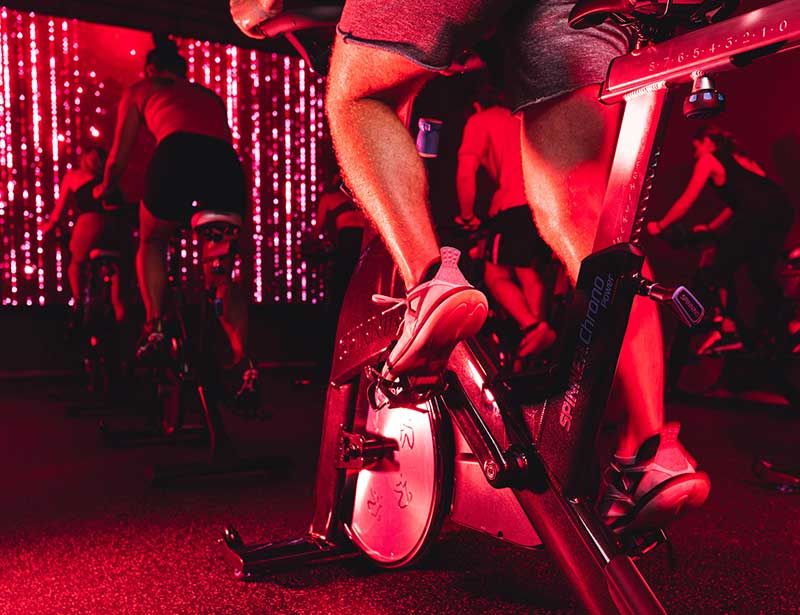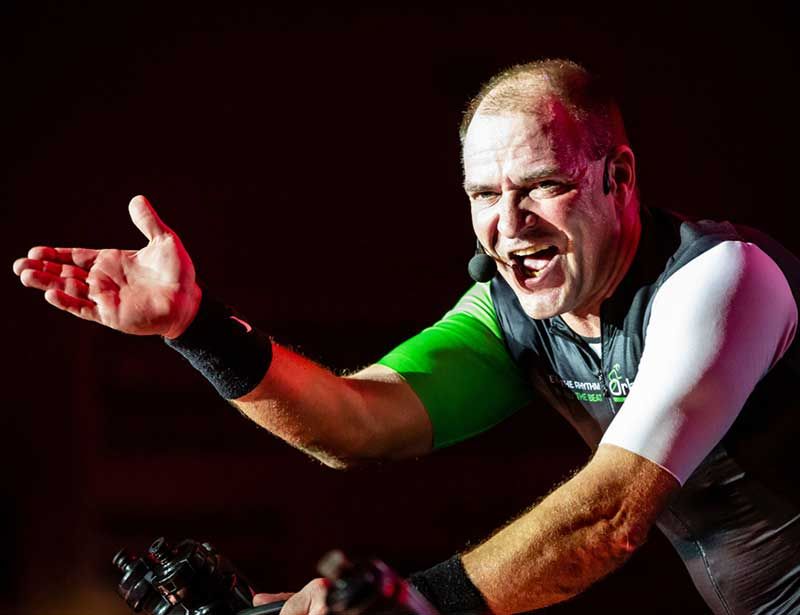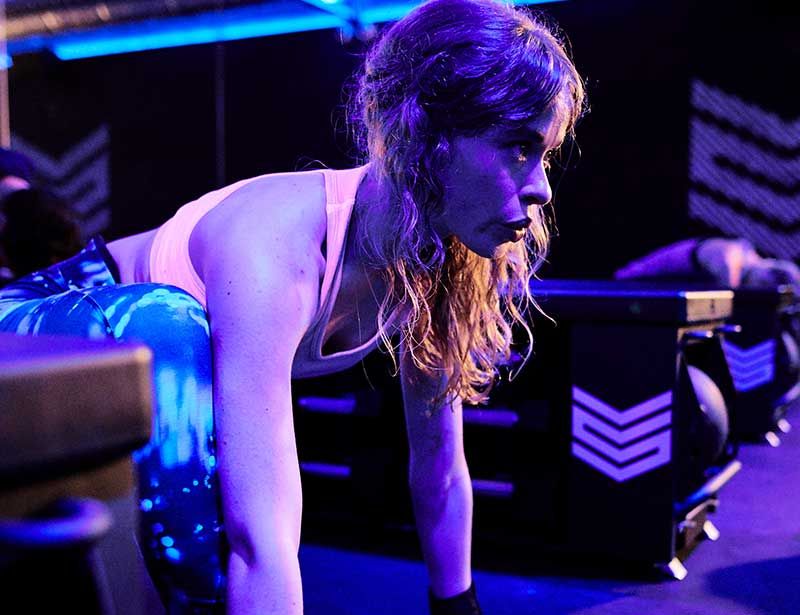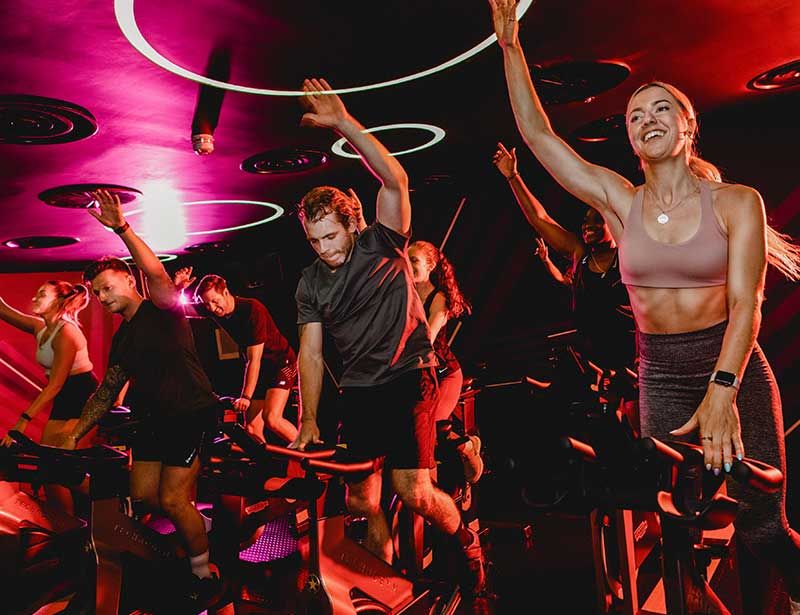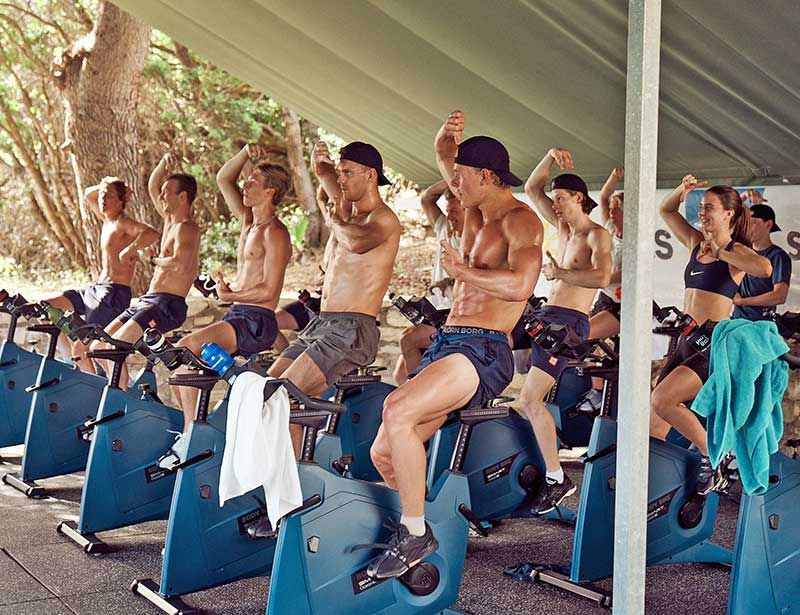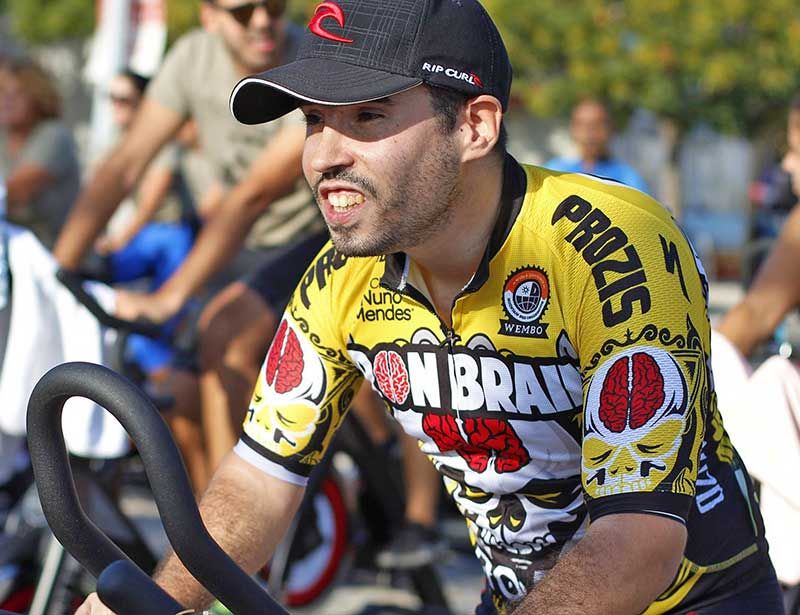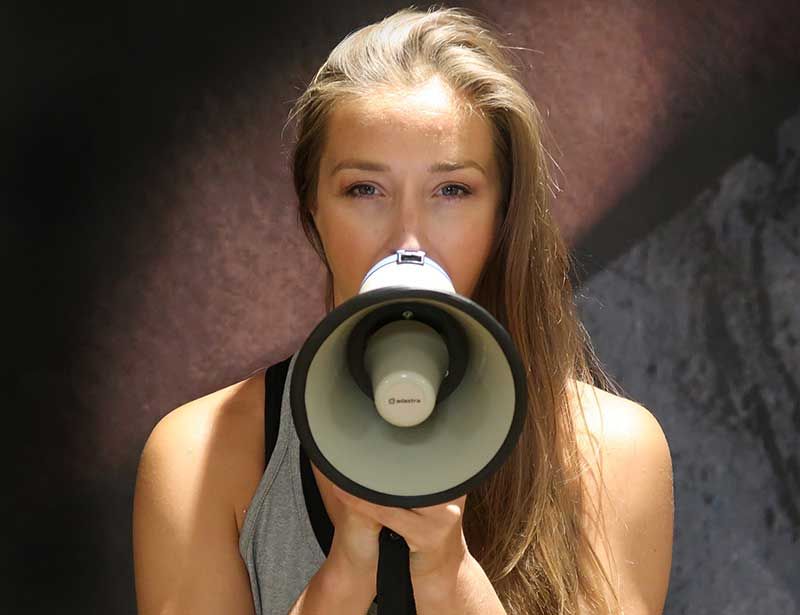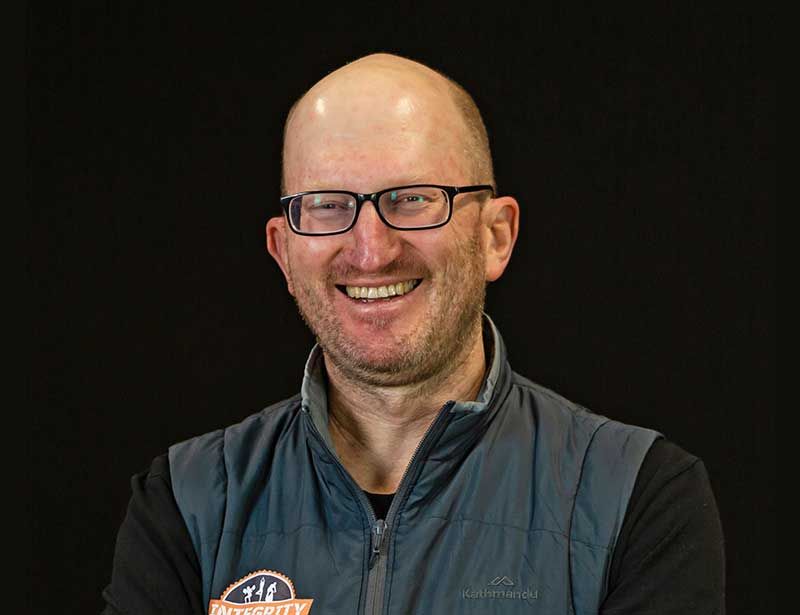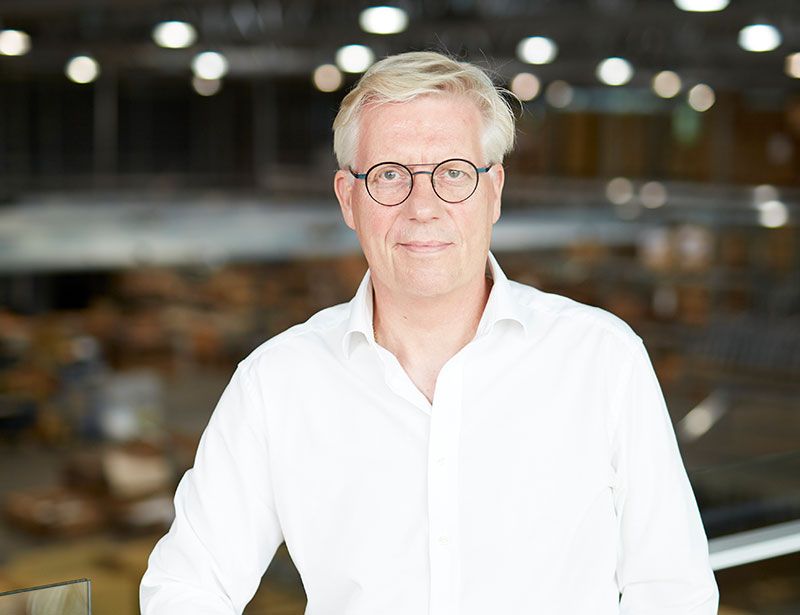Jon Brady
Can you describe the Midtown offering?
Midtown is a sports resort where everything you could want to do in terms of activity and movement is available in a luxury, high-touch environment that’s all about community and personal attention.
We currently have eight huge, fully-owned clubs – anything from 200,000sq ft to 700,000sq ft of indoor space alone – with multiple pools, tennis courts, fitness spaces, spas, sports courts and in-club boutique studios. In Chicago, there’s also an on-site hotel and we plan to do more of these.
At the moment, we have four properties with what we currently consider to be our blueprint offering: Chicago, Bannockburn, Willowbrook and Rochester in New York State. The latter three were remodelled during lockdown, which at Bannockburn and Rochester meant a US$15m investment in each club. These clubs all now have the same studios, same concepts, same look and feel, same indoor and outdoor facilities.
“The way we see it: we’ve had a promotion over the last 15 months! Midtown has gone from being members’ third space to being their second space”
Three other clubs – Atlanta, Montreal and Palatine – are in preliminary planning for a similar remodel, with timing subject to how well we come out of COVID. Things are still changing daily on that front – only today, we’ve received notification that masks will have to be worn again in New York State – and we’re yet to see how much of an impact the Delta variant has.
It’s only our club in Weston, Florida, where we’re holding off on the remodel for a while, as we spent US$5m replacing all 26 outdoor tennis courts only three years ago.
All eight clubs do have some boutique elements, though, because we’ve been testing our concept for six or seven years. When we identified the boutiques as our biggest threat, we built studios in other clubs before fully deploying in our Chicago flagship. Our indoor cycling concept Ride, for example, was originally tested in Palatine and Montreal.
How are your clubs performing as we emerge from COVID?
Performance varies, as some clubs have been open longer than others; we’re tracking attendance on a daily basis and we’re finding that time re-open is the most important factor. Each club is showing a very similar trend line, and very similar timeline, in growth of member numbers from date of re-opening.
Montreal, for example, only re-opened six weeks ago [interview conducted 3 August 2021] and member numbers are just under 50 per cent of February 2020 figures. In Atlanta, which was the first club to re-open after only a few months of closure, we’re up to almost 83 per cent. In Chicago, it’s nearly 80 per cent. The rest are around 60–65 per cent.
How has group exercise recovered?
Group exercise has recovered surprisingly well: as a percentage of check-ins, we’ve actually had more people doing group exercise than pre-COVID.
This in spite of the fact that we weren’t able to offer any indoor classes until February 2021; in Montreal, we still can’t. However, we’ve done a lot of outdoor classes and, even with the cold winters in places like Chicago, they’ve been incredibly popular.
“Group exercise has recovered surprisingly well: as a percentage of check-ins, we’ve actually had more people doing group exercise than pre-COVID”
In Chicago, we adapted an outdoor space in the parking garage, installing wind-breakers and Typhoon heaters, and we took bikes and other equipment out there. We also partnered with clothing brand Arcteryx, offering workshops for our members to learn how to layer for outdoor exercise.
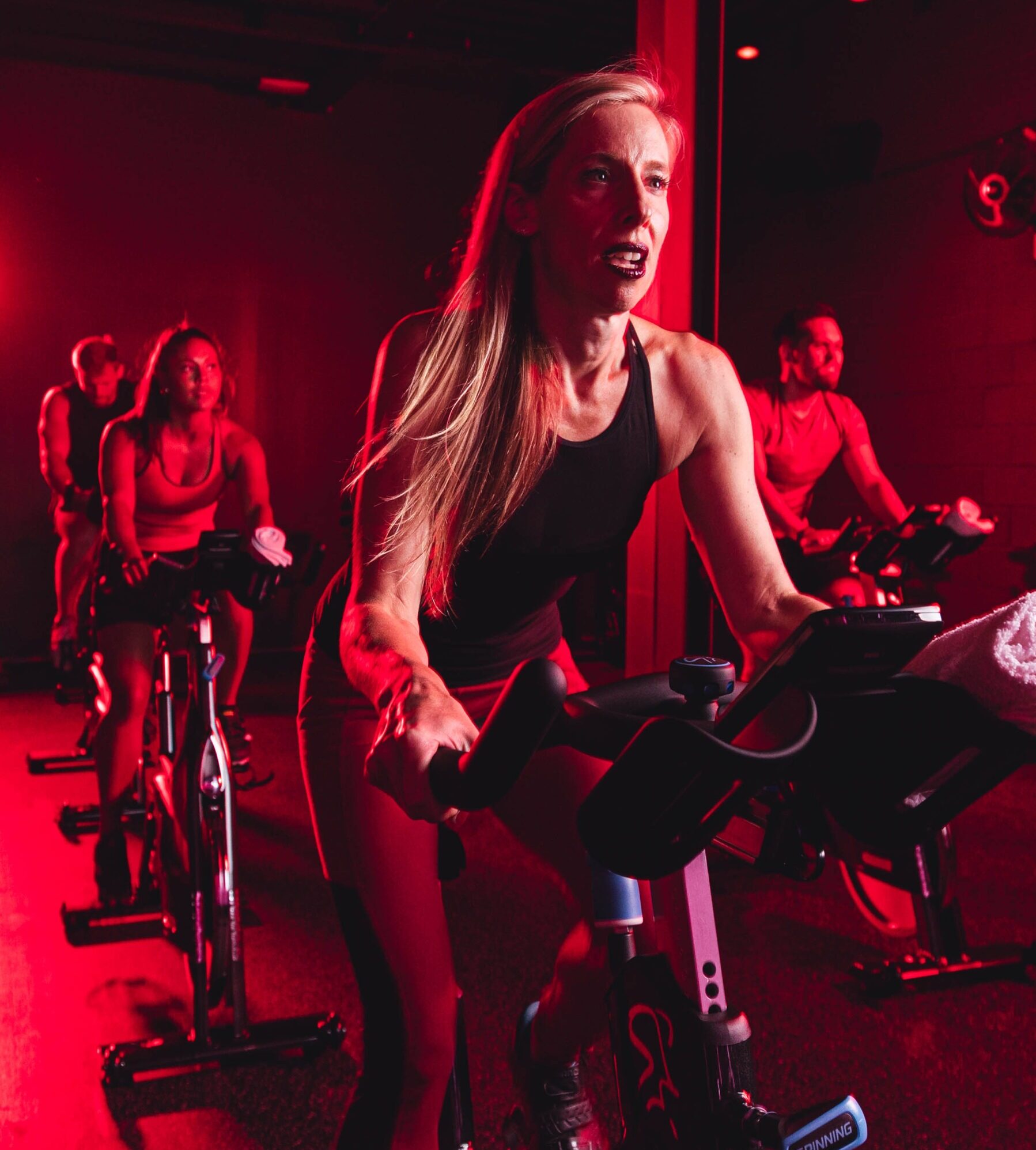
However, although group exercise is doing well overall – and Samadhi and Arena in particular – Ride is lagging behind. Across all our clubs and all our Ride programmes, Ride is the slowest to come back. We’re seeing similar numbers of members taking part as before, but they’re doing it less often, taking part in other activities they may have discovered and enjoyed during lockdown. As a result, average Ride class sizes are around half those of other classes.
Why is Ride lagging behind?
At this stage, we just don’t know. What I would say is that we keep an eye on the boutique competition, and the cycling studios we’ve visited are sitting at around 20–30 per cent capacity at the moment. So, it seems the challenges aren’t unique to us.
Ride has always been a very popular studio since it first launched in 2017/2018 – a highly immersive, experiential space with a rock concert feel, including a giant screen and graphics that respond to the audio. And, of course, incredible instructors.
“Ride is lagging behind. We’re seeing similar numbers of members taking part as before, but they’re doing it less often.”
It also ticks all the boxes post-COVID: our bikes are now spaced 6ft apart – the rest are still outdoors – so members have their own clearly defined workout space. Plus, Ride is doing OK for virtual classes and THE TRIP: we’re getting similar attendance at these classes as before.
And yet, other than in Florida where it’s too hot to cycle outside, members seem hesitant to move indoors for their live cycling classes. In fact, in Chicago, all these classes remain outdoors, with just virtual in the studio.
We are looking to transition back inside in September. However, we need to understand why the lag has been happening and we’re starting to ask ourselves some challenging questions about the live experience. Is the atmosphere and the technicolour journey – the very thing that proved so successful before – what members want now? Will and should indoor cycling come back in the same format, or have mindsets shifted during COVID?
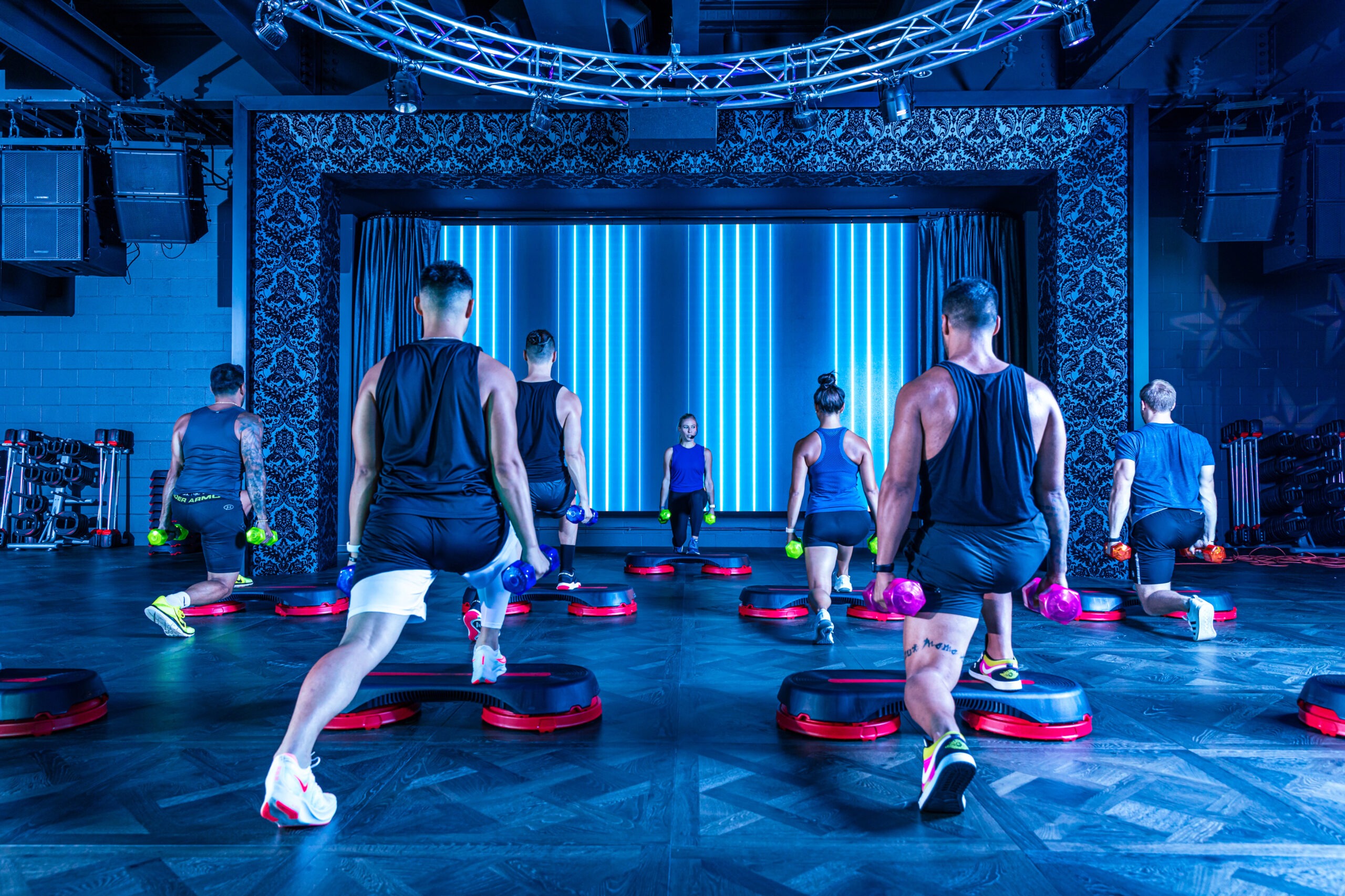
What might Ride look like in the future?
We’re taking a breath and taking stock, as it’s very early days: attendance may simply come back as time goes on. It’s also important to really look at the data rather than making kneejerk decisions. For example, we previously found that cycling drove lower overall attendance than yoga in our Rochester club, but also brought in more unique users than yoga. It’s an important part of the mix.
Nevertheless, we are trying to work out if the environment needs to change. Have people enjoyed outdoor cycling classes so much that we need to replicate this feeling in our studios? Do we need to move away from the ‘small dark box’ design and make it feel more like you’re outside in nature?
Some of the new AV components we developed for our relaunch include a ride through the Californian redwood forest, as opposed to the sci-fi worlds of THE TRIP, so we can test all this out and see what triggers more usage.
Another question: do we – and other cycling boutiques, for that matter – need to revisit our model? At 800–1,000sq ft, Ride is our smallest studio and it’s historically been a tightly packed community experience. That’s true whether it’s a VIBE or PWR class, our rhythm and power-based signature concepts. But what if people are now seeking more of a solo ride experience, rather than an all-in-it-together buzz?
“We aren’t just a place to work out any more. It isn’t just about fitness. Our sector needs to focus on how we make people feel – how we make them feel good.”
Then there are questions like: what does Peloton buying Precor mean, other than for the manufacturing capacity? Will there be an impact on what can be offered for clubs? And is the high use of the Peloton bikes on our fitness floors already impacting attendance in our Ride studios?
We’re working on a few ideas at the moment which we’ll try out with members – current riders and those new to it – and ask if it’s what they’re looking for. Instead of differentiating via training styles – rhythm vs power, for example – it may be that we need to differentiate by indoor versus outdoor, dark rooms and fantasy worlds versus individual escapism into the countryside. We’ll see.
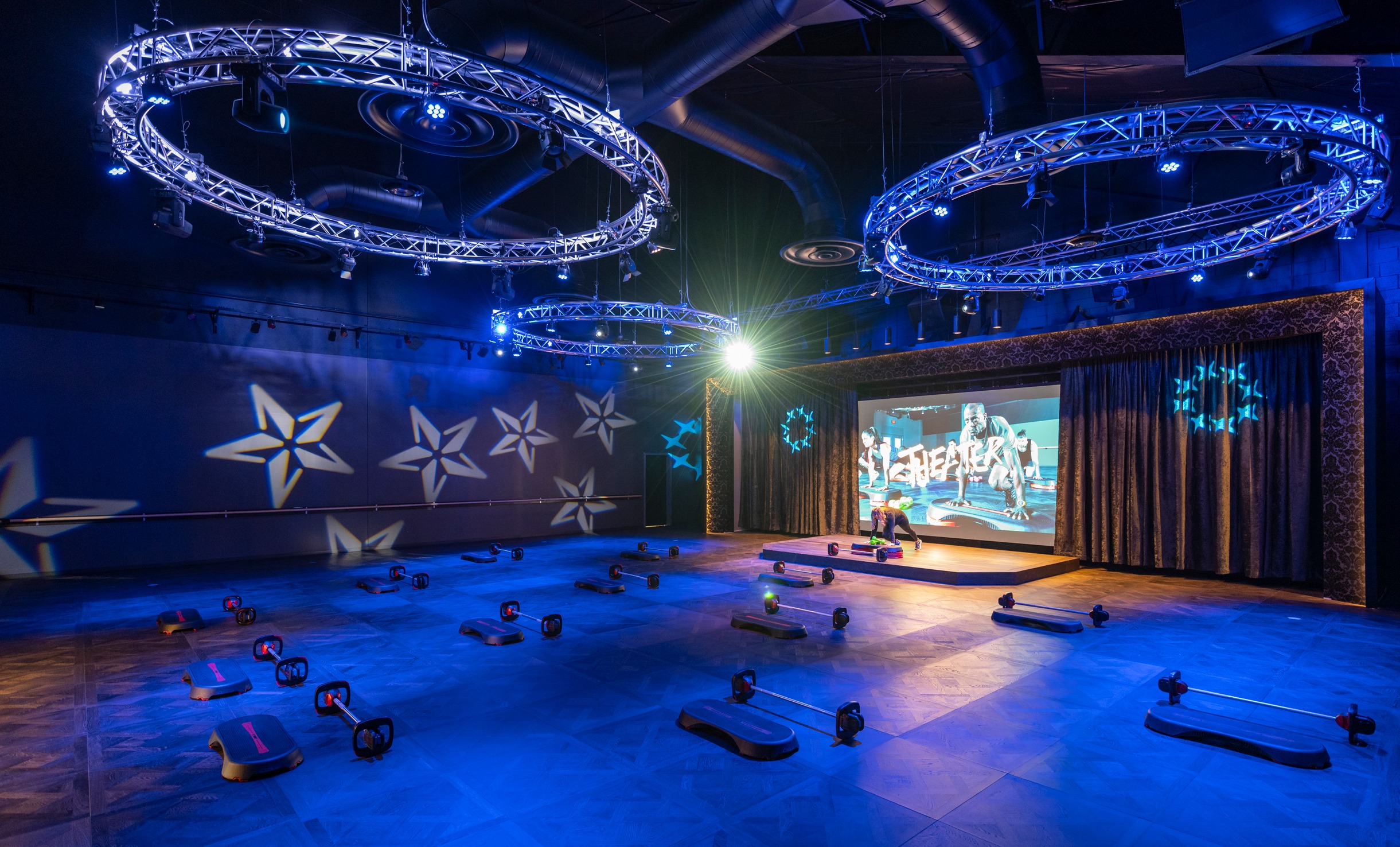
Certainly we’ve invested a lot of time, money and effort in the Ride concept and we’re not going to shrug our shoulders and accept that people are now doing something else instead. Something else as well, yes – we’re all about variety – but not instead. We’ll apply our ‘better than yesterday’ core value and identify what needs to be done to meet members’ needs today and tomorrow.
What do you see as the role for the sector coming out of COVID?
Interestingly, since clubs re-opened, we’ve seen usage of the on-demand classes in our app fall off a cliff to such a degree that we’ve stopped doing them. People are craving human connection.
And in clubs like ours, with all the space we have available, that isn’t just about coming to us to exercise. Instead of working from their home desks, members are coming to the club to work. To be around people. The way we see it: we’ve had a promotion over the last 15 months! Midtown has gone from being members’ third space to being their second space.
And this is so important for the whole sector to understand. We aren’t just a place to work out any more. It isn’t just about fitness. We’ve become more important within people’s lifestyles. We need to responsibly move with this shift, no longer focusing on weight loss or how much exercise people ‘have to do’, but on how we make people feel – how we make them feel good.
Inspired by COVID. Designed for the future.
Event quality in every class
BikeStreamers, Denmark
Created by Kim Lahn Lindgaard, Jesper ‘JAS’ Sörensen, Rikke Adamsen Kirkegaard and Jesper Skovhave – and now with permanent staff instructors Stephen Rasmussen and Lone Christensen also on-board – BikeStreamers was launched in September 2020 when, in Lindgaard’s words, the founders were “going crazy in lockdown and wanted to do something”.
An online streaming service charging 159 Danish Krone (€21.20) a month, or 25 Danish Krone (€3.33) per class, BikeStreamers provides live streamed and on-demand indoor cycling classes, currently all in Danish.
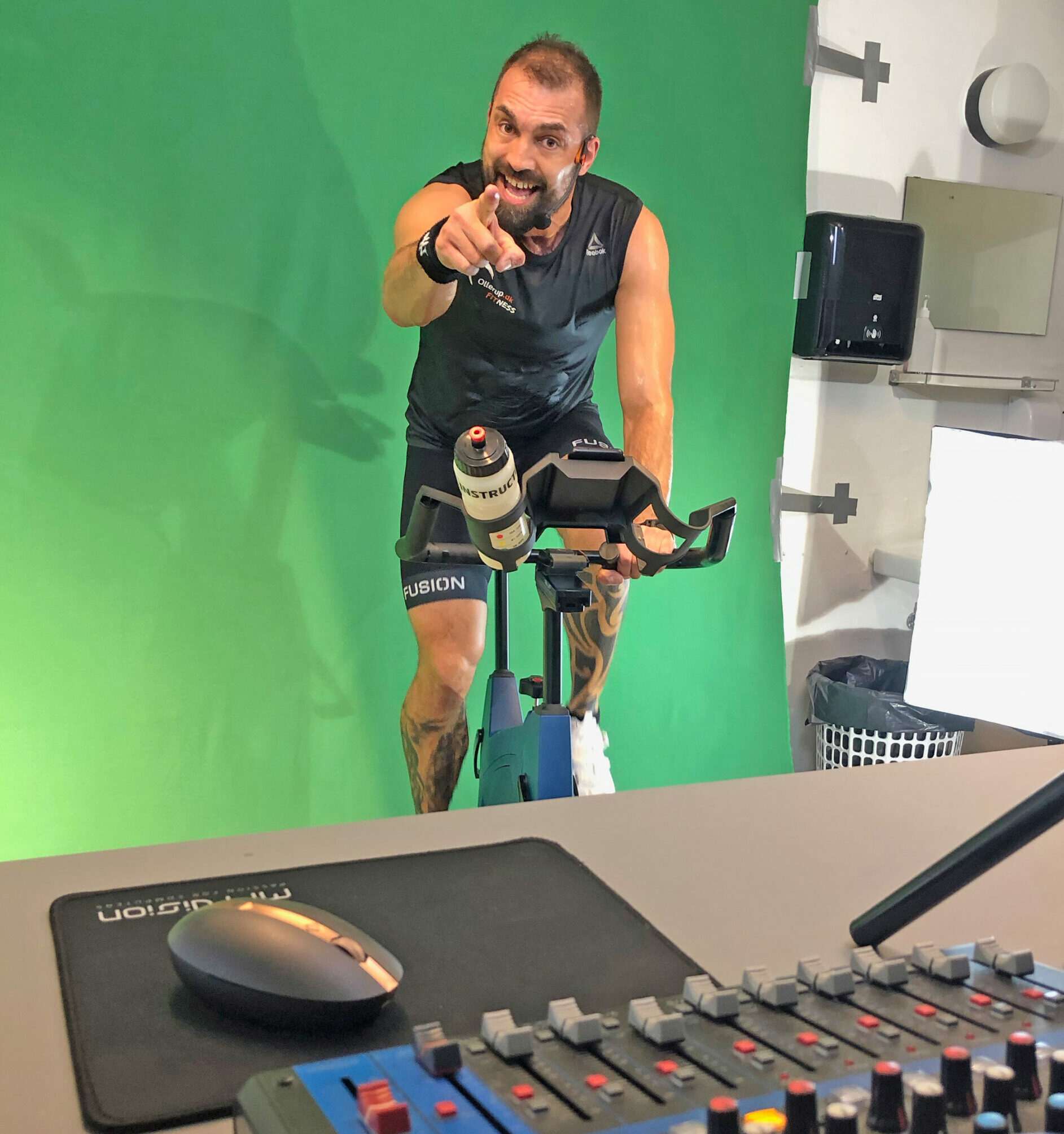
Between five and nine new classes are streamed every week – summer sits at the lower end of that scale while customers enjoy the great outdoors – with each new class then feeding in to a constantly refreshed back library of around 150 on-demand classes. Special online events are also offered on the occasional Saturday between September and May.
We chat to the founders to find out more…
What’s behind the scenes at BikeStreamers?
All sessions are led by the country’s top talent in the shape of us four founders, our two staff members and the occasional guest instructor.
We don’t have one central studio, because we all live in different parts of Denmark. Instead, the four of us have each spent between €4,000 and €7,000 creating our own green screen areas at home – sometimes on the other side of our bedrooms! – from which we broadcast, with the classes streaming on our Boon.tv/bikestreamers channel. We each have a camera, mixers, screens, microphones, great lighting, a streaming PC and really good internet connections to ensure the best possible delivery of our classes.
Guest instructors don’t tend to have this set-up, so their classes are about personality. But in our classes, the green screen allows us to cycle against the backdrop of a virtual world, courtesy of either Intelligent Cycling or iQniter. It ensures the customer experience is seamless, whichever of us they’re cycling with.
“We’ve each spent between €4,000 and €7,000 creating our own green screen areas at home”
We pay almost 50 per cent of our revenues to Boon, but it negotiates all music usage licences, which means we can play whatever commercial tracks we like in our classes.
How has BikeStreamers done?
We have a strong community of around 800+ people on social media, all of whom have done our classes at some point.
At the moment, we have over 300 monthly subscribers; it was close to 400 before the country’s gyms re-opened. It’s summer here at the moment though [interview conducted 2 July 21] and people want to be outside, so they don’t want to commit to an unlimited monthly package with us. We expect to see monthly subscribers go up again in the colder months, but for now, we have a lot of people paying on a class-by-class basis.
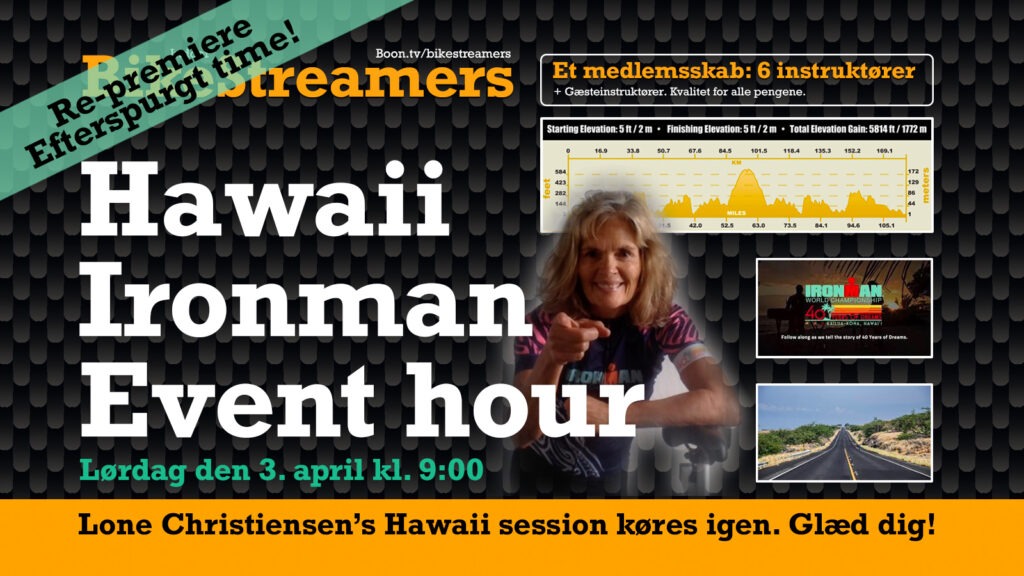
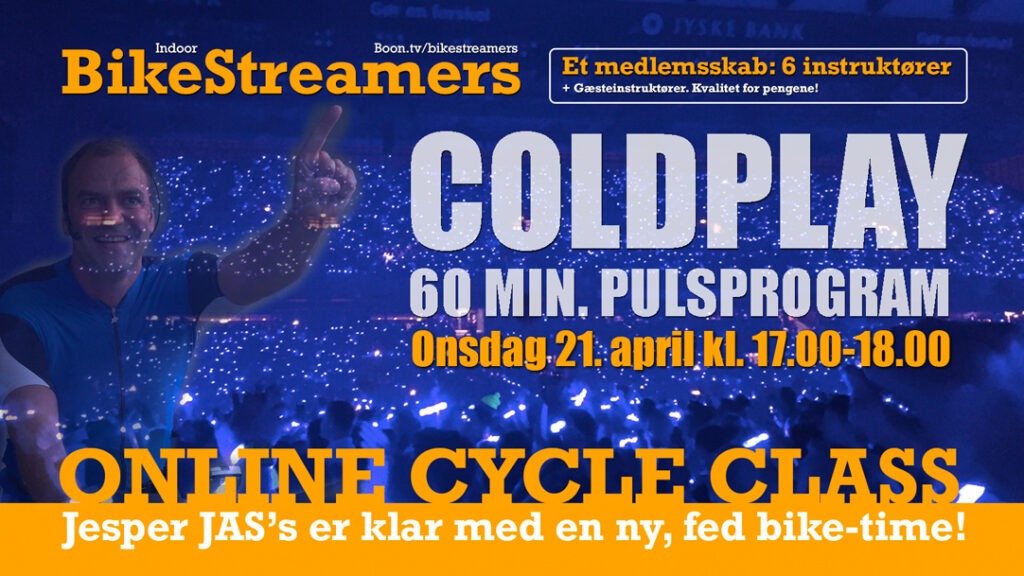
We also have a few clubs that have bought a BikeStreamers package, so they can run our virtual classes on big screens in their studios. Clubs tend to focus on our on-demand classes for flexibility of scheduling.
We’ve been really pleased by how little our numbers have been affected by gyms re-opening. We have very loyal customers – many of whom also attend our in-person classes at the clubs where we instruct – and we’re finding they’re continuing to train with us as well as going back to the gym. They’re telling us they really appreciate the flexibility of training from home, doing things like 9.00pm classes that they’d never do in-club.
We do have perhaps 10–20 individuals who are only using BikeStreamers, but most of our customers have a gym membership too.
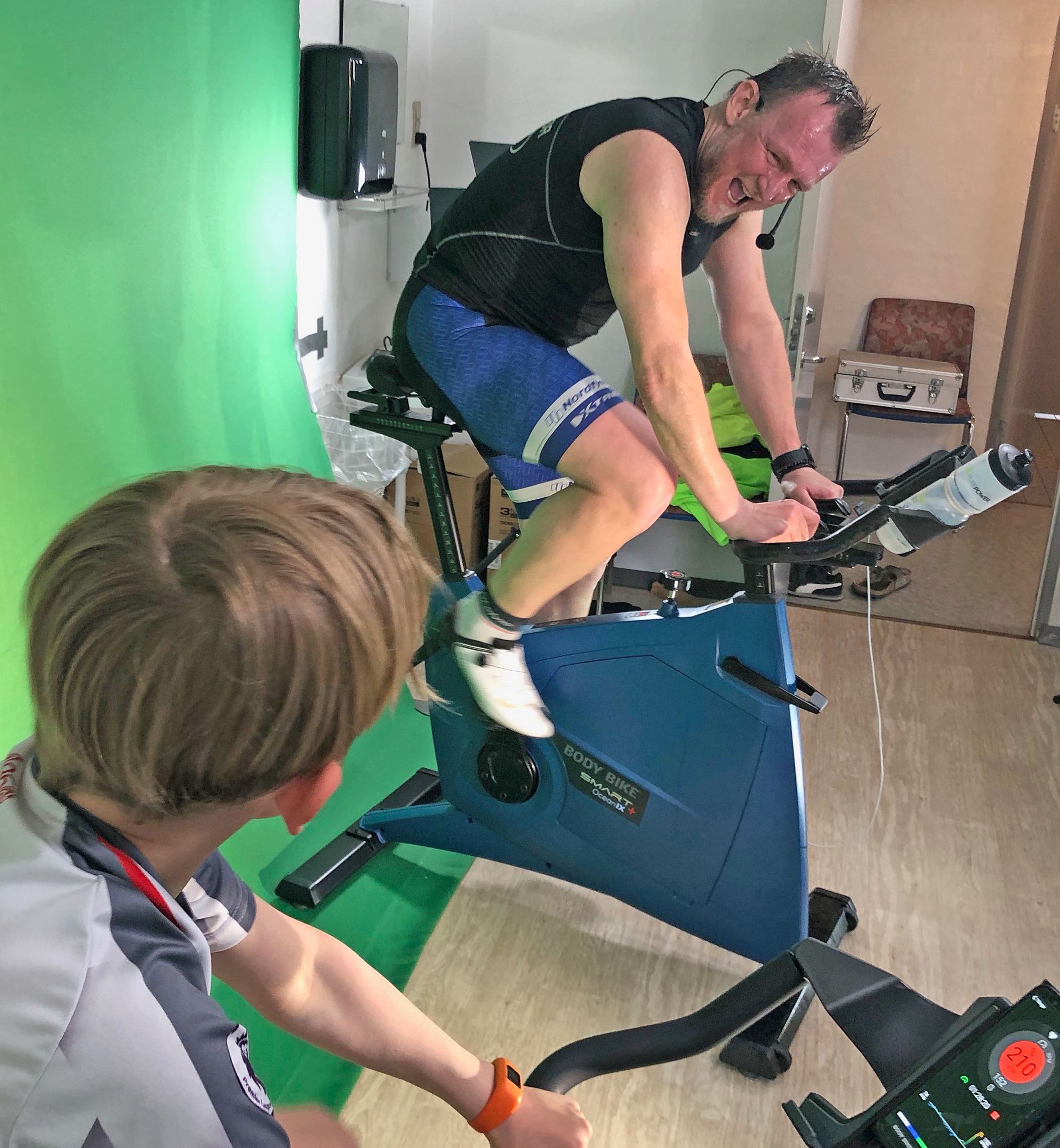
The challenge, of course, is that before people sign up with us, they first need an indoor bike; it’s not like an online yoga class where all you need is a mat and your own bodyweight. However, we’re aware of 800–1,000 people in Denmark who’ve bought a BODY BIKE during lockdown as a response to BikeStreamers’ efforts alone. In a country of 5.5 million population, that’s not bad going!
What’s the secret of your success?
We’re some of Denmark’s most in-demand instructors, well-known for instructing at mass live events as well as classes in our local clubs. We already have very loyal followings.
Then there’s the quality of BikeStreamers’ classes. It’s a high-level experience every time, from music and mixing to coaching and visuals. There’s simply no bad class. The way we view it: each of our classes can have up to 300 participants, which puts them on the same level as a mass event. Our class quality needs to be consistent with that.
“In-club, you can deliver the same class a number of times, but online you can’t sell the same class twice.”
Every single session is new, too. In-club, you can deliver the same class a number of times, but online you can’t sell the same class twice. We have lots of themed classes with fresh music and visuals every time.
The other important point is that we understand how to keep people motivated remotely. Online requires a lot of energy from you as an instructor, as participants don’t get the buzz off each other. You don’t get any feedback from the floor, either. It’s just you and a camera, and you have to learn to perform to it.
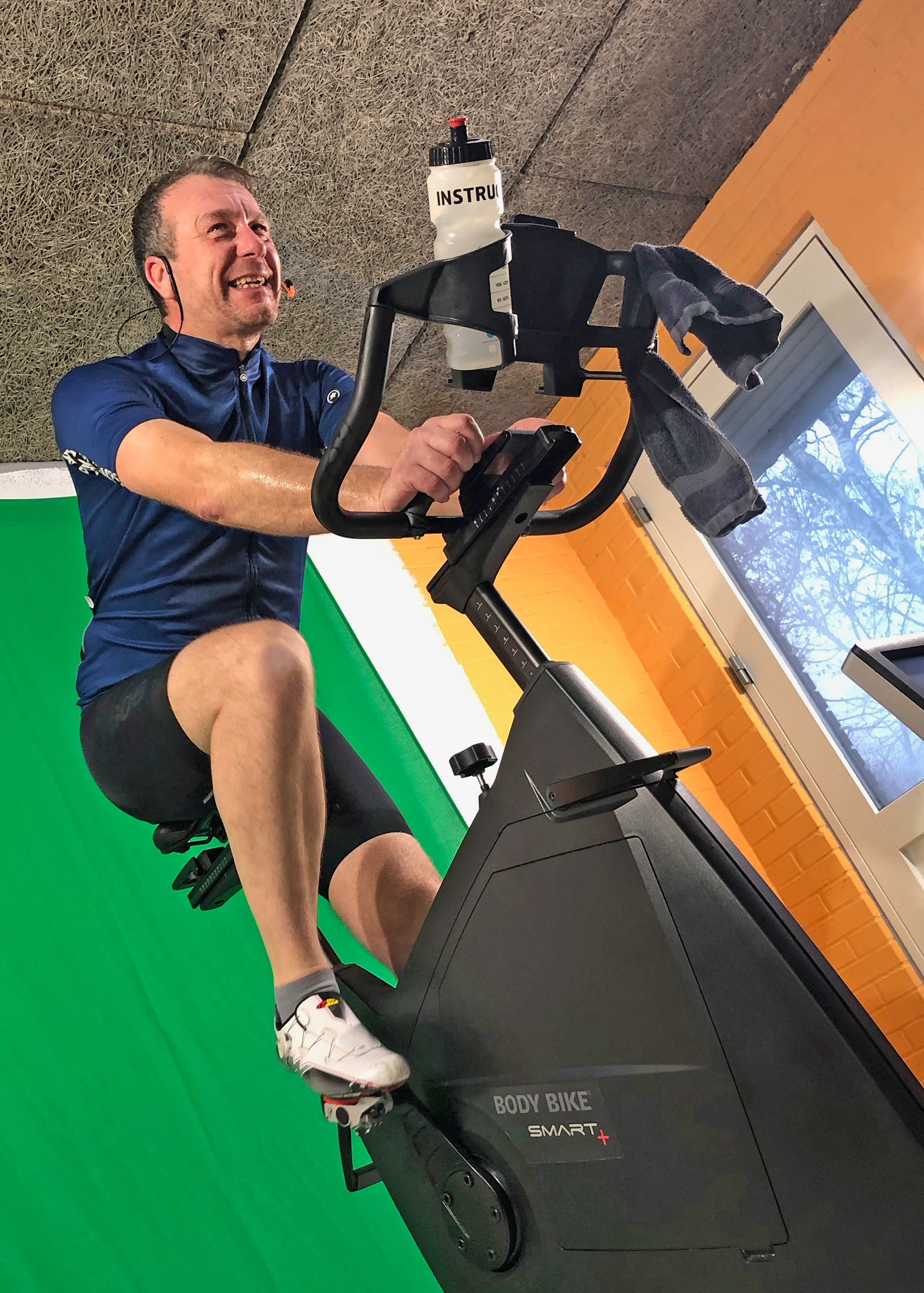
We continually work to make the experience even better, too. We get a lot of really good, constructive feedback on chat and through our Facebook group, and we build that in to our programming.
It’s also a fact that, when you see yourself on video, you see a lot you want to change! You realise you say the same things over and over, for example. But it’s a great way to learn – to go back, see how you did, do it better next time. Honestly, every instructor should video themselves at least once a month. They’ll quickly see what they could do better.
What are your plans moving forward?
First of all, we’re going to keep going, continuing to build and serve our fantastic community in Denmark. We’re also building our own website rather than relying on Facebook alone.
“Every instructor should video themselves at least once a month. They’ll quickly see what they could do better.”
We’re also looking at options to expand internationally, taking our high-quality instruction to new markets. In Denmark, we’ve grown mostly by word-of-mouth and people knowing us as instructors, as well as a bit of Facebook marketing, so international growth will be harder. But even if we only serve a fraction of the overseas market, that’s fine with us as delivery will be fairly straightforward: we’ll simply do each class twice, once in Danish and once in English, with each language having its own Boon.tv channel – and possibly a different pricing structure depending on the market.
Finally – and this is one not just for us, but for the whole market – is a need to address the fact that, in Denmark at least, the average age of indoor cycling participants is going up by nine months every year. It going to be a scary future if we can’t find ways to bring younger people in to this discipline, making it fun for them.
An opportunity to innovate
BODY BIKE, Denmark
“As a Danish manufacturer, we’ve always had a strong focus on the environmental agenda,” says BODY BIKE CEO Uffe A Olesen. “When we develop our products, it’s always with an eye on what we can do to help create a better world.
“Until now, the clearest evidence of this lay in our BODY BIKE SMART®+ OceanIX: the world’s first indoor cycling bike to be built using recycled plastic from commercial fishing nets. These nets might otherwise be discarded in the oceans – part of a broader crisis of plastic pollution that I could no longer sit back and passively watch.
“We have the capacity in our factory to produce BBCARGO as well as BODY BIKE and it just feels like the next ‘right thing to do’”
“OceanIX is therefore something we’re incredibly proud of. It isn’t just a piece of gym equipment. It’s part of a cause – something we created because it was the right thing to do. Having done so without any compromise in the product quality or ride experience, it’s proving to be a popular choice among those wishing to do their bit for the planet.”
Inspiration in challenging times
He continues: “Inspired by this success, and by the growing levels of eco-consciousness across the globe, we had already begun to look at an entirely new market for our company: electric road bikes, and specifically eCargo bikes.
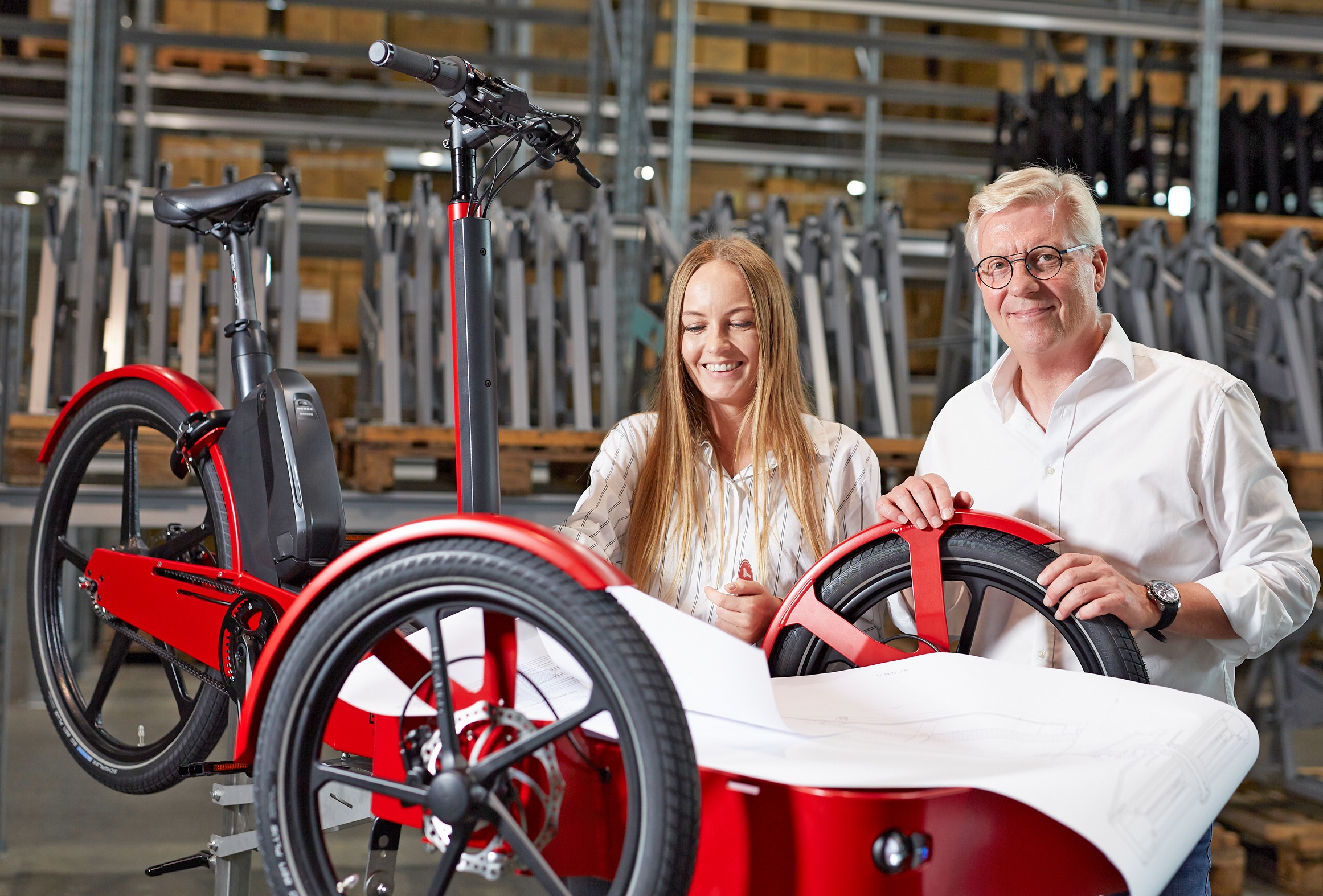
“This is a market that’s seeing huge growth. Even by 2018, eCargo bike sales in trailblazing Germany had surpassed those of electric cars, growing by 80 per cent that year. Today, everyone from Walmart and IKEA to UPS and Sainsbury’s is using them for shorter-distance deliveries.
“With analysis suggesting that 51 per cent of all motorised trips related to goods transport in EU cities could be done by bike, European eCargo sales are now predicted to hit 1 million bikes for commercial deliveries and a further 1 million family bikes by 2030. Many cities are already adapting their infrastructures accordingly.
“So, we did our research and knew we had an opportunity to create a very special product that would redefine the market. The manufacturing processes were already there in our 12,000sq m Danish factory to support such a product: we’ve long pushed the limits to create the perfect indoor bike, with each still carefully hand-crafted to the highest standards, and we were ready to apply that same precision design and construction quality to eCargo.
“eCargo also fits perfectly with our company’s sustainable approach. It’s a bit of a departure from our usual fitness sector territory, but we have the capacity in our factory to produce BBCARGO as well as BODY BIKE and it just feels like the next ‘right thing to do’.”
He adds: “From a human perspective, it also gave our team something positive to focus on during lockdown – an inspirational project to keep motivation high in what could otherwise have been a very depressing time. When COVID brought the gym sector almost to a standstill in 2020, we saw it as a window in which to accelerate this project.”
Introducing BBCARGO
Olesen continues: “Fast-forward to today and, after rigorous development and testing, we’re hugely excited to unveil the BBCARGO bike.
“We knew we had an opportunity to create a very special product that would redefine the eCargo bike market”
“There’s just so much to say about this bike, from its world-class design and cherry-picked, premium quality components to its flexibility. This isn’t just any cargo bike. We talk about it as a ‘find, keep, love’ product – something you will have done your research on and will be so happy you’ve found.
“With its 150kg payload, it’s one of the strongest three-sheeled eCargo bikes on the market, while 85Nm of torque power from its Shimano motor ensures an easy ride even when fully loaded. There are also two driving modes courtesy of our unique tilt mechanism: Static provides a locked and fully stable position, while Dynamic allows the bike to naturally tilt to the sides.
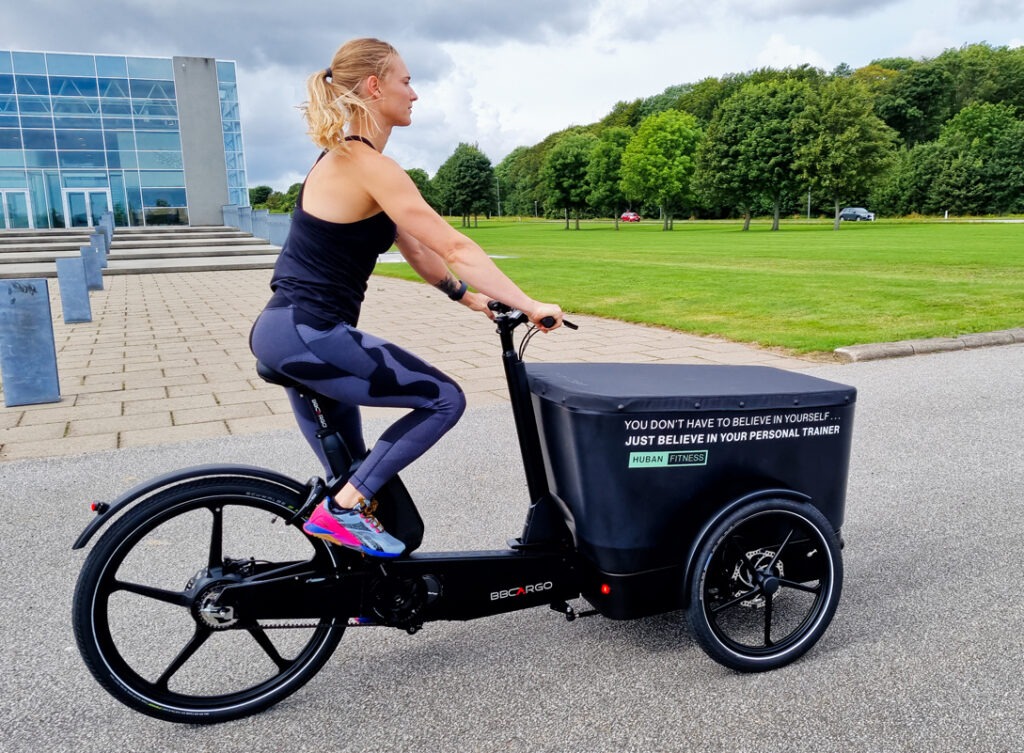
“And the options for customisation are extensive. The pure aluminium bike frame is available in five colours, while the recyclable plastic cargo box can be created in whatever RAL colour you need for your brand; if you opt for black or grey, bearing in mind the box can also be fully branded, the plastic is recycled as well as recyclable.
“The box is modular too: use it with a cover or a lid, with or without a ‘front door’. Alternatively, use your BBCARGO without the box altogether.
“One bike really does offer infinite possibilities. It’s an honest, authentic, zero-compromise product that truly delivers what it says on the label. We’re so excited by the road ahead.”
Go where your clients are
’’I’m going to be testing BBCARGO as part of a pilot project and I’m thrilled to have been selected,” says Michella Huban, a personal trainer in Aalborg, Denmark.
“During lockdown, I found myself training some of my clients outdoors. It would have been so cool to have been able to travel by BBCARGO, transporting everything I needed for each session in the cargo box.
“That’s why I’m so keen to test drive this beautiful bike. There’s so much space in the cargo box for all my equipment, plus it will help me reduce my carbon footprint as I can leave the car at home and travel by BBCARGO when I train local clients.”
She adds: “It’s a fantastic marketing tool, too, with great options to put my brand on the box. I’m excited about the opportunity to get my name seen and promote my services as I travel between clients.
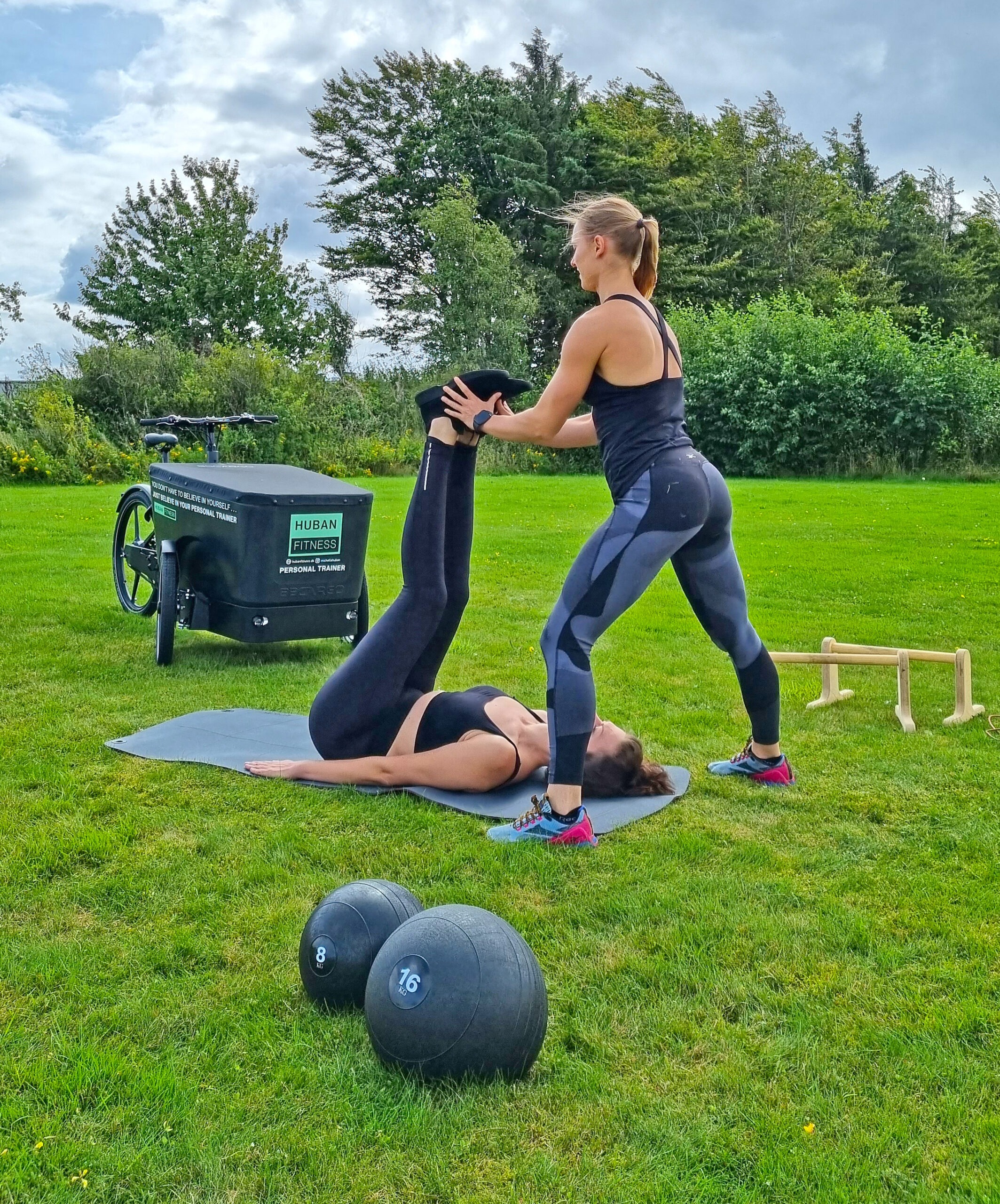
“Then there are all the other benefits beyond the features of the bike itself: no parking restrictions or risk of parking fines, plus an ability to cut through the traffic and even cycle where cars aren’t allowed to go. All the data suggests BBCARGO will make shorter journeys – under 5km – quicker than going by car, too.
“As a personal trainer, I also think it gives a much better impression if you cycle to your clients rather than turning up in the car. It’s about leading by example, isn’t it?”
Becoming online enter-trainers
Virtual Fitness Studio, Philippines
“I’ve lost count of the number of times we’ve been locked down,” says Michael Martinez, co-founder of Virtual Fitness Studio (VFS) in Manila, Philippines. “It’s been close to a permanent state of affairs since March 2020 and, while I hesitate to call this the ‘new normal’, certainly every business has had to find ways to adapt and thrive.
“Our own story, which I hope inspires others, is this. My VFS co-founders Belen Choi and Glenda Evangelista and I are all fitness instructors – we have been for many years – with the common denominator being Les Mills RPM.
“When health clubs across the Philippines closed in March 2020, although there was a fair amount of online fitness, there were hardly any online RPM classes. Chatting with friends, we felt this was a gap in the market so, while none of us had experience of running fitness operations – we all have very different day jobs out of the sector – we decided to create an online group exercise studio.
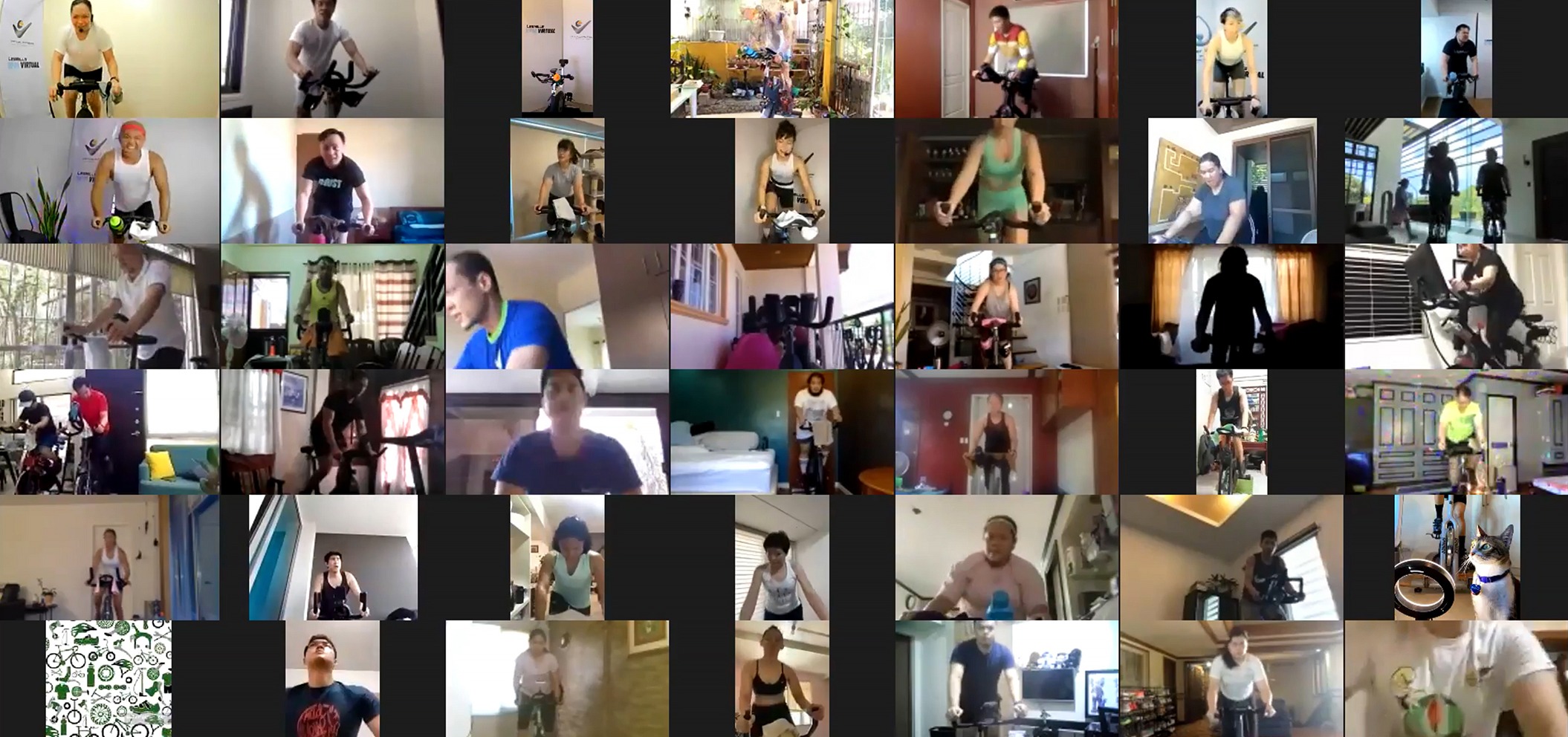
“We started from the ground up, driven by a love of teaching indoor cycling and a desire to contribute to our communities in lockdown, and launched VFS in November 2020. At that point, it was just RPM and it was free to participate. It was only in December 2020 that we introduced payment – still using Zoom as our platform – and over the months we’ve launched more programmes too.”
Creating human engagement
Martinez continues: “When we created VFS, we wanted to do it properly. In addition to world-class standards, internationally certified instructors and strong quality protocols, we decided that also meant conducting all classes in English.
“95 per cent of our members are in the Manila area, but we also have members in Singapore, Paris, Ireland, Japan and the US”
“As a result, while 95 per cent of our members are in the Manila area, we also have members in Singapore, Paris, Ireland, Japan and the US. That’s heart-warming when you consider how much online content is streamed from locations far closer to home.
“But I think it all comes down to the way we do things. We work hard to make all classes as engaging as if they were face-to-face. We talk about being ‘enter-trainers’, simultaneously training, inspiring and entertaining our members. We help them get the best results they can, but above all we create experiences that make them want to come back.
“And really, there’s no secret to engagement. It’s about going back to basics: logging on to class early to chat with participants, asking why they signed up and what their goals are that day. It’s about calling them out by name in class, correcting form if needed, praising them when they’ve done well, spotting and addressing those who need more encouragement. It sounds simple, but done well it makes a big difference.
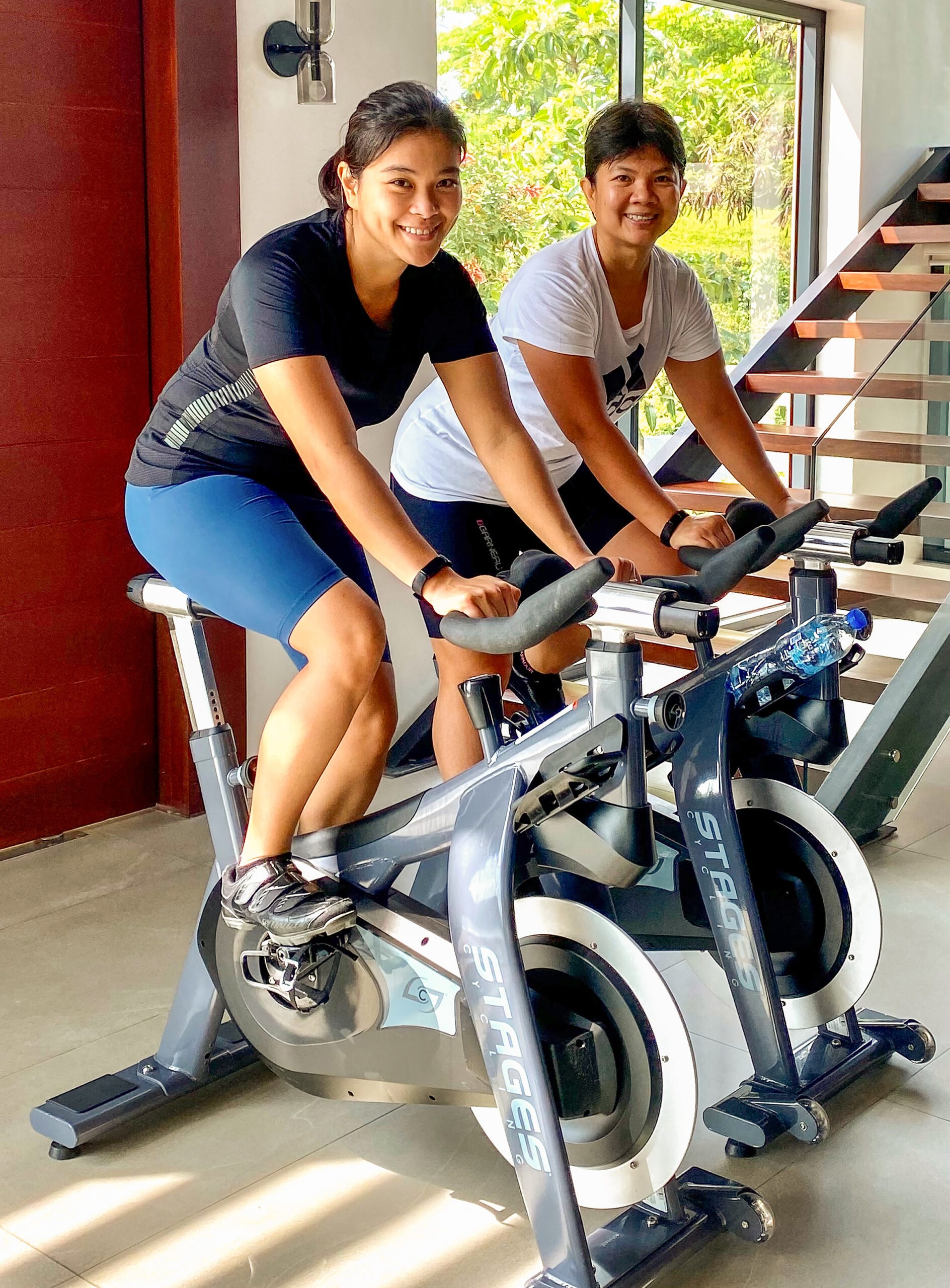
“There are important learnings when instructing online, though. You have to exaggerate your facial expressions and the way you speak. You have to be sharper at giving out cues and better at picking up on visual ones, learning how to quickly identify those who need your support from a class of 70 participants. Sometimes that can be as simple as asking everyone to give a thumbs-up if they’re all good, but other times you might have to work it out from a quick scroll across the screen. You have to see it as a buddy system, learning how to pick up on those who need you.
“In the end, it’s about focusing on customer satisfaction and human connection in everything you do, even though you aren’t in a room together.”
Responding to demand
He continues: “Our timetable currently includes freestyle yoga, Body Combat and freestyle cycling alongside RPM. We have a total of 25 weekly classes at the moment, of which 13 are RPM. [Figures as at 14 July 21].
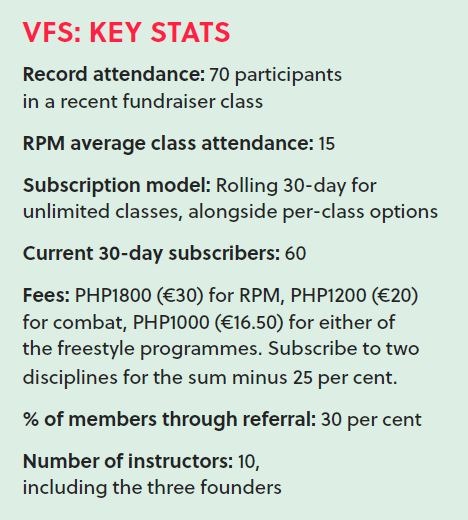
“Freestyle cycling was only introduced four weeks ago, but it’s already looking very promising. The content is choreographed by the instructor and could be anything from a themed pop music class with upper body work to a power racing session that trains you for outdoor rides.
“And we’re looking to further develop our timetable. We’re busy surveying members to see what new classes they’d like, but over the next three or four months we’re potentially looking to add a strength-based workout and maybe another indoor cycling programme.
“Ultimately, everything has to be about listening to customers. We take all feedback on-board – if members tell us a class is too easy or too hard, for example – and run regular surveys to check how we’re doing from a technical and a teaching perspective. We’re agile and ready to change to ensure we hit the sweet spot for our customers.
“Everyone has their equipment at home now, some even have cycling rooms with neon lighting, and they want to keep training with us”
“We’ve also shaped our future plans around member feedback. We were being asked what would happen with VFS once clubs re-open, and our answer was: ‘We’ll be here for as long as you’re still with us.’ Members were happy with that: everyone has their equipment at home now, some even have cycling rooms set up with neon lighting, and they want to keep training with us.
“Once things have settled down, though – maybe some time in 2022 – we’re also looking to set up a bricks and mortar boutique studio in Manila. This will allow us to serve our members with a face-to-face offer, but we’ll also optimise the productivity of each class by having a camera in the studio to live stream.
“But our online Virtual Fitness Studio will remain at the heart of what we do, hopefully with even more programmes and members over time. We love what we’re doing and want to keep sharing it with our community.”
Is recovery the new fitness?
If I think about the group cycling classes I’ve done, from rhythm to immersive to traditional ‘fitness cycling’, I struggle to think of (m)any where recovery was a real focus. There’s usually a token stretch track at the end. There are always some tracks where we pedal harder than others. But cycling concepts that have actively focused on recovery? Not really – and I started to wonder why.
We know the recovery time between workouts is key to extracting maximum gains from those workouts. Elite athletes have known that for years, and it’s presumably part of Peloton’s rationale in relaunching Peloton Yoga earlier this year. But what about recovery as an integral part of the workout experience?
Baking recovery in
What sparked my thinking was reading about a new initiative from London-based boutique operator Digme Fitness, which partnered with Hyperice during lockdown to offer at-home recovery programmes for its members. Getting in touch for this feature, I discovered this concept was now expanding in-club, with a dedicated ‘Recovery Space powered by Hyperice’ launched at its Moorgate studio last month. More on that in just a moment.
And what about during class? My thoughts moved on to Victus Soul, another London-based boutique whose founders I interviewed when the studio opened a few years back. Here, a full five to seven minutes of every HIIT class is spent on active recovery, with members educated around the importance of this. We’ve brought co-founder Paul Trendell in to share his insights as part of this RIDE HIGH discussion.
So, I started wondering, are other cycling operators missing a trick in not building more recovery into their class schedules, both from a physical and a mental health perspective? And certainly post-COVID – with many people’s fitness levels having taken a hit – might baking recovery into the programming itself make cycling more of an achievable re-entry point to regular exercise?
Our chats with experts from across the sector make for interesting reading…
A dedicated recovery space
Geoff Bamber – CEO, Digme Fitness
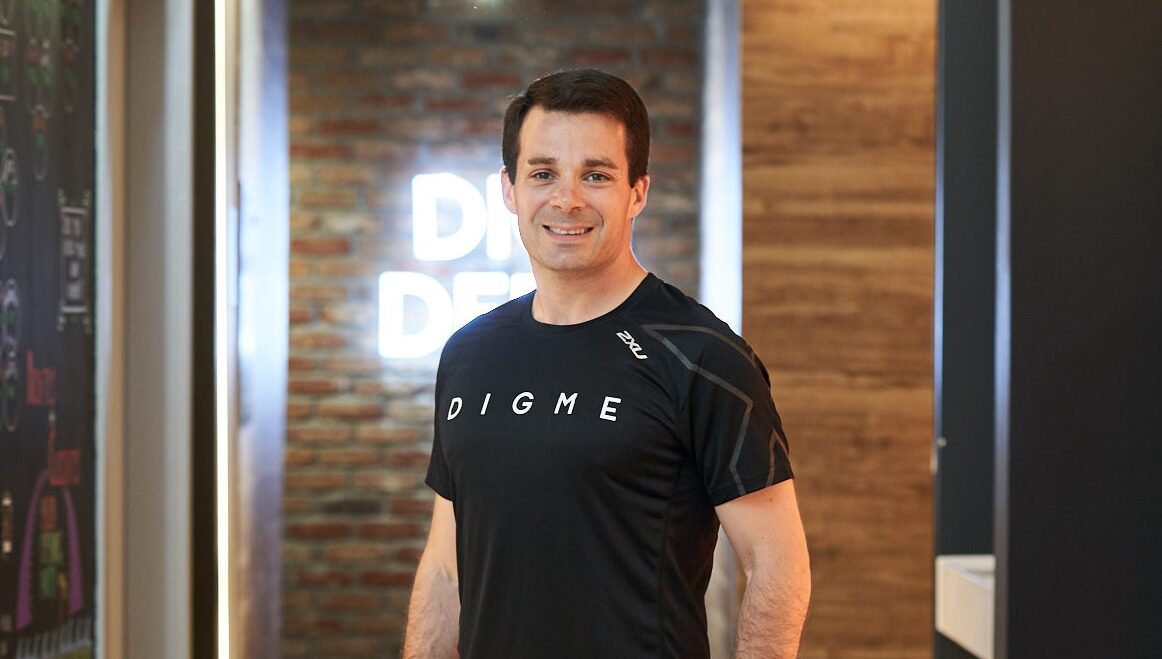
“In 2020, we witnessed an increased interest in 360° wellbeing, with our members starting to look at improving all aspects of health – not just exercise but also nutrition, sleep, stress and mindfulness. In the process, they became even savvier about their workouts and the tools needed to maximise and improve their performance. Recovery is, of course, a key part of that.
“Our digital fitness director Dan Little sums it up perfectly when he says: ‘We so often neglect the need for recovery, yet it provides us with the biggest advantages when approached correctly. I would actually go as far as to say that you don’t need to train more. You need to recover more and maximise your lifestyle with purpose and confidence through recovery training.’
At-home origins
“We therefore partnered with Hyperice – a brand that’s safely brought technology previously reserved for elite athletes to the mass market – to launch a new ‘Recover with Hyperice’ concept to our Digme at Home offering during lockdown. This was introduced in December 2020 as a series of on-demand videos focusing on activation, maintenance and recovery.
“Using the Hyperice Hypervolt percussion gun – which we sell through the Digme Shop – and led by Digme instructors Dan, Ben, Kate and Chloe, the guided sessions range from four to 24 minutes.
“We had thousands of members taking part in Digme at Home classes throughout lockdown, so our ‘Recover – Powered by Hyperice’ sessions were designed to complement these, each targeting different muscle groups so members could choose the most suitable one based on their activity.
“The launch went incredibly well – we sold out of the products in the first week – so we’ve now brought recovery into our studios, too. Our members want to be able to work out more frequently, avoid injury and maximise their performance. Our focus on recovery supports this.
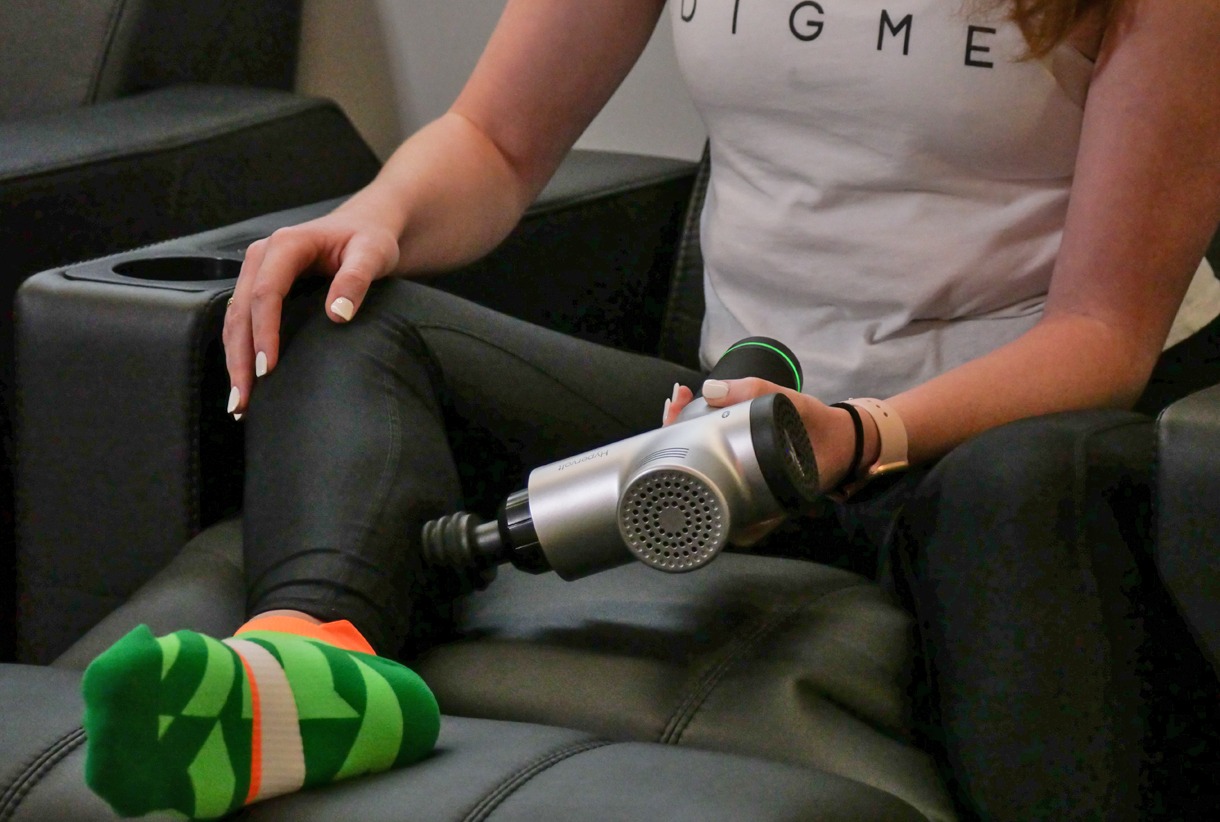
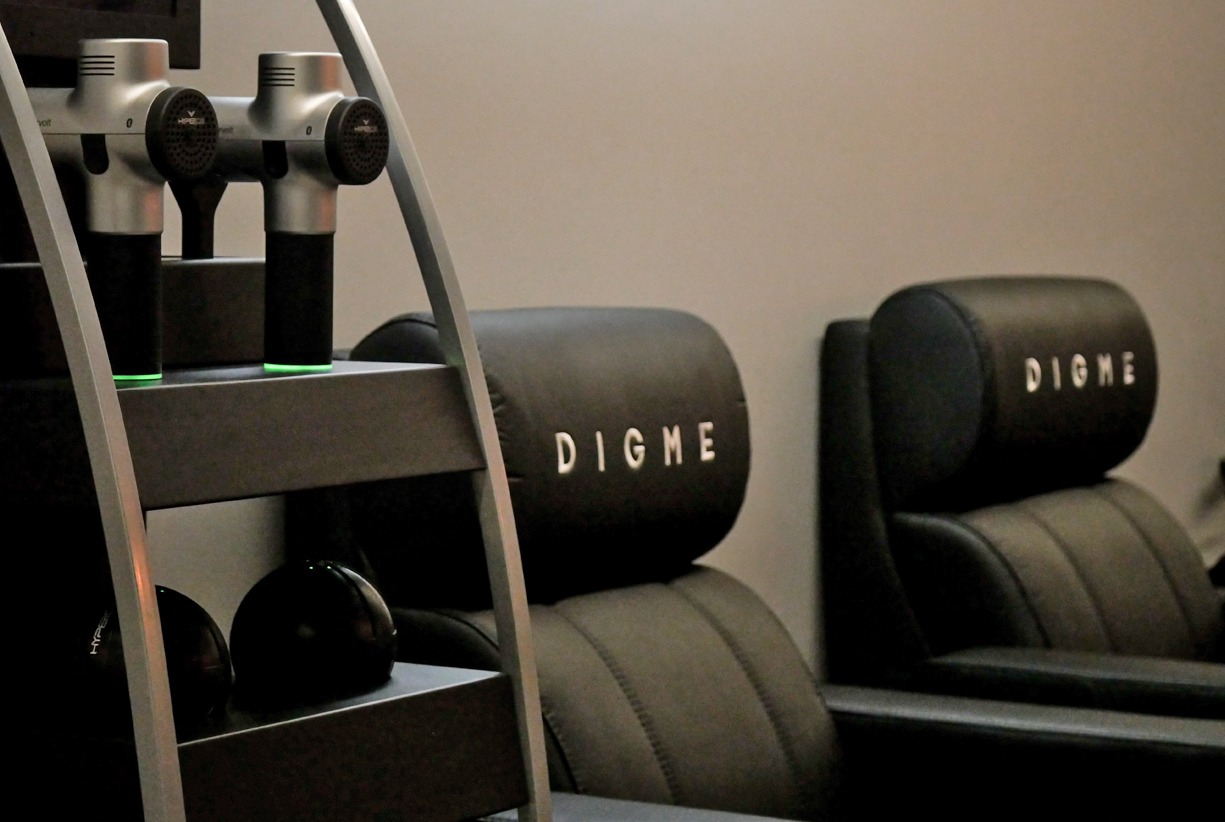
A new recovery space
“Last month, we launched a new Recovery Space in our Moorgate studio – a first for London. It’s an open space with two Digme-branded lazy boy recliner chairs, each with their own Hyperice Normatec system. This uses dynamic air compression to deliver a restorative leg massage, bespoke to the user’s needs, that’s been shown to increase circulation and improve recovery rates.
“We also provide noise-cancelling Urbanista headphones so members can zone out and enjoy their recovery session in peace.
“Our members want to be able to work out more frequently, avoid injury and maximise their performance. Our focus on recovery supports this.”
“With a retail price of £1,195, the Normatec product isn’t as affordable for members to purchase for home use, but recovery is so important to our members that we wanted to make it available in-studio. We’ve initially launched with a 25-minute session that costs one class credit (£22 for a single credit; reduced rates for credit packs) and are creating content – in collaboration with the Hyperice team – to educate our members on the benefits of recovery for their training.
“In our other studios, we’ve introduced Hyperice Recovery Towers: two Hyperice Hypervolt percussion guns, two Hyperice Hypersphere vibrating massage balls and two Hyperice Vyper vibrating fitness rollers. Members can use these for free between scheduled classes, with our on-demand recovery sessions still available to follow through the Digme app.”
Recovery for health
Odile Philipson – Group cycling instructor & Vinyasa Yoga teacher
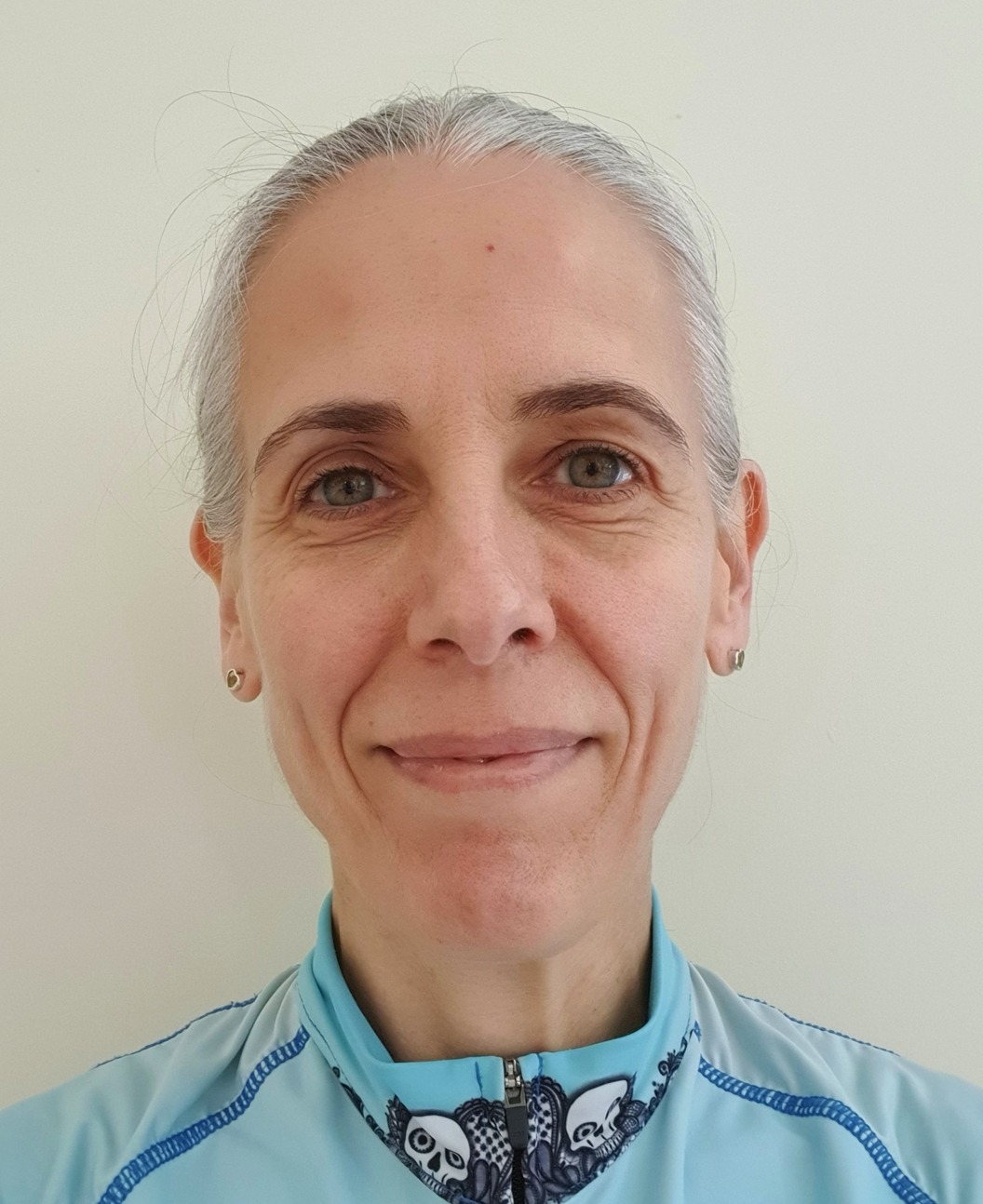
“We cannot live at 100mph permanently. We cannot push our bodies (and brains) all the time without repercussions. For every action, there’s a reaction.
“I start with that principle and I ask myself: ‘When I make the class do X working zone, what effect does that create in their bodies? What do they need to be able to continue in an optimum manner after that zone?’
“Active recovery phases do that job, giving enough time to recover without cooling down too much. Post-training recovery, even a post-cycle yoga class, completes the reset of body and mind.
“It’s why I use recovery zones at various stages of each class, giving members the tools to achieve the training and feel great at the end.
Integral to the programme
“To integrate active recovery within an indoor cycling class, it helps to understand aerobic vs anaerobic training zones and how the body handles each. It also helps, as an instructor, to remember that members’ bodies will respond differently from yours. I encourage everyone to listen to and respect their bodies, accept there will be good and bad days, and recognise when to push and when not.
“I always instruct extra recovery time for beginners, too: ‘If you need to take a break, here’s a good place for it. If you want to stay with me for a more active recovery, continue at ‘X’ RPM.’
“How I choose the active recovery length depends on the effort theme of the class: pyramid training, endurance training, Russian steps, neuromuscular intervals, a mix of endurance/ hills/ sprints… All require different active recovery lengths.
“Cycling studios are high-energy places where egos wind themselves up into a tizz of competitiveness”
“For example, if we’ve just done a pyramid section and I know there’s another coming, I’ll make the class take a four- to five-minute recovery. Without this, they won’t be at their optimum – in terms of heart rate, lactic acid or rate of perceived exertion – to give their best effort in the second pyramid. They’ll find it too hard, give up on the effort and not have that happy feeling of achievement at the end.
A need for education
“It can be a hard message to promote, though, because group cycling studios are high-energy places where egos and minds wind themselves up into a tizz of competitiveness. I do my best to guide everyone through the correct zones in a controlled manner, but not everyone will listen.
“Indeed, before I’d built up trust among my regulars, I could feel the energy in the room change when I made participants take a longer mid-class break than they were used to. Two minutes into the recovery, I could almost see a ‘this is boring’ thought bubble above some of their heads, and they’d start pedalling too hard again.
“Equally, though, I could also see the discrete nods of agreement from triathletes and road cyclists, as they already appreciated the importance of active recovery – of reining in your ego for long-term health and fitness.
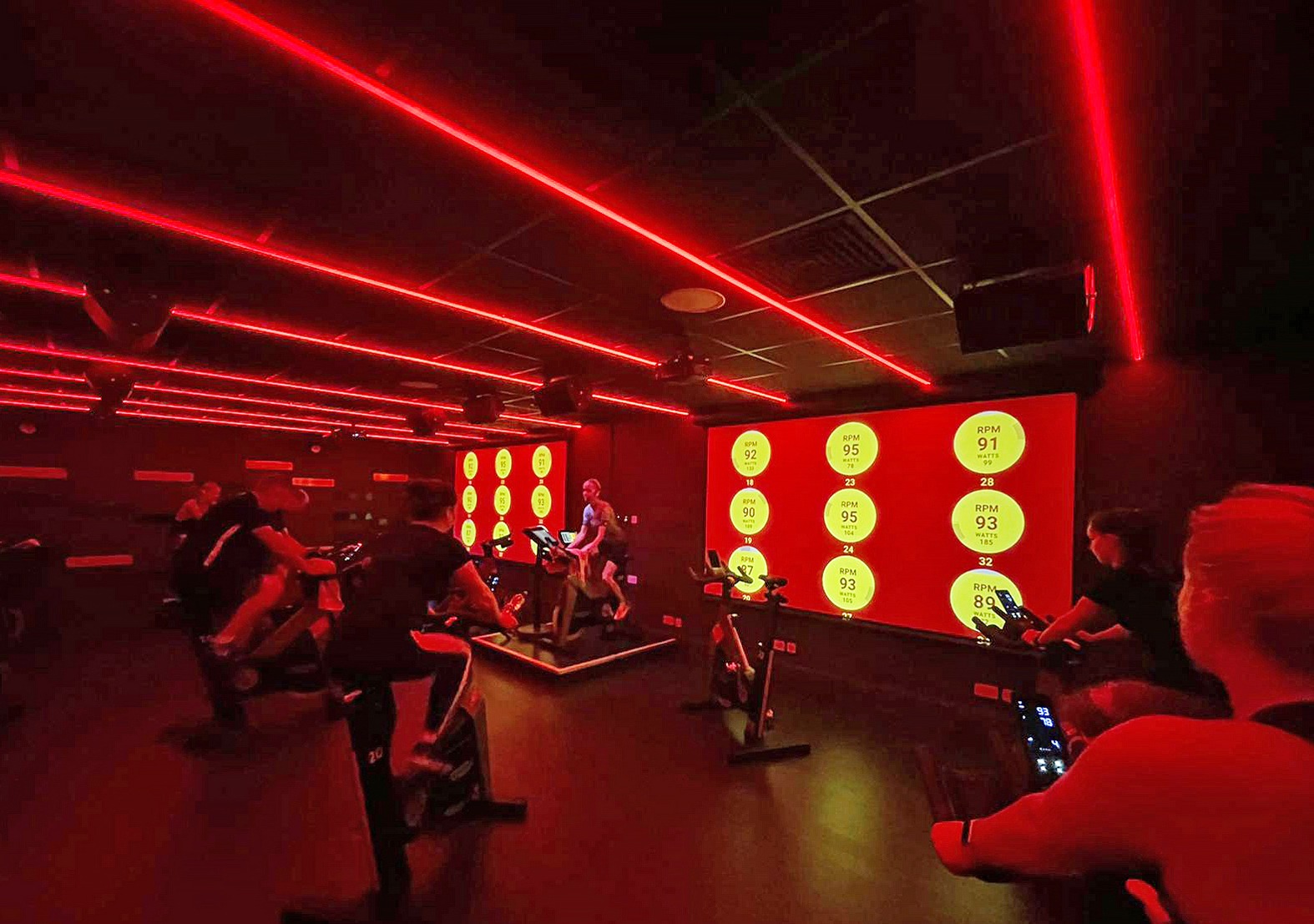
“During longer recoveries, I therefore explain the ‘why’ – I call it ‘the science bit’ – and remind members of what’s coming in the next working phase. When we’re halfway through that work and I remind them of the long recovery, they understand why we did it!
Achieving balance
“Ultimately, recovery is part of training. It makes you stronger, keeps you safe from injury and protects your immune system. All the top athletes and coaches know this. We have to adapt it for recreational indoor cyclists, but the science and logic stands whoever you are.
“Recovery is an almost invisible investment. It requires education, a leap of faith and a long-term vision”
“In fact, recovery is arguably even more important for the amateur than for the professional. A professional can be supported with regular massage, coaching, monitoring for anomalous physical response, training programmes with integrated recovery which may include enforced rest. Amateurs’ bodies and minds are dealing with a job, potentially sub-optimal nutrition, stress and fatigue from other areas. They come to class to forget their troubles, get fit and finish up feeling good about themselves. Recovery in the right places will help them achieve that.
“So, I do hope the future culture of cycling won’t just be about who has the highest Watt output or the fastest sprint RPM.
“Recovery is an almost invisible investment, though. It requires education, a leap of faith and a long-term vision.”
Fusing mental & physical health
Veronika Becker – Area station manager, FIRE Fitness
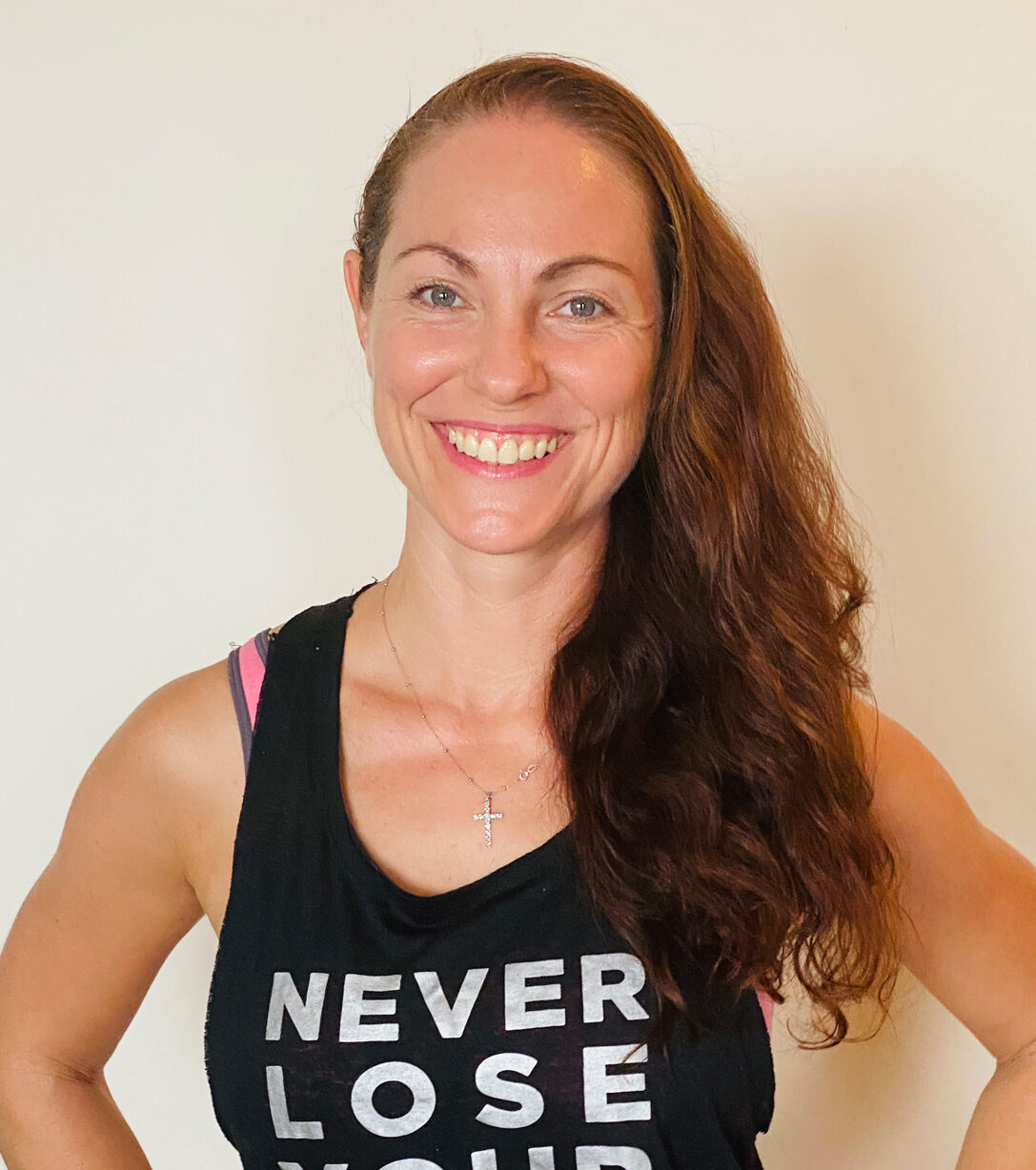
“Recovery is so important after any HIIT session, ensuring you stretch out the muscles that have become compacted during the workout, but it’s especially important after a cycling class. Sitting on a bike, you’re in a forward lean with your hip flexors doing most of the hard work. If you also work at a desk, you’ll be in a similar position for most of the day, making it even more important to stretch.
“But not everyone realises this, or wants to do a pure recovery class, which is why we created RIDE YOGA – a class that focuses first on your cardio, with 30 minutes of heart-pumping sprints and climbs on a bike, then 15 minutes of FIRE Yoga.
“The way we see it: not everyone will use up a class credit for a recovery class, but if they do RIDE YOGA, they at least get 15 minutes of it.
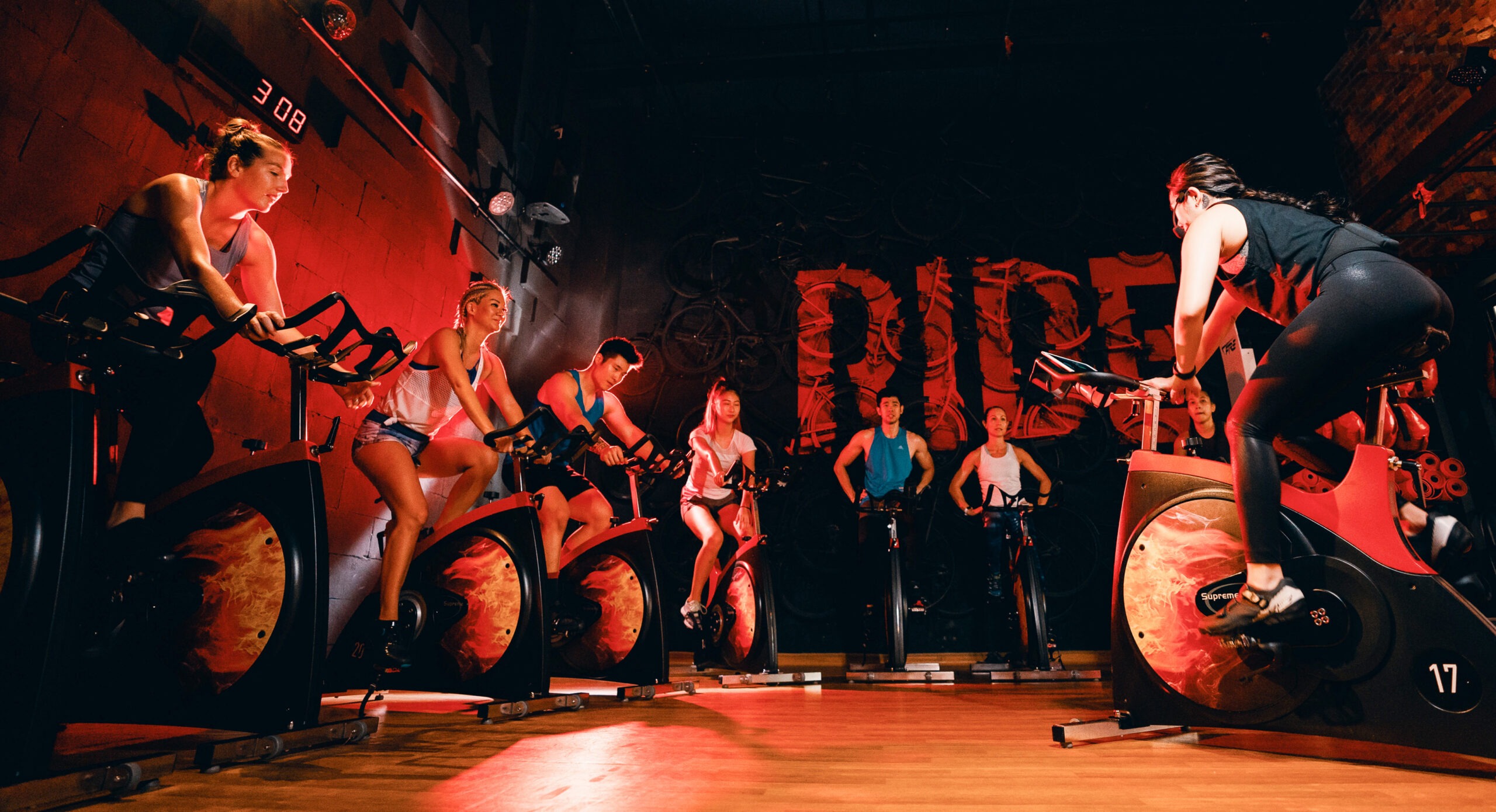
Yoga for all
“In RIDE YOGA, there’s an element of recovery between songs during the ride, but really this 30 minutes is about pushing yourself. It’s only in the final 15 minutes that we celebrate the wins, cool down and stretch. That’s enough to reduce lactic acid and soreness, eliminate toxins, keep muscles flexible, increase blood flow and focus on yourself.
“Our trainers decide which yoga movements to do based on the intensity of the ride and how much yoga experience participants have. We generally focus on simpler moves, though, as the class attracts lots of people who don’t normally ‘do’ yoga.
“Not everyone will use up a class credit for a recovery class, but if they do RIDE YOGA, they at least get 15 minutes”
“The moves also vary by time of day. In the morning, a smooth, easy flow lengthens and resets the body after RIDE, bringing energy and balance to start the day. In the evening, we opt for something a lot more restorative; the ride uses up whatever energy we have left from the day, then we go to the mat to ease physical and mental tension, helping us start the next day feeling fresh.
“We use recovery-orientated vocabulary throughout the 15 minutes and don’t make it too spiritual; the words you choose as a trainer are so important in creating the right mental images. Most trainers set a topic for the day and focus on that, with a few mindful reminders, and we find fans enjoy the educational element.
“For some of the men in particular, it’s their only yoga for the week, but the stretching means they aren’t sore the next day and are ready to train again. They get more out of every workout and report fewer injuries.
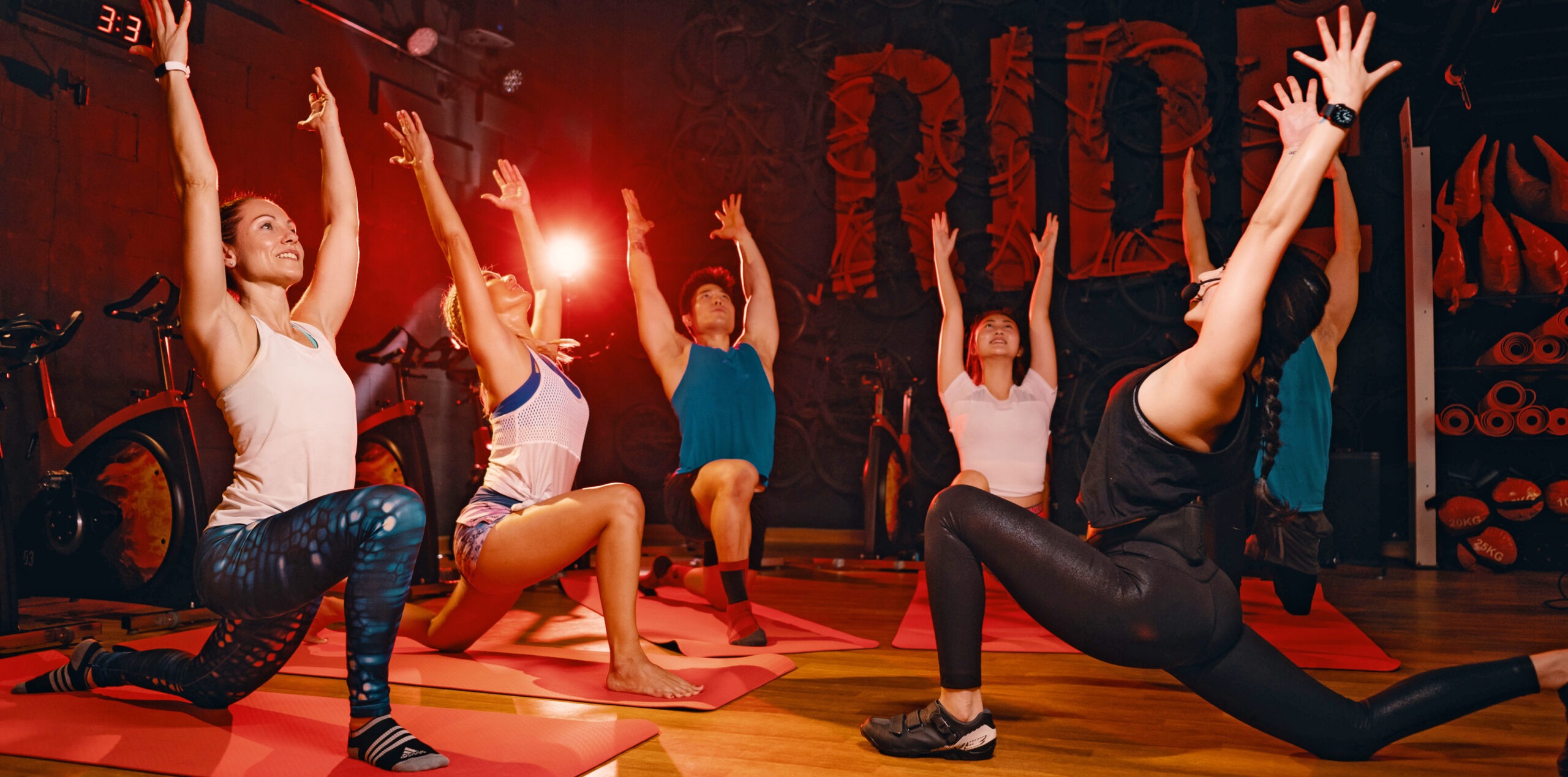
Mental meets physical
“And this is so important to understand: if you do the same exercises repeatedly, you end up with imbalances in your body that increase the risk of over-use injuries. That’s bad news for members, whose workout routines take a hit, and bad news for operators, because it can create negativity towards your programmes.
“Since lockdown, fitness enthusiasts are looking to combine their physical and mental wellbeing in one class”
“It’s why we take recovery very seriously and continuously educate our fans, and we’re finding interest in recovery classes is rising.
“As a result, I recently created a class called REGENERATE, which is completely focused around stretching, fascia release and core strength for stability. We use foam rollers, balls and yoga movements, and are about to take it to the next level by introducing Hyperice massage guns and Hypersphere massage balls. We run these classes at the weekend and are over the moon with how they’ve been received to date. Once people realise how good it makes them feel, they usually come back for more.
“Another interesting trend is the growing number of people who, since lockdown, have recognised the deep connect between physical and mental health. We’ve experienced a rise in fitness enthusiasts looking for ways to combine their physical and mental wellbeing in one class, rather than as two separate activities. If you, as an operator, can offer a hybrid class that embraces both mental and physical, I believe you’ll be able to satisfy a market you may not have attracted before.”
EXPERT INSIGHT
Do HIIT responsibly – Paul Trendell, co-founder, Victus Soul

“When we first came up with the Victus Soul concept – combining running, boxing, HIIT and recovery – the idea that people would spend up to seven minutes on recovery at the end of a HIIT class was unheard of. The norm was a couple of minutes of cool-down.
“We deliberately set out to do things differently, with the final five to seven minutes of every Victus Soul class dedicated to active recovery built around a primal movement flow.
“Why? Because proper recovery is crucial for continual improvement. That’s as true for indoor cycling as it is any other form of high-intensity exercise.
“Active recovery reduces the build-up of lactic acid and minimises post-exercise stiffness, helps alleviate fatigue, promotes blood flow to joints and muscles and allows some recovery time for the mind, too.
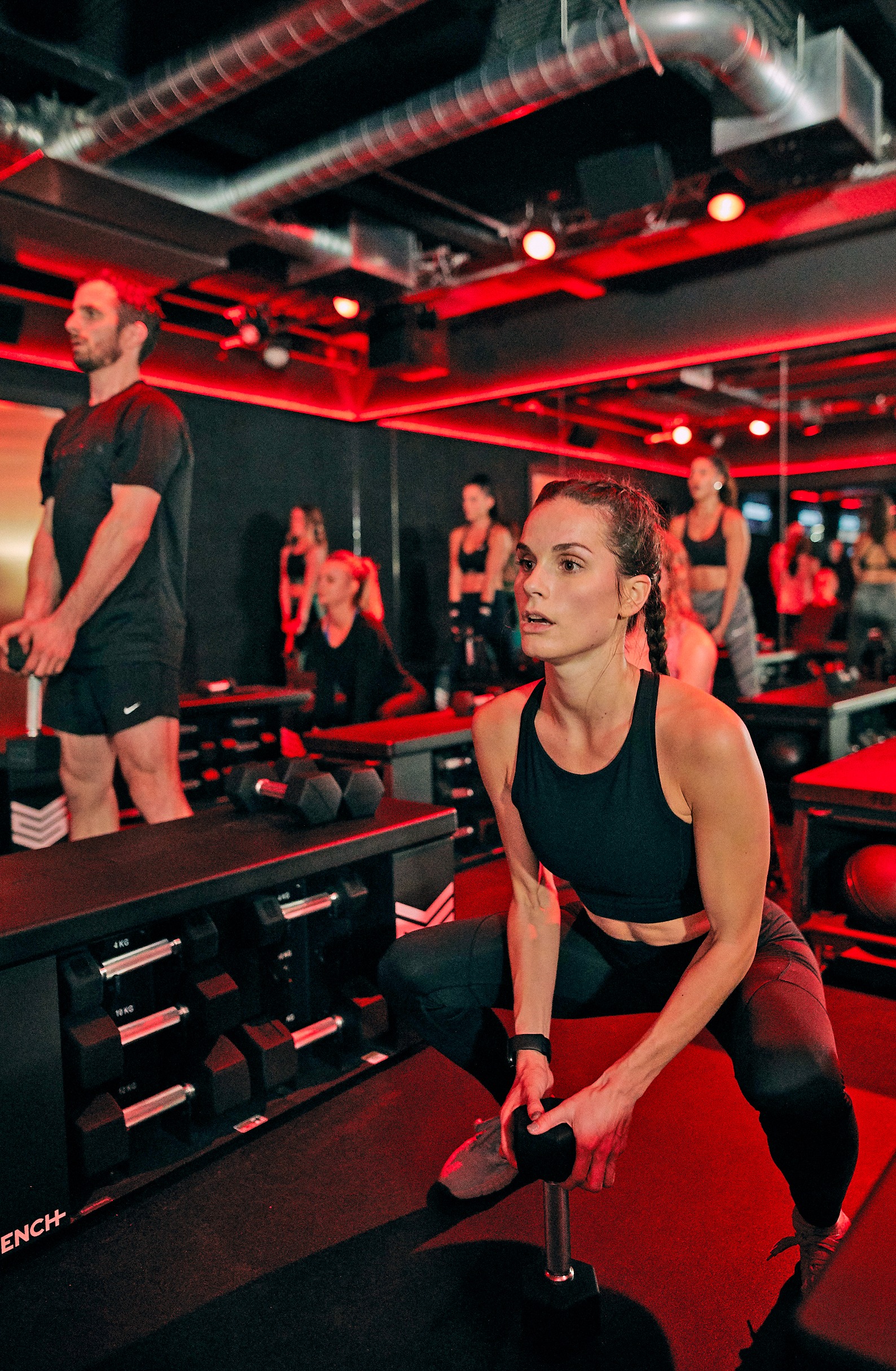
“But it does require education. At the beginning, many people dismissed the idea of spending so long on recovery and would leave before the end of class. Very few people do so now, though. They’ve come to appreciate that, given the appropriate rate and type of recovery, higher training volumes and intensities are ultimately achievable without the detrimental effects of over-training. They’re able to do more sessions.
“We’re so convinced of the value of active recovery that we almost see it as ‘doing HIIT responsibly’.”
EXPERT INSIGHT
Missing a trick? – Richard Earney, national director of programming, Midtown Athletic Clubs
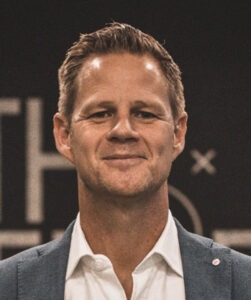
“Whether you’re a die-hard spinner or a weekend warrior, all the HIIT- and HISS-style classes on gyms’ timetables – coupled with a modern lifestyle that sees us hunched over a computer by day and binge-watching Netflix by night – means it’s vitally important to build some recovery and regeneration into our lives.
“Of course, HIIT and HISS has its place. It works. But too much of a good thing isn’t always a good thing.
“What’s needed is a shift in both mindset and programming, with every operator thinking about how to bake recovery and regeneration into their offering – and how to educate members along the way.
“At Midtown, we’ve built out two signature programmes: ReGen and StretchRX.
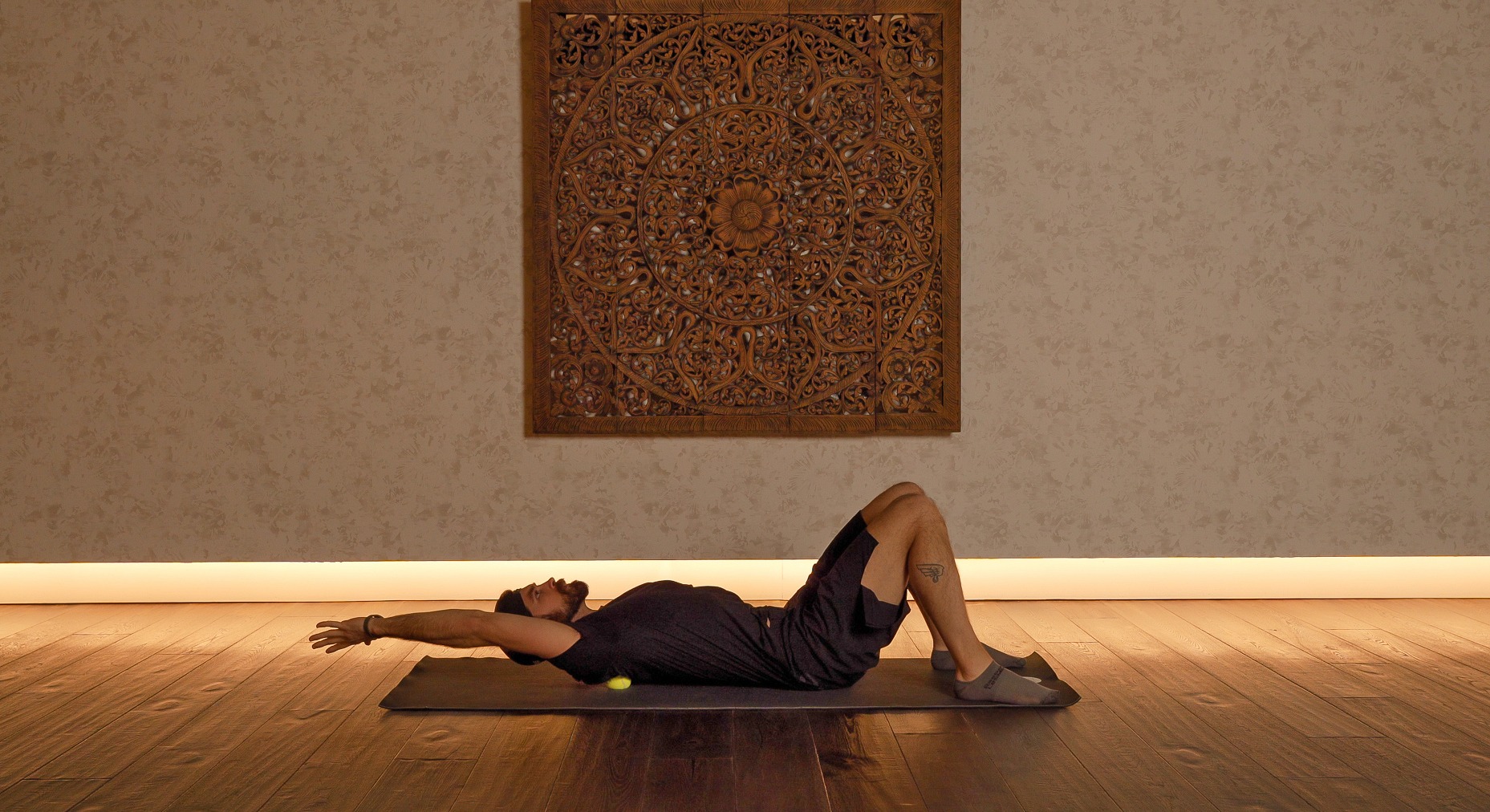
“For ReGen, think 60 minutes of myofascial release and trigger point work with foam rollers, tennis and lacrosse balls in our Samadhi (mind-body) studio. The lights are low, the room is warm, instrumental jazz plays in the background. It’s an experience: painful, but rewarding. It’s strategically placed on our group programming schedule and we’re seeing members – myself included – go out of their way to attend, building this class into their weekly routine.
“Meanwhile, the methodology of the StretchRX programme involves 30 minutes’ stretching and mobilisation using recovery and percussion tools. Carried out on massage tables in stretching and recovery areas around the club, this is a paid session delivered by a StretchRX coach.”
EXPERT INSIGHT
Know your audience – Jon Johnston, Reiver founder + UK distributor, BODY BIKE
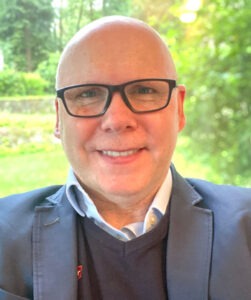
“I suspect most gym-goers have a maximum of three or four workout days a week, which may make recovery less of a priority in their minds. However, doing nothing isn’t always the best recovery tool, and operators may be missing a trick – particularly for beginners and older adults – if they aren’t including some easier, recovery-focused (or simply steady state aerobic) cycling sessions on their timetables. A great option for a more sociable class, this is also an opportunity to educate on important but often overlooked aspects such as cadence, technique, mobility – and, of course, recovery.
“Structuring recovery into the programming is also vital for experienced, regular exercisers, albeit the format may differ. For example, the concept of polarised training – making easy sessions easy and the hard sessions properly hard – is gaining popularity in ‘serious cycling’ and has been shown to be very effective in steering riders away from a middle zone where levels of fatigue increase and improvement plateaus.

“Goal-orientated workout periodisation isn’t something clubs and studios have really got on top of yet, though. Periodisation is all about dividing a training season into smaller, more manageable phases, structuring training – including when to increase or decrease workload – to bring an individual to peak performance at the right time and manage performance across a long period.
“At the heart of this is avoiding overtraining – and with it the risks of injury, burnout and reduced workout motivation – making it as relevant to gyms as to serious cyclists. This is something the gym industry needs to get much better at, with more structure in the programming from week to week and much more focus on individual goals, fitness levels, motivation and time available to train.”
Activism at Virgin Active
Hot off the heels of a restructuring plan approved in May, Virgin Active is coming out all guns blazing in getting its clubs ready to welcome back members. There’s new equipment, hints at upcoming new launches and a raft of new programming – led by specially recruited ‘activists’ – across what it terms the ‘big five’ of group exercise: indoor cycle, yoga, reformer pilates, athletic training and boxing.
“If you consider the word ‘activist’, it means someone who brings about change,” explains Caroline Macklin, head of brand for Virgin Active. “We’ve listened to our members, upped our game and hired the best of the best to channel their vast knowledge into bringing about change in our group exercise offering.”
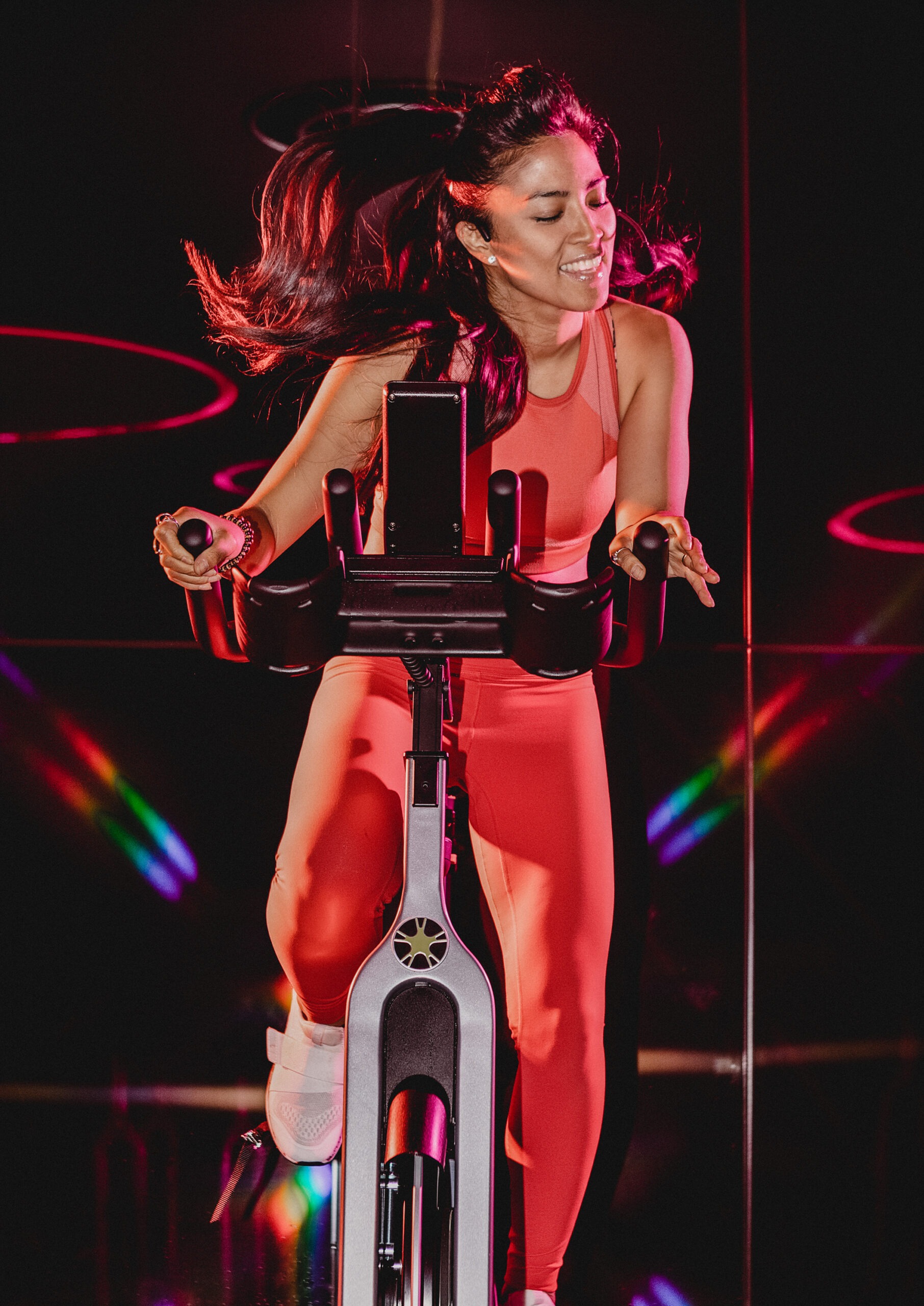
“In other companies, you have a head of group exercise,” adds SJ Aboboto, Virgin Active’s cycle activist. “Virgin Active has done things differently, bringing in expert instructors to each dedicate themselves to one of the ‘big five’ disciplines. It’s about getting the very best out of each product, raising things to an experiential level that heightens member satisfaction and encourages people to try new things and mix up their workout routines.”
Here, Aboboto tells us about the new group cycle programmes she’s created for Virgin Active, with a roll-out that starts this month.
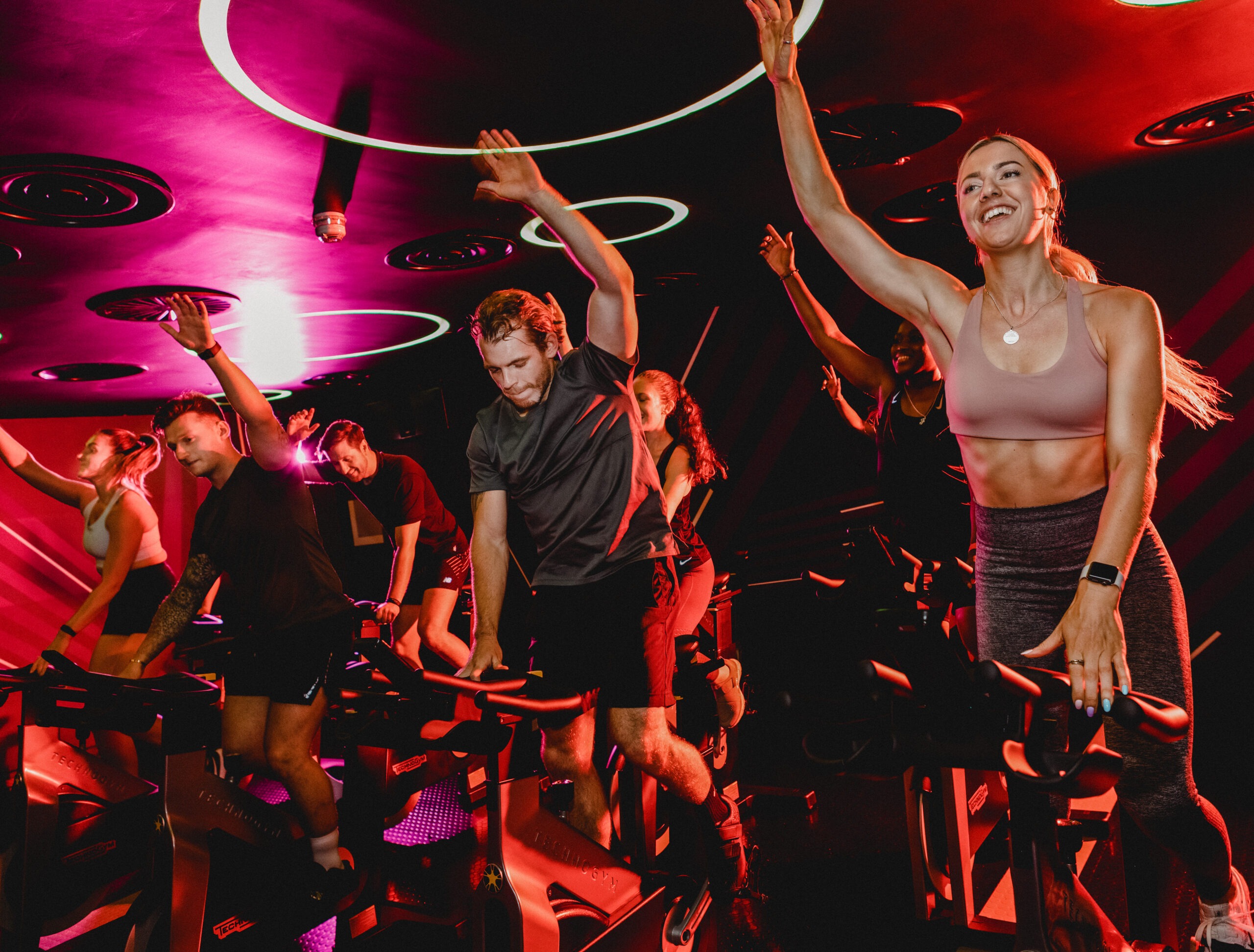
What’s the rationale behind the new programming?
We’ve set out to define who we are – to define the Virgin Active experience across all our disciplines – so whichever club you go to, you know exactly what you’re going to get.
Within that, it’s important that the experience is unique to us – that we own the product and are able to keep evolving it – so each activist has been busy creating signature classes that bring the boutique studio experience into our clubs.
“We’ve set out to define who we are, so whichever of our clubs you go to, you know exactly what you’re going to get”
What this means is that, while instructors of course inject their unique energy and personality into their classes, the formats themselves will now be consistent – and classes of a consistently high quality – across all our clubs and studios.
This is an important change from where we’ve been up until now. In cycle, for example, all classes have historically just been called Group Cycle, with the style and format varying from instructor to instructor. Our new programmes will ensure a consistent, and consistently great, member experience.
What cycle concepts have you created?
I’ve designed four new signature classes: MOVE, TEMPO, POWER and PRO.
MOVE is a boutique-style concept that’s all about cycling to the beat: lots of choreography, upper body and weights. We don’t use the console at all in this class.
POWER is a performance-based class that’s similar to outdoor cycling, with an emphasis on technique and moving in and out of the saddle. The console is very important in this class, focusing on data as you push towards benchmarks and goals.
“I’ve had lots of instructors initially tell me ‘I only instruct power’, but by the time they’ve done the training, 90% have changed their minds”
TEMPO is a hybrid class that fuses power and rhythm cycling: some sections are simply to the beat, others are more focused on the console. There’s an option of upper body movement, but it’s more basic than in MOVE and if it isn’t your thing, that’s cool – just ride.
And then PRO is all about a connection between the bikes and a big screen at the front of class, with a heavy focus on data.
Each class has a blueprint, a journey to follow, with instructors able to inject their own musical choices onto this. Anyone wanting more guidance can access monthly templates with suggested music tracks – mixing genres, tempos and RPMs so there’s something for everyone – and more details on choreography.
What does this variety achieve?
First of all, it’s about inspiring new people into cycling, as well as keeping existing cycle fans happy with different styles of class: some like data and pushing themselves hard, others like to be distracted from the workout with music, choreography and upper body work. You have to ensure there’s something for everyone.
It’s also about ensuring instructors are happy, with a class style that fits the way they like to teach. If we want to deliver the best possible experience for members, they must be comfortable with what they’re teaching.
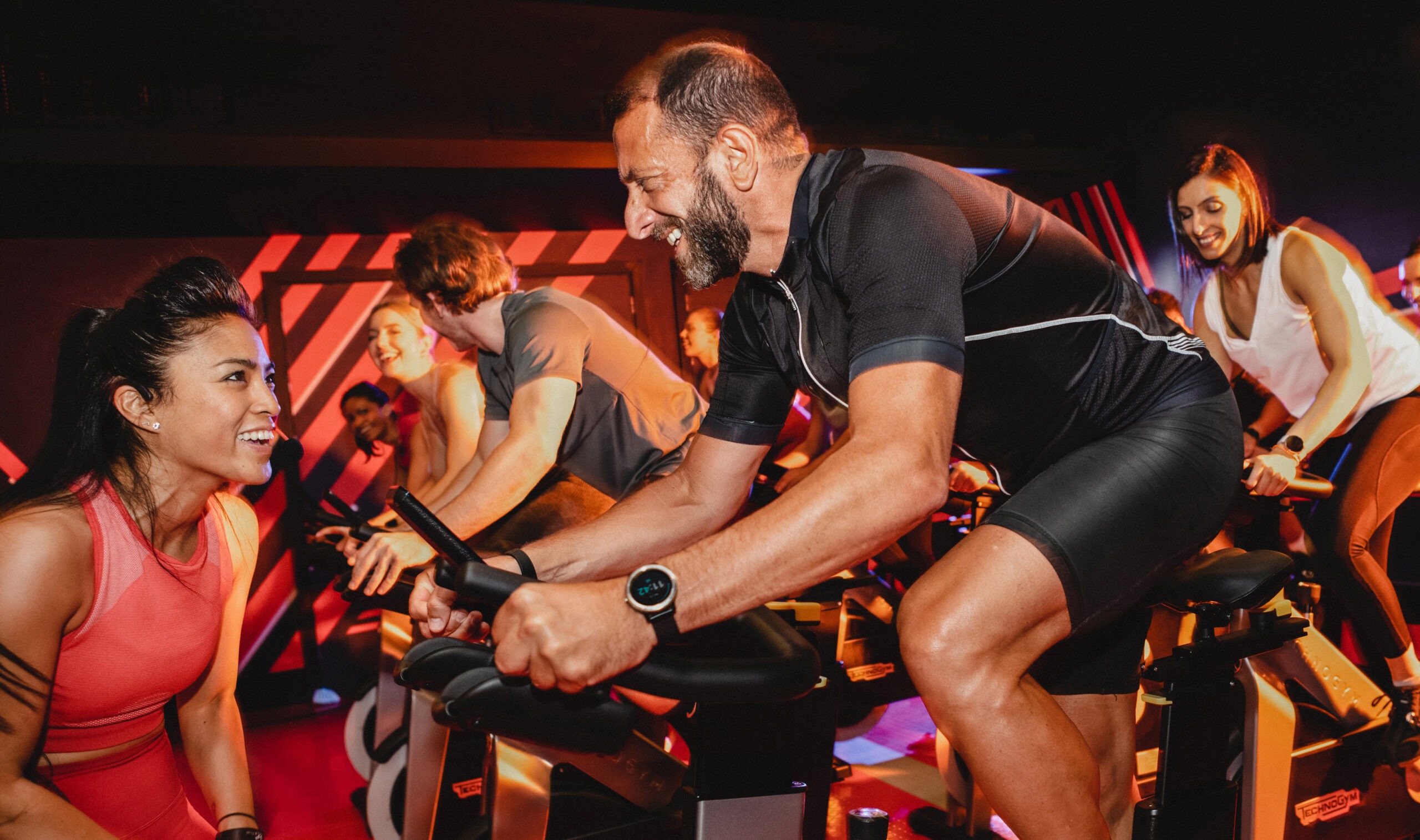
That said, the training process has been really interesting. I’ve had lots of instructors initially tell me ‘I only instruct power’, but by the time they’ve done the training – I train everyone in both programmes – 90 per cent have changed their minds.
Even if they don’t teach both, it’s really important to have a knowledge of both programmes, to answer member questions and to understand there’s no right or wrong. As long as everything you do on the bike is safe and has a purpose, it will bring something to the workout.
For example, the upper body weight track is something a lot of people question, because the weights aren’t heavy and the wattage not high. That’s true, but it brings fun, rhythm and co-ordination. It has its own benefits, so I’m keen that everyone is educated across all formats.
Really, my advice for members and instructors is the same: Just come and try it!
Tell us more about the training.
Even if you instruct at Virgin Active already, these are new products, so we’re supporting instructors with two weeks of e-learning followed by four weeks of face-to-face practicals and webinars. Finally, before go-live, there’s an assessment where you deliver a 20-minute ride including intro and outro.
“I constantly have an eye on how I want to evolve the product – where we can take it, what trends we can explore, what trends we can create”
We also take instructors to our Aldersgate club, our first full-experience studio, to get a real sense of how an immersive boutique experience should feel for our members.
Alongside this, we’re also developing our own Level 2 indoor cycle qualification, which we’ll release in Q4 of this year and run through The Virgin Active Academy at our Mansion House head office.
What’s the roll-out plan?
We’re initially launching TEMPO and POWER, with MOVE and PRO to follow shortly after.
TEMPO and POWER will launch in eight clubs this month and then roll out from there. In the classes I’ve been instructing recently, I’ve effectively been instructing TEMPO and I’ve had amazing feedback, but it’s still been under the Group Cycle label.
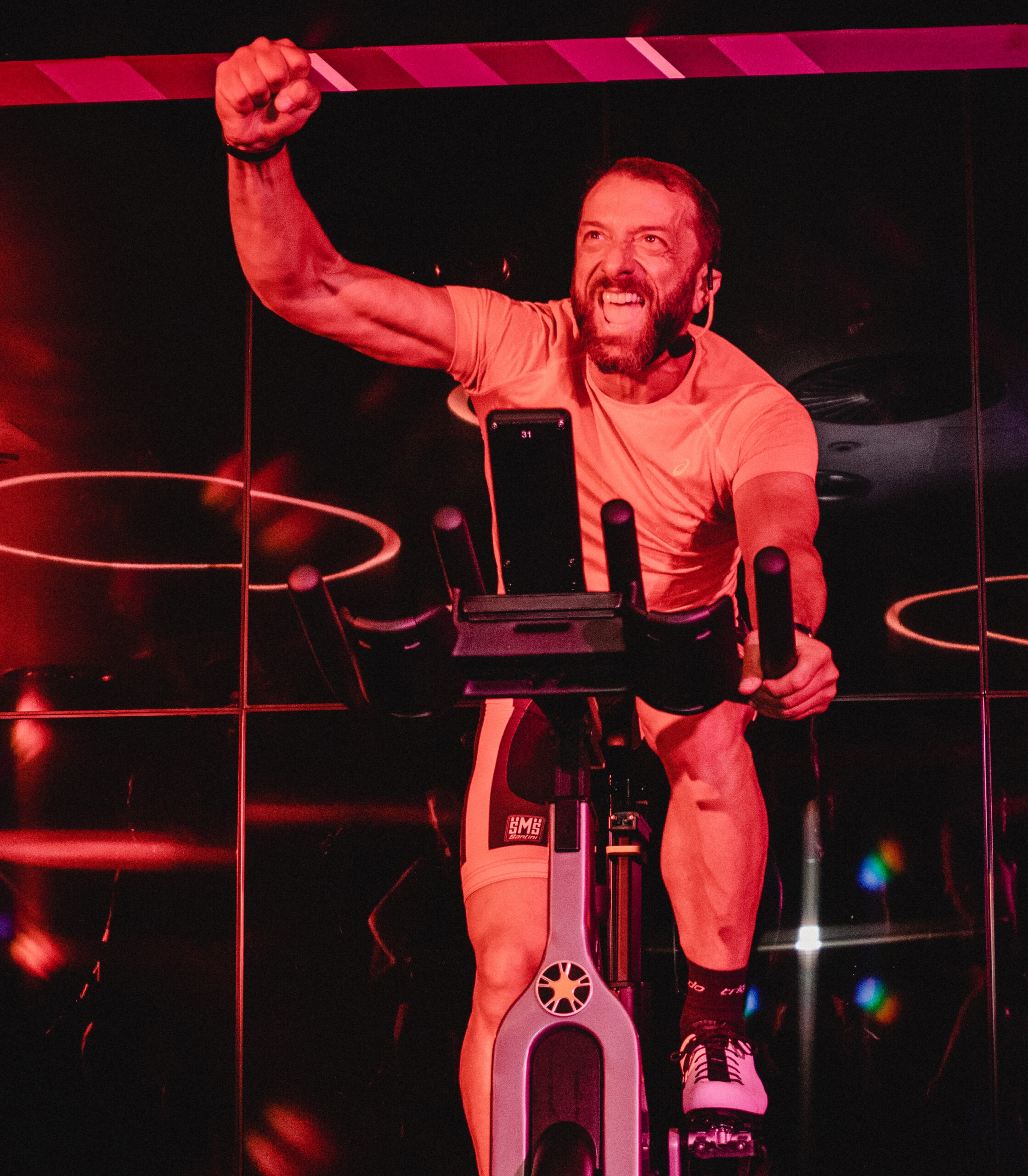
How about online classes?
We have a purpose-built studio at Mansion House where throughout lockdown, us activists have been filming classes for Virgin Active’s app; I’ve been doing cycle and dance.
This started during lockdown, but digital content was always part of our strategy and feedback from our members has been really positive. Club+ members have access to all our digital content included in their membership. Online+ members can get a free 30-day trial and then pay £9.99 a month, or £99.99 for 12 months upfront, which also gives them access to club passes: monthly Online+ membership gives you one club pass, an annual package gives you four, and you can buy more to suit your lifestyle.
We’re trying to provide complete flexibility in how people work out with us.
What does your typical day look like?
It’s totally different every day. I design programmes, instruct live classes, film on-demand content, run masterclasses, upskill instructors, develop the core team and nurture members who want to become instructors. I support clubs in achieving good levels of occupancy, retention and experience. And, of course, I constantly have an eye on how I want to evolve the product – where we can take it, what trends we can explore, what trends we can create. It’s a busy role!
“Music should be a driving force across all products, not just rhythm cycling but power-based classes too”
What’s your secret for a great class?
When you’re cycling outdoors, you have the scenery to inspire you. In the studio, it’s all down to the instructor and the music.
Music should be a driving force across all products, not just rhythm cycling but power-based classes too. Get it right and it enhances performance as well as the experience: your body naturally matches itself to the beat.
Music is an energising force and it sits at the heart of every great class.
We have lift-off
How did you come to host the Swedish Olympic team’s training camp?
We’ve had a strategic partnership with the Swedish Olympic Committee since 2013.
The Committee helps us secure Olympic training standards for our hotels’ sports and fitness facilities, ensuring everything is good enough for an Olympic training camp. In return, we help them with their Top & Talent programme, whereby we host training camps for their existing and up-and-coming stars at two of our hotels: Playitas Resort and Sivota Retreat – powered by Playitas. When it opens in May 2022, Porto Myrina – powered by Playitas will also host Olympic training camps.
“We host training camps for the Swedish Olympic Committee, for existing and up-and-coming stars”
The camps can be week-long pre-camps for the whole Olympic team to prepare for the next Games; cluster camps, where a few different sports come together to train and learn from each other; or individual camps, where between one and three athletes come to use our facilities for pre-season or pre-competition training.
For example, Playitas Resort recently hosted the Swedish handball team for a pre-camp before the Tokyo Olympics. And the full Swedish Winter Olympics team stayed and trained at Sivota Retreat in May 2021, the first week we opened.
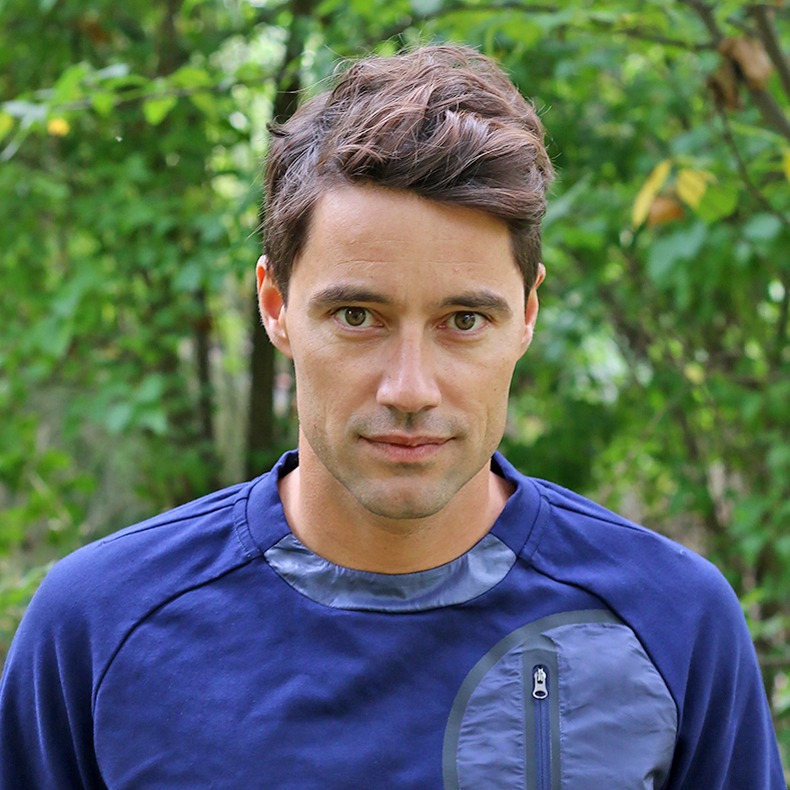
Tell us more about Sivota Retreat – powered by Playitas.
We took over management of the hotel during COVID lockdown, renovating the whole of the existing sports infrastructure as well as building new padel courts, a large gym, a group cycling space and a WOD Box for functional-style training. We also refurbished all 151 guest rooms and the common areas, and built a new à la carte restaurant.
The hotel was then relaunched as ‘Sivota Retreat – powered by Playitas’ on 17 May 2021 – two days after Greece re-opened for tourism – making it one of Apollo Sports’ five concept hotels. [See The launch of Apollo]
“We host professional athletes every week. Guests find it inspiring to holiday in the same place as their heroes.”
Sivota Retreat – powered by Playitas offers a wide range of land- and water-based activities that include fitness, padel, tennis, group cycling, mountain biking, road and gravel cycling, waterskiing, wakeboarding and wakesurfing, stand-up paddleboard (SUP) and kayaking.
We have three tennis courts, three padel courts, and our location in the mountains means we’re surrounded by perfect tracks for running, hiking and biking. There’s a pool area with separate children’s pool, but the sea is also crystal clear and ideal for open water swimming, SUP and kayaking.
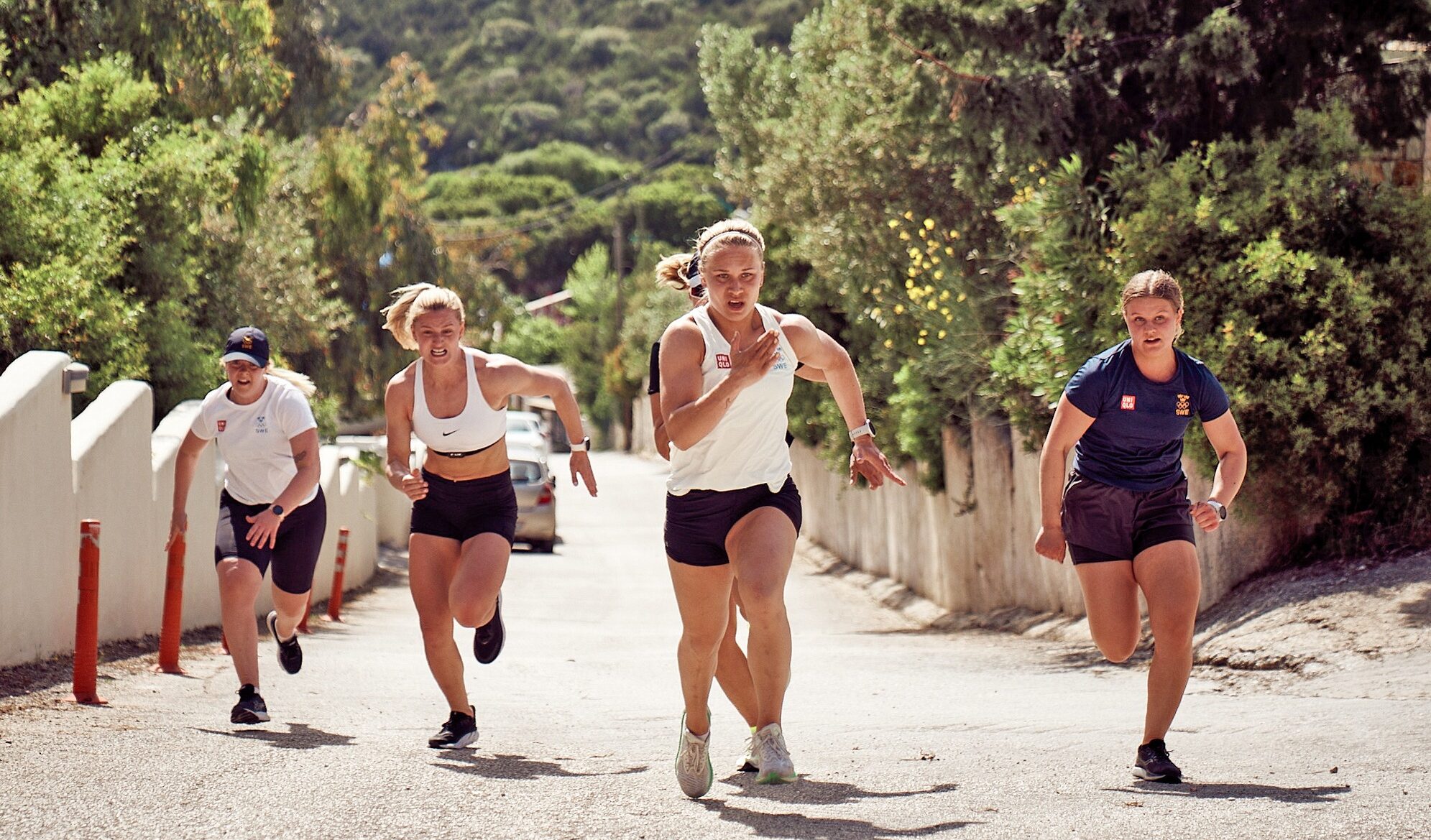
Our fitness offering includes a brand new Casall PRO gym that’s been equipped to the Swedish Olympic Committee’s standards for Olympic training, with extensive resistance and cardio training options.
What about group exercise?
We have a very busy group training schedule, regularly running multiple classes at the same time, so there’s plenty to choose from. We do have space to move things indoors on particularly hot or rainy days, but other than gym-based training, much of what we do is delivered outside. Being outdoors is, after all, why people come to us – it’s a lovely climate to train in.
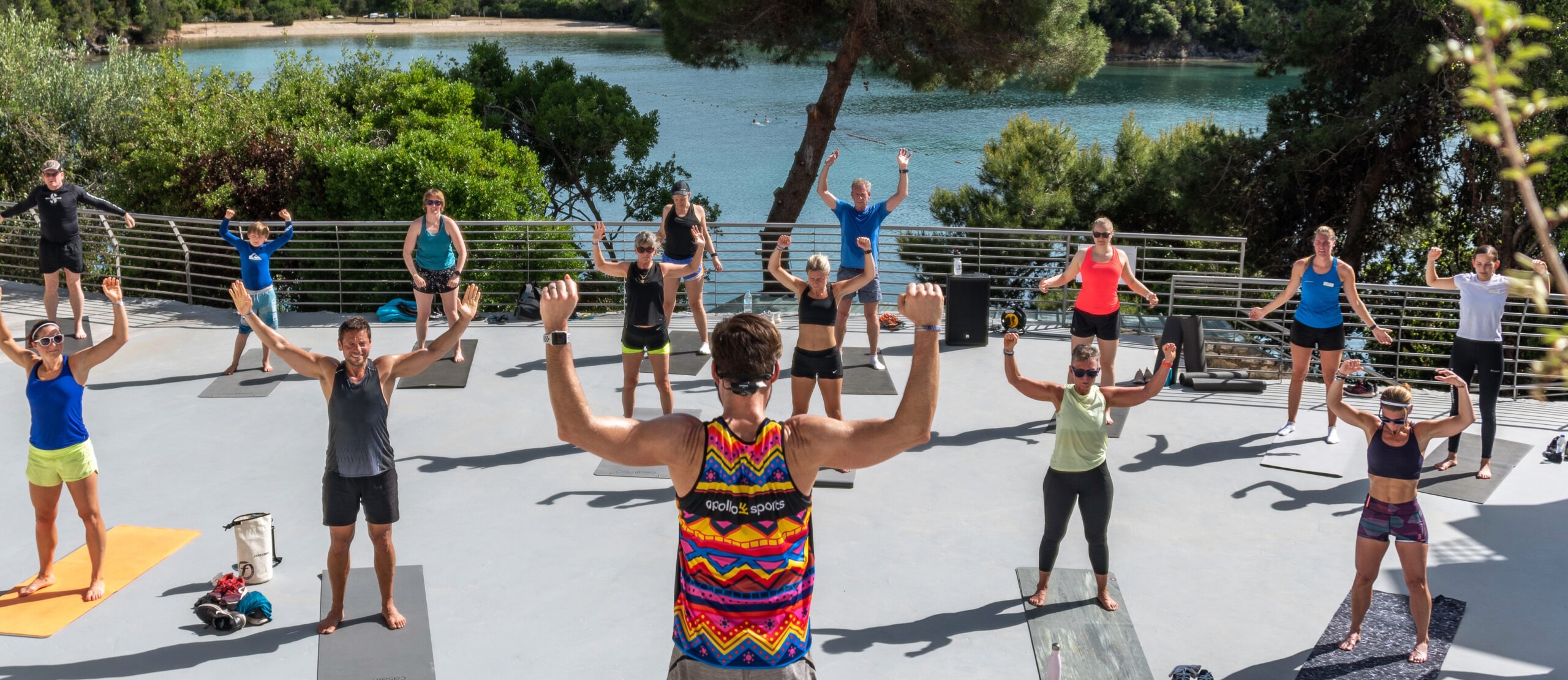
Classes include functional training, yoga, dance, cardio and group cycling, to name just a few. Our cycling classes are already really popular and with just 15 bikes they’re always full, so we’ve had to add more classes to the timetable and now run several every day.
At Apollo, we have a strong focus on sustainability – including, when not restricted by COVID measures, no single-use plastic – so we’ve installed BODY BIKE OceanIX. These are manufactured using recycled plastic fishing nets, so they’re a great fit for us.
Which of your facilities did the Swedish team use?
This was the Swedish Winter Olympics team, so it was very much pre-season training, building endurance and strength in preparation for Beijing 2022.
They did a lot of group cycling, mixing it up so different sports teams were training together. They loved our outdoor cycling space, enjoying the beautiful views over the crystal clear turquoise sea and green island beyond.
They also did lots of Olympic lifting and technique training, as well as general team-building. By the time athletes get to the Games, they’re so focused. Training camps are the perfect ice-breaker – a chance to get to know your team-mates ahead of the Games.
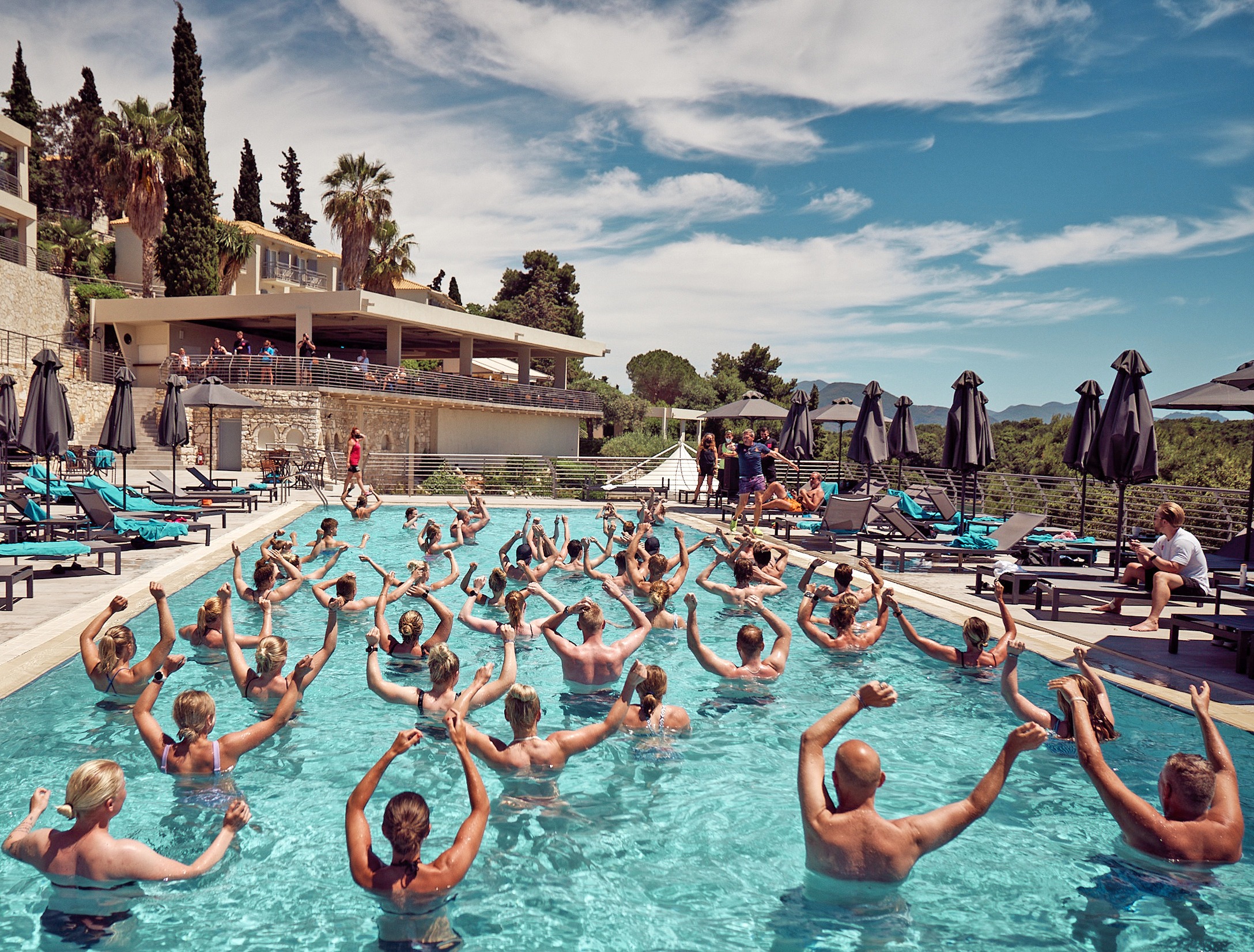
What’s the balance between elite training and holidaying enthusiasts?
Although we host professional athletes every week – not just the Swedish Olympic team, but all sorts of elite sports professionals – they only make up around 5–10 per cent of our total guest base. They’re also self-sufficient, in that they bring their own coaches and programming, so our in-house coaches can still focus on our other guests.
Occasionally, a team will take over the whole hotel; that was the case with the Swedish Winter Olympics team in May. But generally, elites and holidaying enthusiasts are here at the same time and there’s no problem giving them all a great experience. In fact, guests find it really inspiring to be holidaying in the same place as their sporting heroes.
What’s special about your sports and fitness experiences?
Our guests take their sport seriously, and so do we. There’s none of that animation team stuff, with entertainment organised in the evening. We’re about sport, pure and simple, with high-quality facilities and professional instructors: PTs, group exercise instructors, cycling and triathlon coaches, tennis trainers and so on. We also pride ourselves on our high service levels and great F&B. It all leads to high levels of customer satisfaction.
“Training camps are the perfect ice-breaker – a chance to get to know your team-mates ahead of the Games”
Is it all-inclusive as far as activities go?
Our Sports Inclusive concept – which is enjoyed by all guests – means all activities other than one-to-one training, motorised watersports and premium bike hire are included in the price.
The philosophy of ‘powered by Playitas’ is that everyone who wants to do so can train freely, trying out new sports and sharing the joy of training without worrying about the cost.
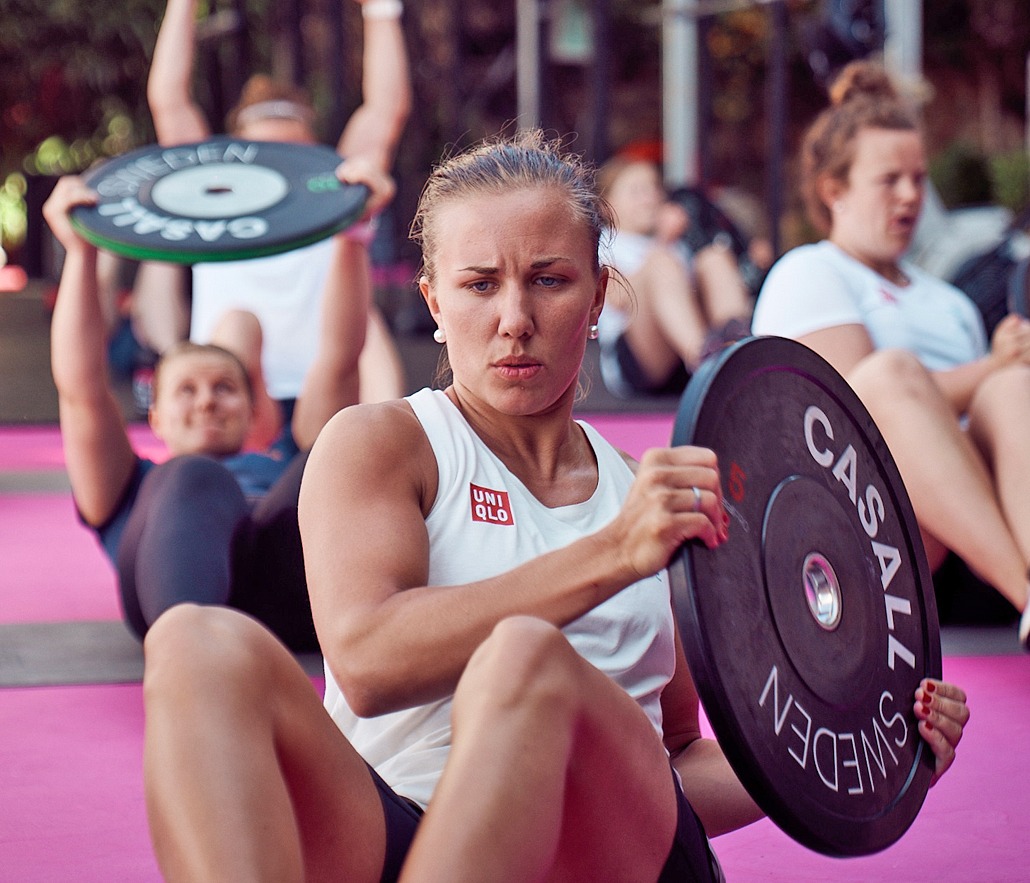
Swedish Olympic Committee – saw the Swedish women’s ice hockey team preparing for Beijing 2022
Are guests’ expectations changing?
We’ve certainly evolved the formula of our gyms over recent years, moving away from big, fixed gym equipment and towards Olympic lifting and functional training. Our WOD Box is hugely important, for example.
We’ve also put Zwift areas into our gyms in response to guest demand. And ever since COVID, guests are keen to train in smaller groups – even though, with all our outdoor training options, we’re now are allowed to bring more people together. That’s fine with us, though, because smaller groups means more personal attention from the instructor, and that fits well with our premium approach.
Are there new resorts in the pipeline?
In addition to the opening of Porto Myrina – powered by Playitas next May, we will also open another resort – a 250-room hotel in a brilliant location in Europe – in April 2022. That’s all the detail I can give you right now though: it’s still top secret! What I can say is that indoor cycling will absolutely be on the agenda there, too.
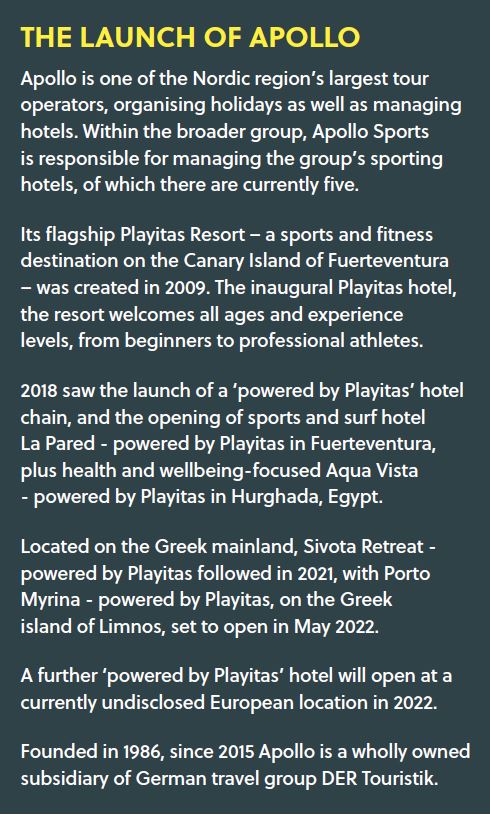
Nothing is impossible
Nuno, tell us a bit about yourself.
My name is Nuno Ribeiro, I’m 31 years old and I’m from Barreiro in Portugal.
I was born with cerebral palsy, a deficiency related to the central nervous system. The best way to explain it: my brain doesn’t send the correct commands to my body, so I have problems with balance and walking.
In fact, when I was born, the doctors told my parents I would never walk.
However, we were referred to a physiotherapist who offered hope, telling my parents I would indeed walk. The first stage was surgery to stretch my tendons. This was an innovative surgery at the time – only a few places in Portugal offered it – and the doctors didn’t know what the outcome would be. But it was a success, and at the age of seven I took my first steps.
“When I was born, the doctors told my parents I would never walk”
Then began a long process of recovery until I was eventually able to walk alone, without needing support.
But the journey didn’t stop there, because around the age of 16 or 17, I’d grown tall enough that I needed more surgery; my tendons hadn’t stretched in line with my growth and we needed to stretch them again.
This time, the surgery was divided into three phases, and the short version of the story is that it was once again a success. Rather than continue to go through endless physical therapy, though, this time I decided to go to the gym to continue my recovery.
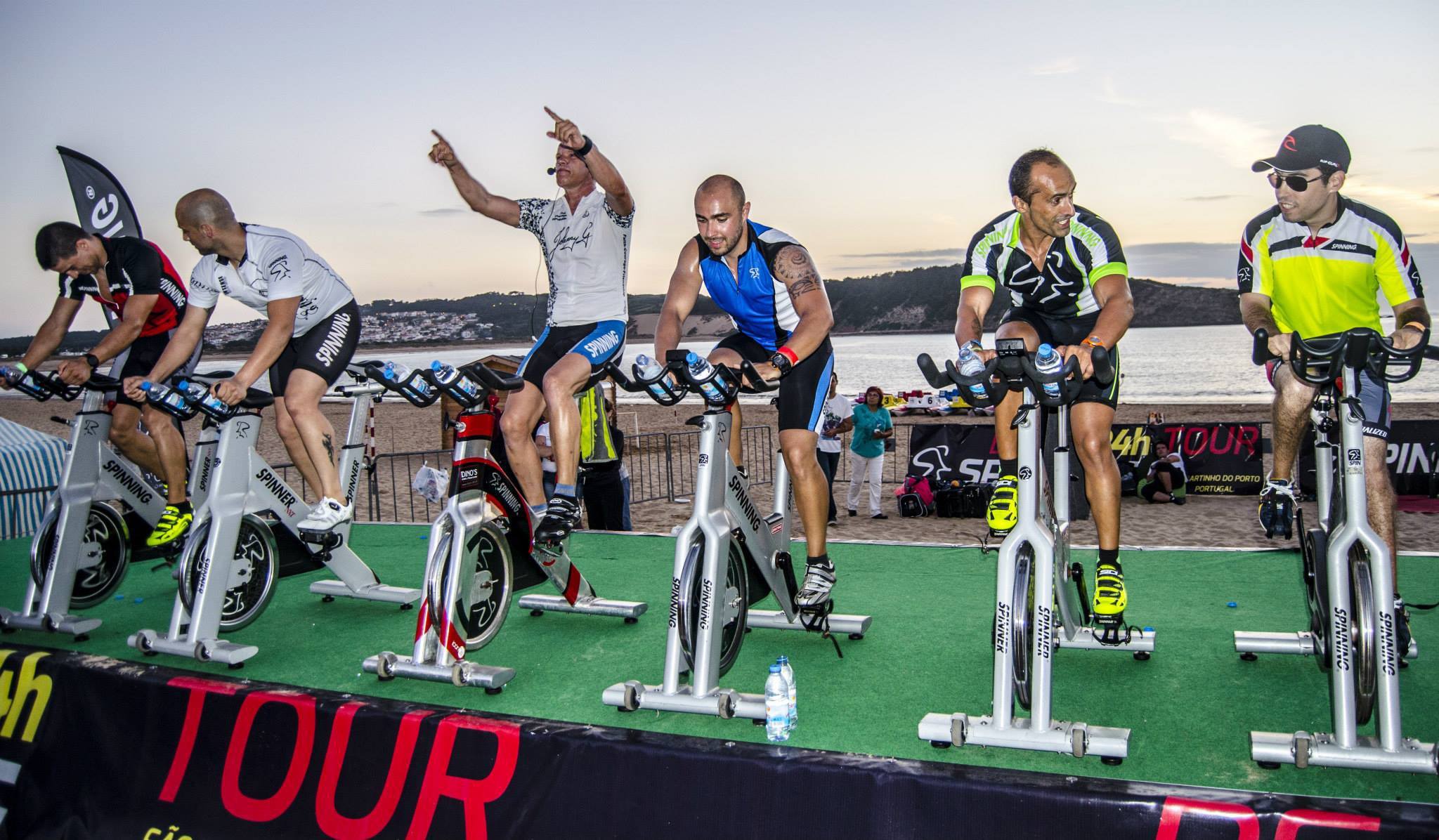
When did you discover indoor cycling?
I was about 19 when I first went to the gym and met the personal trainer – José Campos – who would change my life.
Exercise has always been part of my life – it’s had to be, as without it my physical condition would deteriorate. It’s also so crucial to giving me the mental strength to deal with more challenging days. However, training with my PT was something else again. I soon started to feel notable improvements in what my body could do, including improved strength thanks to muscle gain. I also felt better mentally, with greatly increased motivation.
In one of our sessions, I asked José if he also instructed group classes and he said yes: indoor cycling. What he then described to me sounded so wonderful, I asked if he thought I’d be able to do it. He said it would be difficult, but my whole ethos in life is to change mentalities and demonstrate that the word ‘impossible’ should not exist in the human dictionary.
“The fact I have cerebral palsy and yet I’m an instructor… I’m sure it encourages people to leave the studio thinking differently”
So I tried it, and my passion for indoor cycling has been burning strong ever since. I love the energy of these classes. I also love the fact that, when I’m on the bike, I can switch off from my disability. It’s as if I don’t have it. It’s a truly incredible sense of freedom.
And you’re now an instructor?
After a few years, just taking part in classes wasn’t enough. I wanted to teach!
It was then I was introduced to Pedro Maia, Spinning® master instructor, who had already trained others with some kind of limitation. After an evaluation to assess the feasibility of me doing the course, he suggested I do the training and then re-evaluate the possibility of a career as an instructor.
I completed the international Spinning instructor certification, as well as a few modules of Spinning Continuing Education: Strength Energy Zone, Profile Designs, Heart Rate Games and Becoming a Rockstar Instructor.
Receiving my instructor’s certificate was a breath of fresh air and a huge boost to my already growing motivation. I’d achieved something I never thought would be possible.
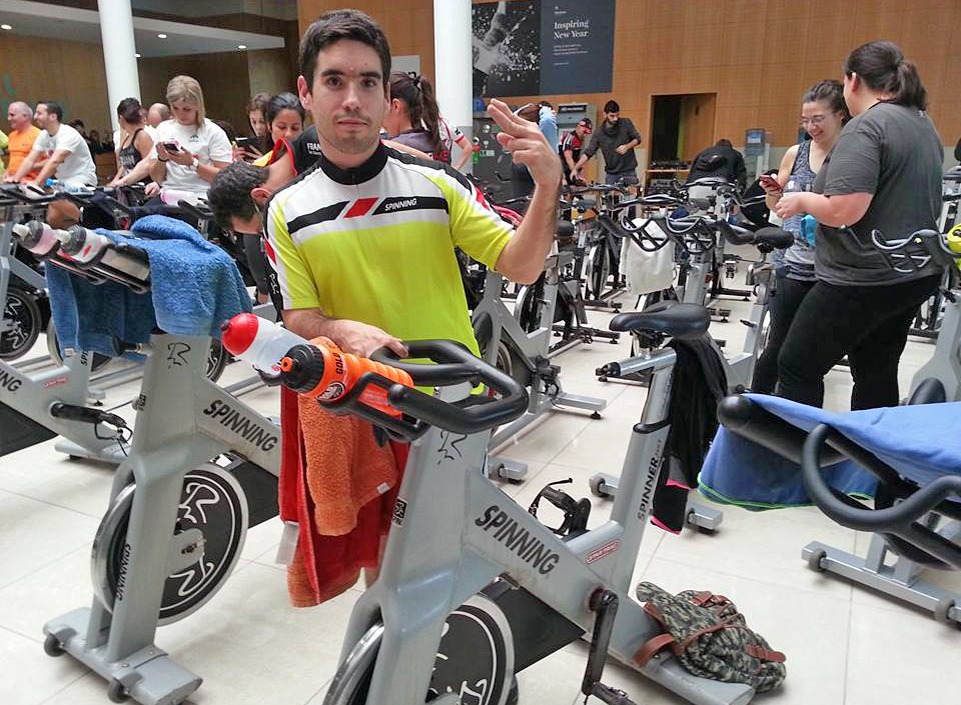
Where do you instruct classes?
Portuguese law says I can’t teach full-time in a gym – I can only cover other people’s classes when they aren’t available – so I don’t have regular slots, but I do teach in a number of gyms close to my home.
Mine are always freestyle classes, designed and built by me in accordance with the rules of the Spinning programme. I believe having fun is very important, but training with awareness and purpose is even more important, so I always have a clear training objective in mind and I choose the music accordingly.
I also make sure I use popular songs from the radio and I factor in participants’ music preferences; I tend to cover afternoon class slots when people are tired from their day’s work, and great music is an excellent way to keep them motivated.
What’s your secret to motivating members?
I’m very much myself on stage. I think that’s so important, because members can really see and experience the passion I feel. That’s the most important thing any instructor can bring to a class: passion. When you have a passion for what you do, half of the work is done already, because participants feel it and it boosts their own motivation.
“When you have a passion for what you do, participants feel it and it boosts their own motivation”
I also invest in regular Continuing Education. It’s very important to keep learning if you want to inspire people.
Another tactic I have is simply to say: ‘If I can, so can you!’ The fact I have cerebral palsy and yet I’m an instructor… I have no doubt that inspires members who attend my classes. I’m sure it encourages them to leave the studio thinking differently.
Because indoor cycling can be tough. When people try it for the first time, they don’t think they can take it. When they attend my class, though, it changes their way of thinking. They realise they can take it and they become regular attendees.
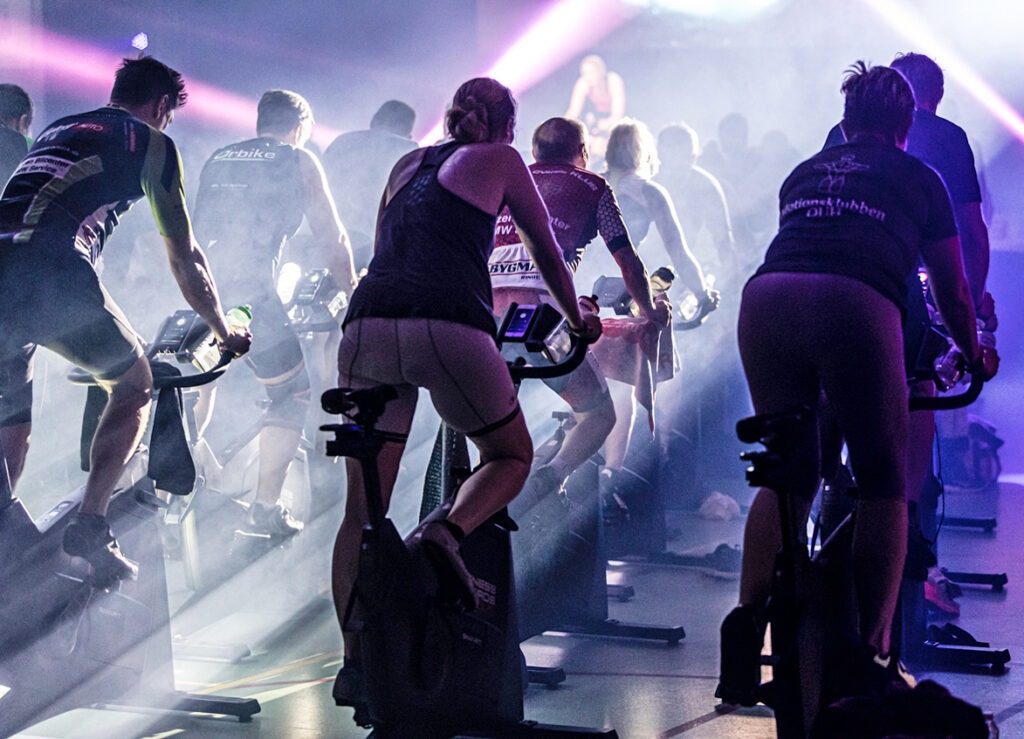
How do members respond to you?
What I try to bring to the gym goes far beyond the workout. It usually starts right at reception, when they tell the members I’m going to teach. People’s reaction tends to be a question: “You’re coming to work out?”
I don’t find it strange – it isn’t every day members have an instructor with cerebral palsy leading the class – but what I want is to open people’s minds and show them that limitations need not render anything impossible in our lives.
What’s your advice to those with similar conditions to yourself?
Indoor cycling is a great form of exercise for people with physical limitations, but do first seek advice from a properly certified instructor, to discuss what adaptations may or may not be necessary.
Then, when you start, never give up, no matter how hard it is. Even the things you find difficult at first will become easy over time.
Whoever you are, if someone tells you something is impossible, substitute the word ‘impossible’ for ‘possible’ and prove them wrong!
Are you vocally fit?
“As fitness professionals, we learn about almost every muscle in the body,” says Susie Millen, cycle master trainer for Third Space and founder of My Vocal Fitness. “Rarely, though, are we taught how to use our voice or a microphone effectively.
“The result: instructors across the planet aren’t vocally ready to teach the volume of classes they’re timetabled to deliver each week. Their voices are tired and they’re finding instructing an effort. They’re struggling to project their voices and be heard. In some cases, they’re developing vocal injuries such as swelling of the vocal folds, nodules or polyps. Their voices are unreliable, deteriorating, even lost.
“There’s no reason why, vocally at least, you can’t teach 20 classes a week. You just need to do the right things for your voice. ”
“As a freelance instructor – as so many are – that’s a massive issue, because it’s impossible to work if you’ve lost your voice.
“This is why I created My Vocal Fitness: to teach instructors to look after their voices, helping them achieve longevity in their careers as well as providing a better in-class experience for participants.”
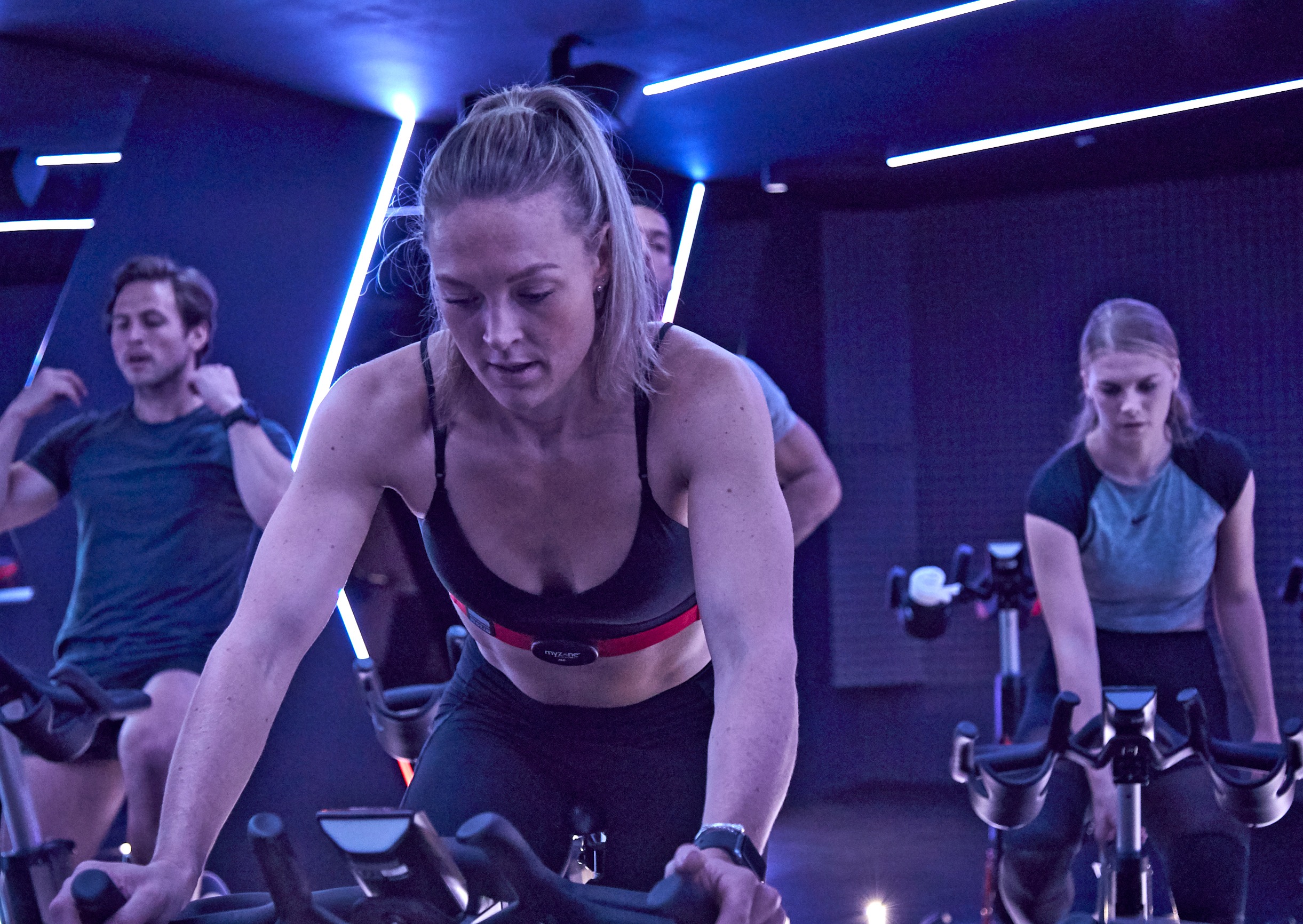
A universal problem
She rewinds the story: “My own vocal journey began seven years ago, when I was working at the dynamic XYZ cycle studio in Hong Kong. After a while, I noticed that colleagues were complaining of vocal strain, or even losing their voice, and were having to take time off for vocal rest. Instructing up to 15 classes a week as I was, I was beginning to feel the same.
“But there was nobody to go to for advice. If you’re a singer with voice issues, you can go to a singing teacher. If you’re an actor, you go to an acting coach. But there was nobody providing vocal education for fitness instructors. I realised there was a gap in the market.
“I began working with Amanda Restivo, a voice coach who taught me how to warm up my voice before class, as well as giving me an insight into what’s vocally safe to do as an instructor if you have a healthy voice versus an unhealthy one; even if you have voice issues, there’s generally something you can do to help.
“I then applied this new knowledge, plus the skills I’d learned during singing training at dance college, to my own vocal fatigue. The results were dramatic, so I created a workshop for my colleagues in Hong Kong and the feedback was incredibly positive.
“You shouldn’t have to speak at more than a normal conversational level in class. Your mic is your best friend!”
“My next step was to find mentors who could help me develop my concept, and after a year – by which point I was in London – I finally found The Vocal Process. These two individuals, Gillyanne Kayes and Jeremy Fisher, had a background in singing, but were able to explain the differences between preparing to sing versus preparing to speak. They helped me understand what was going wrong in the GX studio and how to address it.
“Bringing together their singing expertise with my group exercise experience, we developed a range of exercises, warm-ups, tools and skills to create an interactive workshop specific to the needs of GX instructors. My Vocal Fitness was born.”
Be vocally ready
She continues: “At My Vocal Fitness, I create personalised vocal plans for instructors to help them prevent vocal strain and injury. Equally, if you already have vocal problems – if you have nodules or polyps, for example – I can give you techniques that are safe for your voice.
“We talk about vocal warm-ups and cool-downs. About how to use a mic. We talk a lot about volume control. I make it relevant to the instructors’ classes and the type of language they use.
“Ultimately, my belief is this: there’s no reason why, vocally at least, you can’t teach 20 classes a week. You just need to do the right things for your voice, and that starts with the following five tips.”
“If you’re a singer with voice issues, you go to a singing teacher. But there was nobody providing vocal education for fitness instructors”
#1 – Warm up
“My main piece of advice: you have to warm up your voice before class. You need to bring your vocal chords together gently in a way that’s relevant to you, playing with your range using certain sounds and words that you use in class. It really only takes five minutes – I do it while I’m setting up for class – but it’s been a game-changer for me and everyone I’ve worked with.”
You can view a vocal warm-up demo from Millen here.
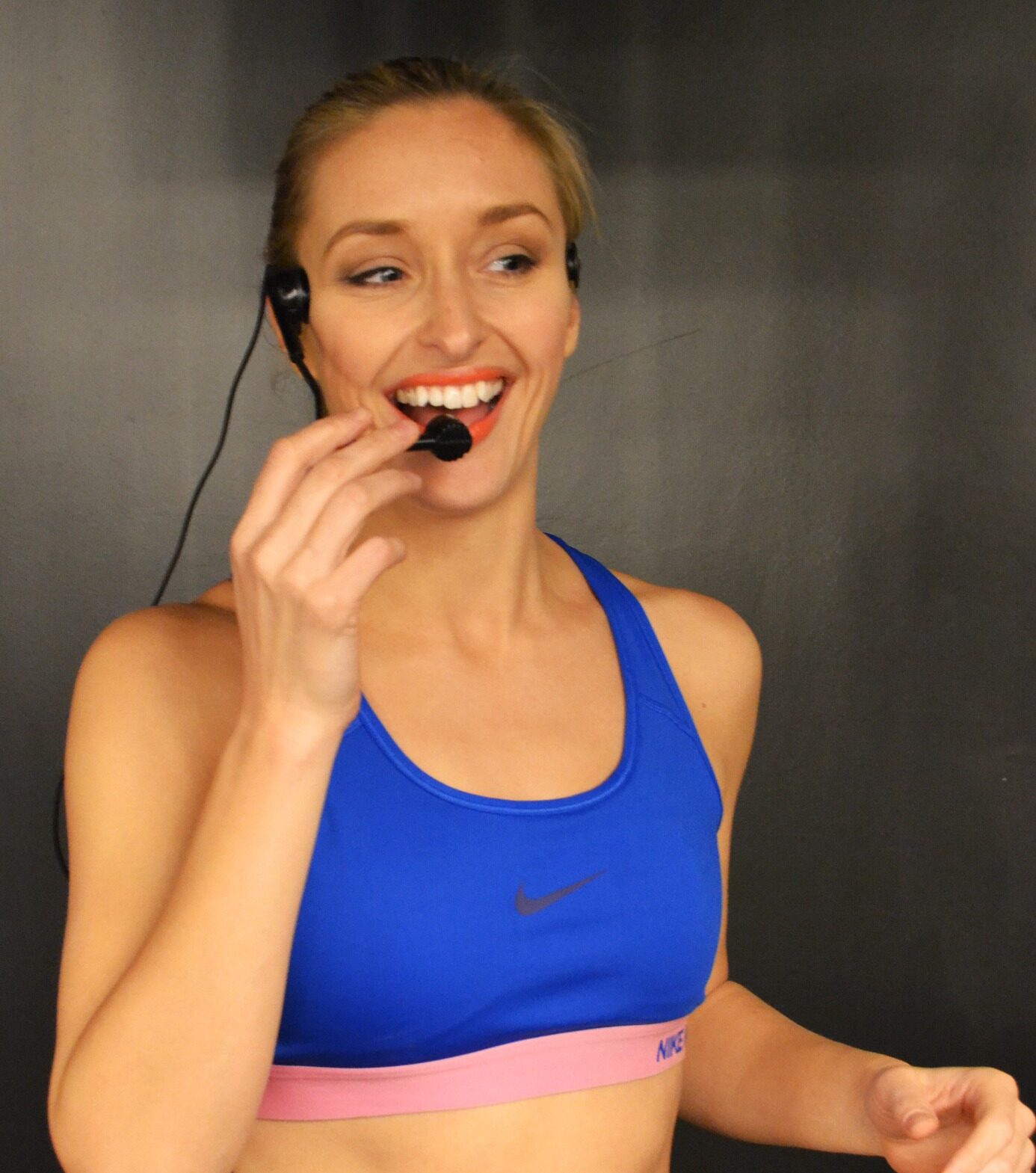
#2 – Avoid shouting
“Shouting should be avoided at all costs, as it places huge strain on the voice and isn’t sustainable. It’s easier said than done – shouting is a natural instinct in a noisy environment when the music is pumping, and/or you’re delivering a class via Zoom and you’ve stepped back from the screen – but you shouldn’t have to speak at more than a normal conversational level in class.
“With that in mind, your mic is your best friend! Let it do the hard work. Personally, I wouldn’t work for an operator who didn’t provide a reliable mic, but if you do find yourself in that position, I’d suggest it’s worth buying your own.”
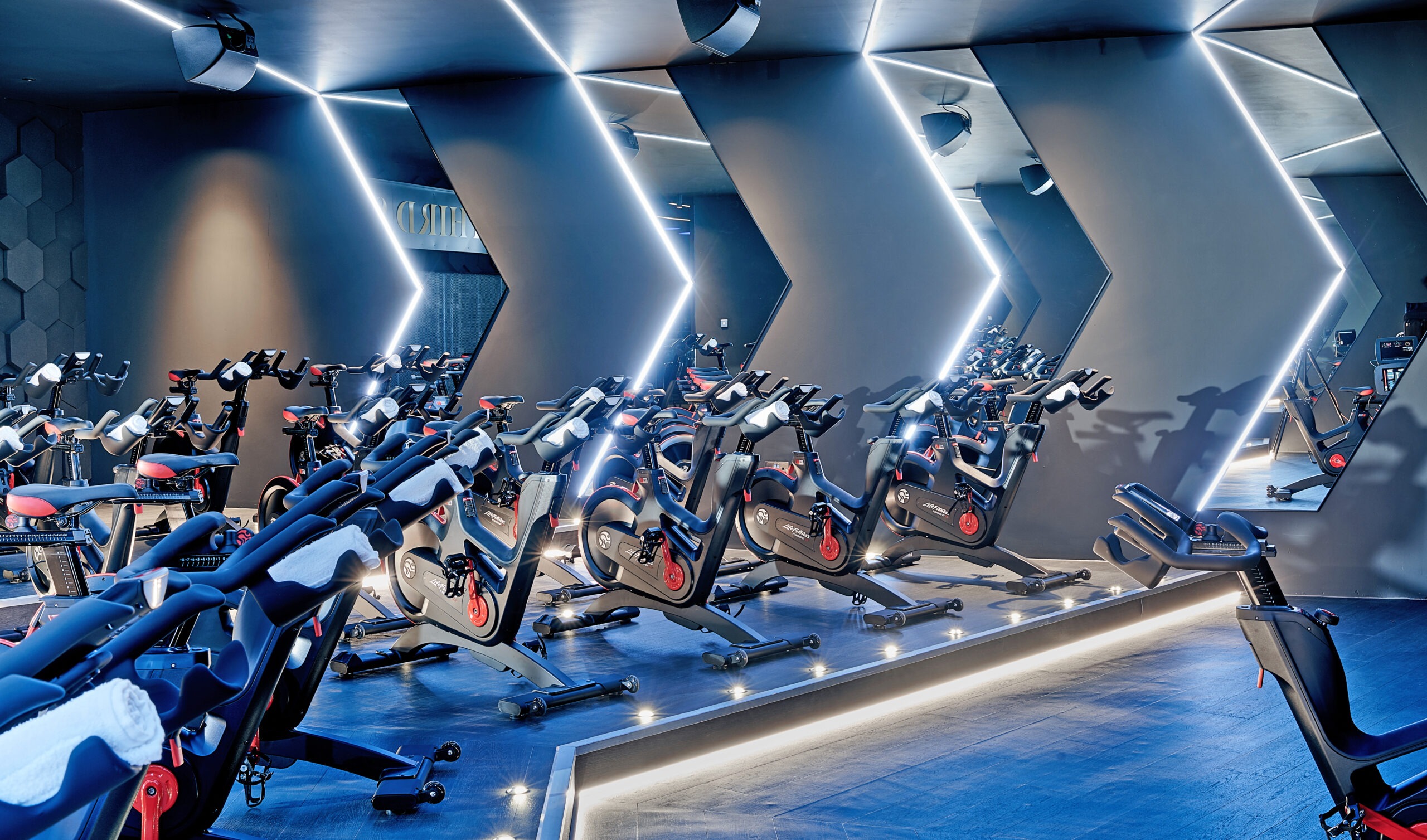
#3 – Speak melodically
“Inject melody into your voice – highs and lows, light and shade – rather than speaking on only one or two notes, which we call monotone. This isn’t just better for the member experience, making your words more engaging, but also makes you less likely to shout. Because when we shout, we shout in monotone.”
“Instructors aren’t vocally ready to teach the volume of classes they’re timetabled to deliver”
#4 – Know when to speak
“This one sounds so obvious, but you’d be surprised how often it gets ignored: know your music. Specifically, know when the lyrics kick in and avoid speaking at the same time. There are definitely good and bad times to speak in class, and trying to speak over the top of lyrics makes it more challenging to be heard and puts more strain on your vocal fold.”
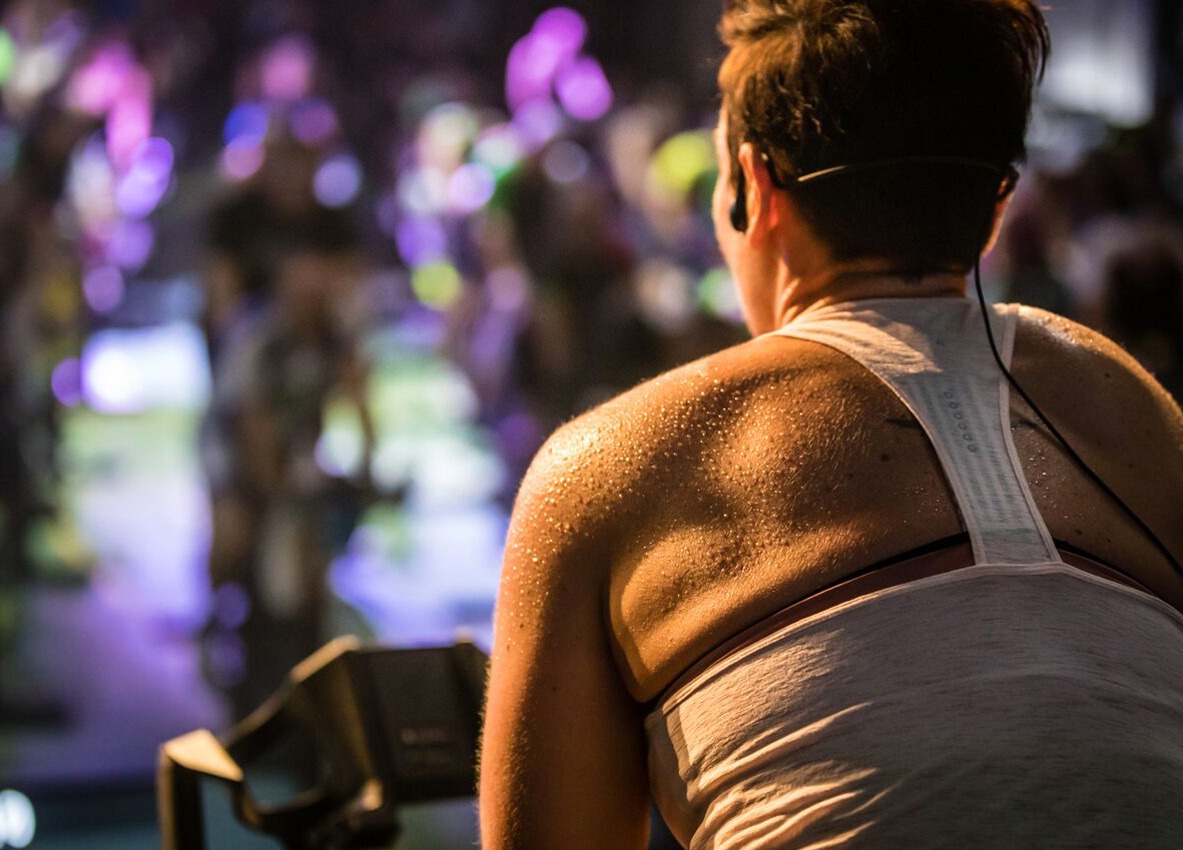
#5 – Keep drinking
“Drink plenty of water. Take some with you into class. Your vocal chords need to be moist to vibrate properly, and they won’t be if your whole body isn’t properly hydrated. Drink water to save your voice.”
Tim Graham
What’s the story behind Integrity?
In 2005 – aged 35 and not having exercised since my teens – a friend got me into group exercise at a big box gym. I loved it. By 2007, I’d qualified as a Body Pump instructor, and by 2009 I was instructing RPM too.
By 2010, I was looking for more of a creative outlet and got into freestyle classes, then in 2012 I decided to break away from the big box gym environment. I wanted more of a connection with the people in my classes: to know names and stories, not just faces.
I joined forces with a few friends – in fact, there were 15 of us when we started! – to create Integrity. The name is inspired by the word ‘integer’, which means a whole number, undivided, a thing that’s complete in itself. That’s how we see group exercise: a strong community where you all come together as one. A real club.
We launched in 2012 with some pre-choreographed classes – we were the first in the state of Victoria to offer Les Mills GRIT and SPRINT – and then, in 2017, started getting more creative, adding in things like TRX, yoga and MMA.
By 2018 – although we do still offer barbell and conditioning classes to meet member demand – we’d reined it back in to focus on cycling as our bread and butter, including another first: we were the first club in Australia to launch Intelligent Cycling.
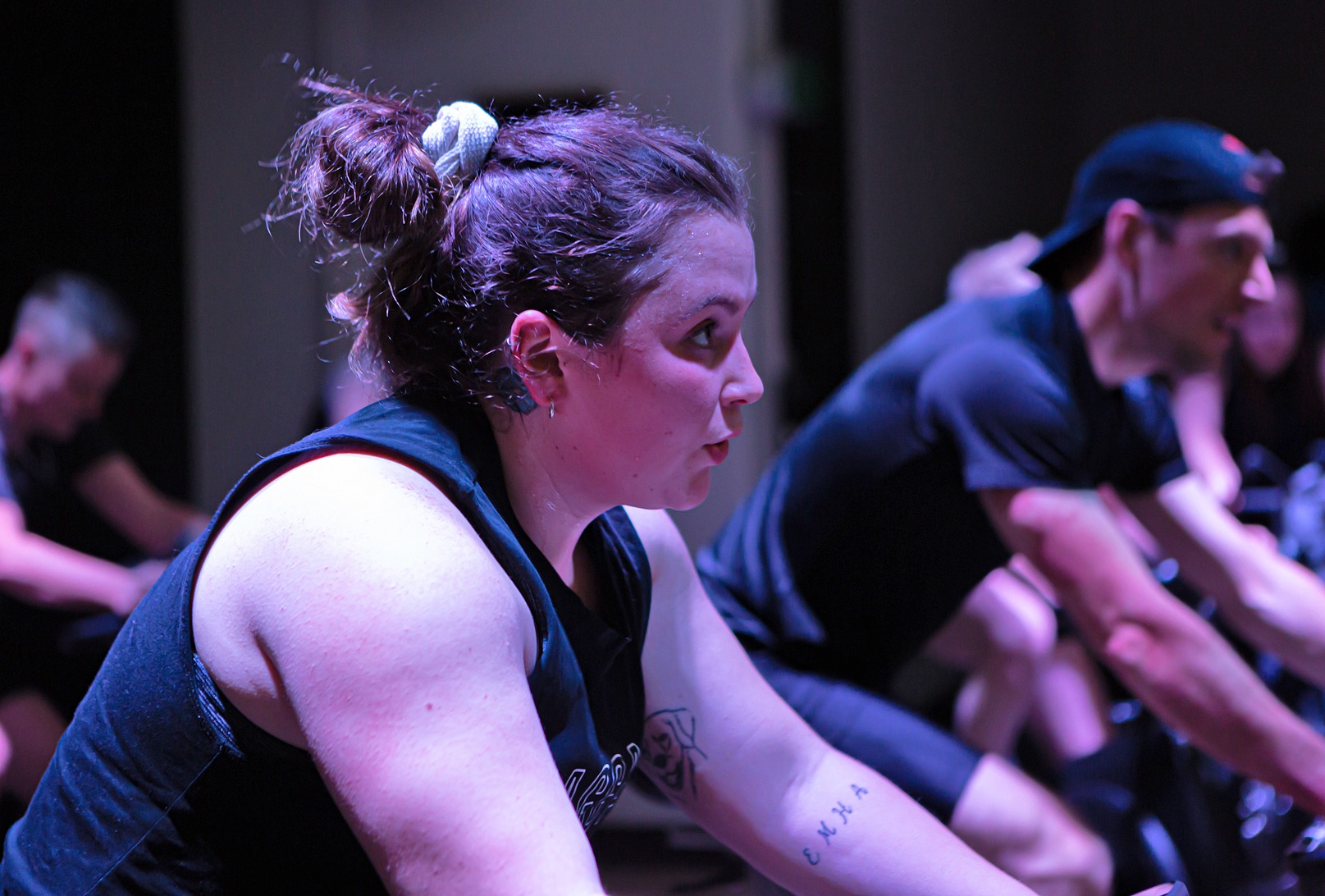
We’d also begun to offer more experiences, including rooftop rides and member road trips where we check out other studios and classes further afield. It’s all about building that sense of involvement, belonging and community.
What programmes do you offer now?
We run around 20 classes a week; if they sell out, we add more. Of these 20-ish classes, around 80 per cent are cycling, which I’ve recently categorised into four groups.
The first is Rhythm, which spans all our ‘intervals choreographed to music’ formats. We’re all qualified Spinning instructors, so that shapes some of these classes. But we’ve also signed up to A STATE OF RIDE (ASOR) which, although pre-choreographed, offers a reasonable level of flexibility.
The second category is Immersive, which includes Intelligent Cycling’s The Journey – where you cycle through a virtual world on the big screen – and our LIT! class, which I’ll tell you more about in a minute.
Thirdly, we have HIIT, which at the moment tends to be either intervals or time trials. We often use Intelligent Cycling here, too, putting the timer or performance stats on-screen. People love knowing what’s coming up next so they know how hard to push, plus we’ve found younger members in particular really engage with anything that involves a screen.
“Our members are hugely loyal. If you think about watching the soccer, with the home fans going mad behind the goal, that’s our members”
And finally, there’s a category I’m calling Competitive, which we’re still developing. We’ll definitely be bringing Zwift into the studio, though, creating an experience that uses our big screen as well as members’ phones. It could be power profile training – something we might even charge a premium for – or it could be more about social Zwift races. I don’t know yet. I don’t tend to design something and then build exactly that. My creative process is more like painting, where you start putting things down and then keep experimenting and building on what you’ve done until it’s finished.
Which are your most popular classes?
Around 80 per cent of our cycling classes fall into the Rhythm category. We offer the other stuff too – scattered throughout the week to hit different day parts and different members – because if you do group exercise for long enough, you will get bored and you’ll want some variety. But I think Rhythm formats – and, for that matter, cardio in general – have had a bad rap over recent years. It’s actually a really nice, low-tech disconnect – away from measurement and numbers and visual overload – and it’s still our main focus.
Our rooftop rides are especially popular, selling out every time. We only do them once a year though, at the beginning of spring, because taking bikes to the top of the tallest building in town is no small task!
Why aren’t all your classes freestyle?
You need experience to deliver a great freestyle class, and there are only three of us original founders left. For any new instructor coming in to the business, it’s great to have pre-choreographed content – ASOR – to learn the ropes. You can then move on to Intelligent Cycling, where you get to choreograph but don’t have to remember it all as the system prompts you, before progressing to freestyle.
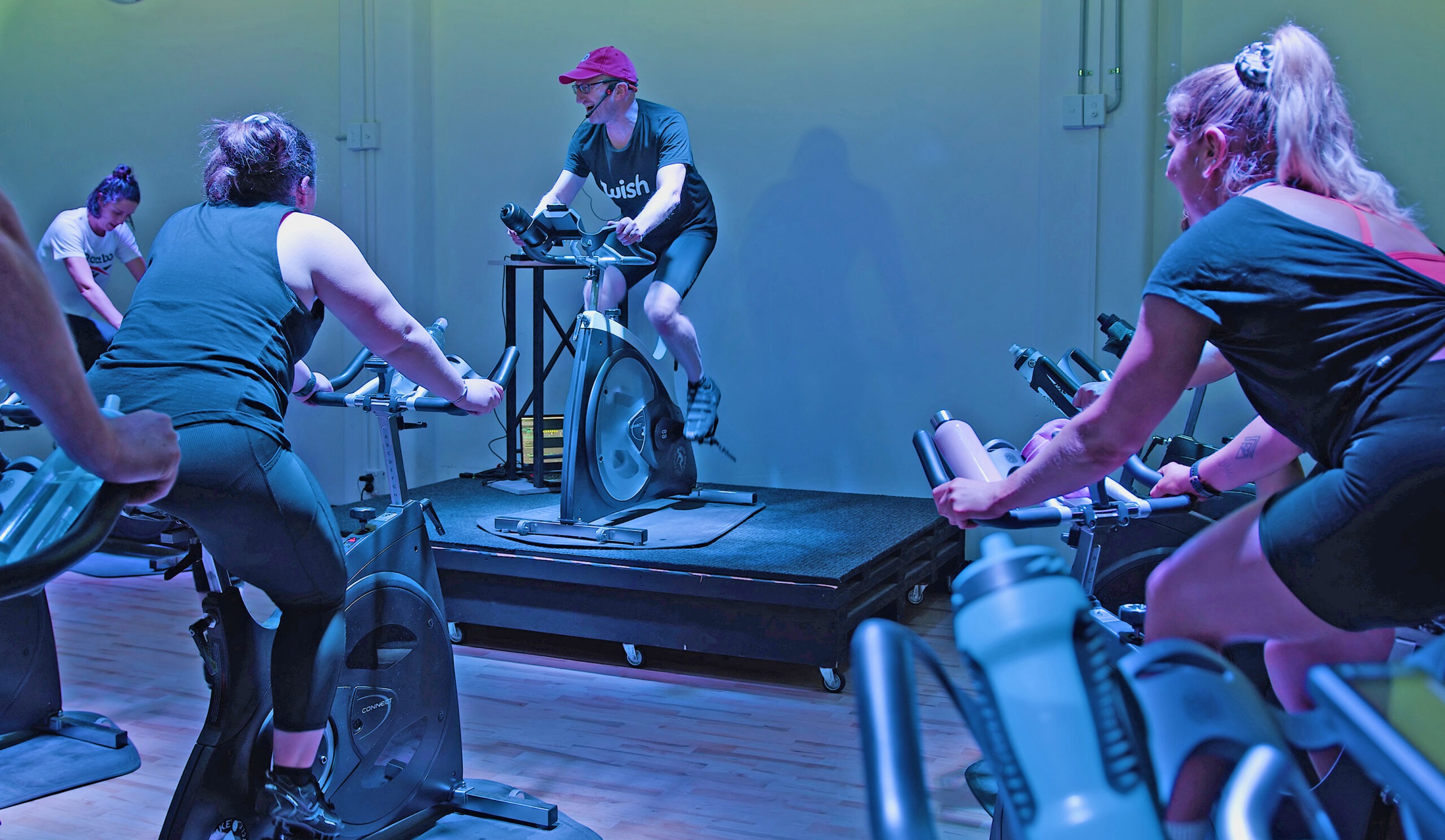
Intelligent Cycling, to me, is almost perfect, not least because you choose your own music. I carefully match music to the virtual world we’re cycling through. For the aerial world with the dragons, for example, I choose very cinematic music mixed with rap for contrast. For space, I pick space-themed songs mixed with futuristic techno music. For the dinosaur-filled jungles, I choose world music, bongos, digeridoos.
I’d like a bit more scope to dictate the content of the virtual worlds themselves, but the Intelligent Cycling team tells me I’m more creative than the average customer! Some of my ideas have landed, though – the road now sets on fire when you’re in the highest zone, for example, which was my suggestion – so I’m going to keep chipping away!
Your members also influence your music choice. How?
I’ve created something I call ‘Algorhythm’, which allows members to influence the music in class without directly asking me to play a specific track, which likely wouldn’t be right for a cycling workout.
Any member who uses Spotify gives me the playlists it suggests for them based on what they’ve listened to – Discover Weekly, for example. Algorhythm then puts all these tracks through an algorithm I’ve set up – a ‘what I think works for indoor cycling’ filter – which uses information Spotify can tell us about each track: its energy, dance-ability, how acoustic it is, how instrumental, how happy…
Off the back of this, Algorhythm automatically gives me a weekly shortlist of 100 songs in Spotify – songs that will appeal to members and that will work for indoor cycling. I listen to them and hit ‘like’ on the ones I want to use; I normally keep around 10 per cent. In this way, our members contribute to the music at the club just by listening to Spotify.
Over time, the AI behind Algorhythm also builds up libraries of my ‘liked’ songs that match specific criteria: high-energy, instrumental, 80 RPM intervals and so on. It means I can easily find exactly what I need, knowing the members have also recommended it and I like it.
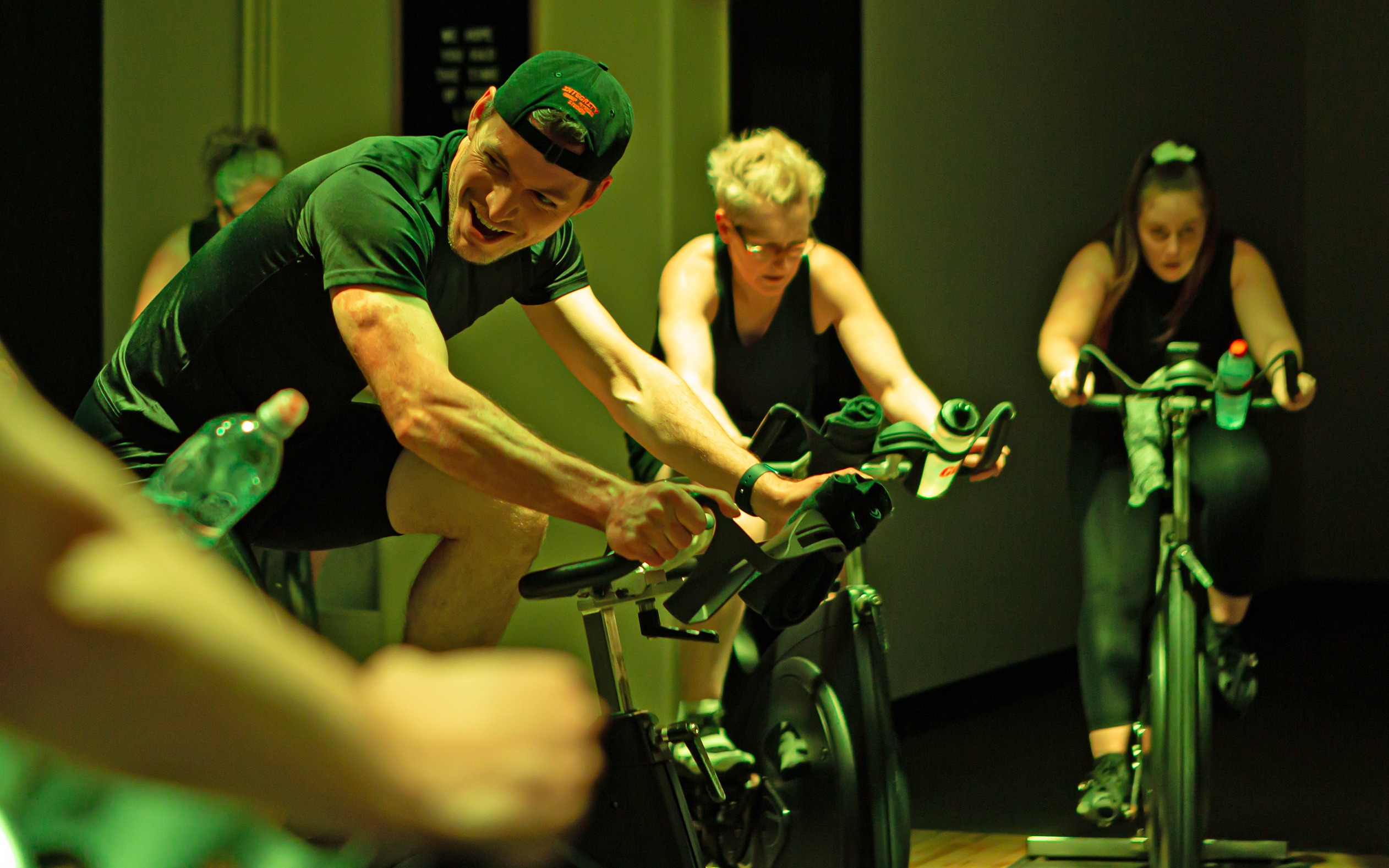
It’s transformed our approach to music and our younger members in particular love it – good news, as attracting younger members was a key driver. Older members are 50/50, but only because they miss tunes that have become familiar. They’ll get new favourites soon though – we only launched Algorhythm this year – because older tracks still get through. It’s purely about how a song feels. It’s nothing to do with genre, era or artist.
I can see us commercialising this system in the future. The filter would probably just need to be set up differently for each club, as everyone will have a different view on what makes for perfect indoor cycling music.
You’ve created your own AV system too. Tell us more.
I’ve always found lighting systems to be a backdrop or even a distraction in-class, but felt they could be so much more. I then had a dream about a class with fantastic lighting and I started looking into what I’d need to do to make it happen.
Most lights cost around A$600 each, but I found some for A$30 each on one of those bargain websites and bought 60 of them! I had them all on my kitchen table, trying to figure out how to use them, and found some equipment that allowed me to synchronise the lights to music.
I also found a guy in the US – a lighting director in a church where they regularly had Christian rockbands with thousands attending – and he’d written his own software for the lighting. I bought it, and it allows me to send specific instructions to each individual light for every split-second of every song: when to pulse, strobe, what colour to turn and so on. We have around 5,000 data points flying around the studio for every split-second of music.
We created the whole system for A$3,000, plus A$2,000 for a new computer, with members funding it entirely with donations just because they knew it would be great. The tradespeople among our membership then helped me build it into the studio.
“It takes around 15 hours per song to choreograph the lights to the music, so we only do this for our LIT! class, which we treat more like an event than a normal class”
It takes around 15 hours per song to choreograph the lights to the music, by the time you’ve worked out what you want the lights to do, then programmed them to do that. So we only do this for our LIT! class, which we treat more like an event than a normal class, running it about once a month. We use the same soundtrack and lighting choreography for about six months, putting LIT! in different places on the timetable so different members get to experience it.
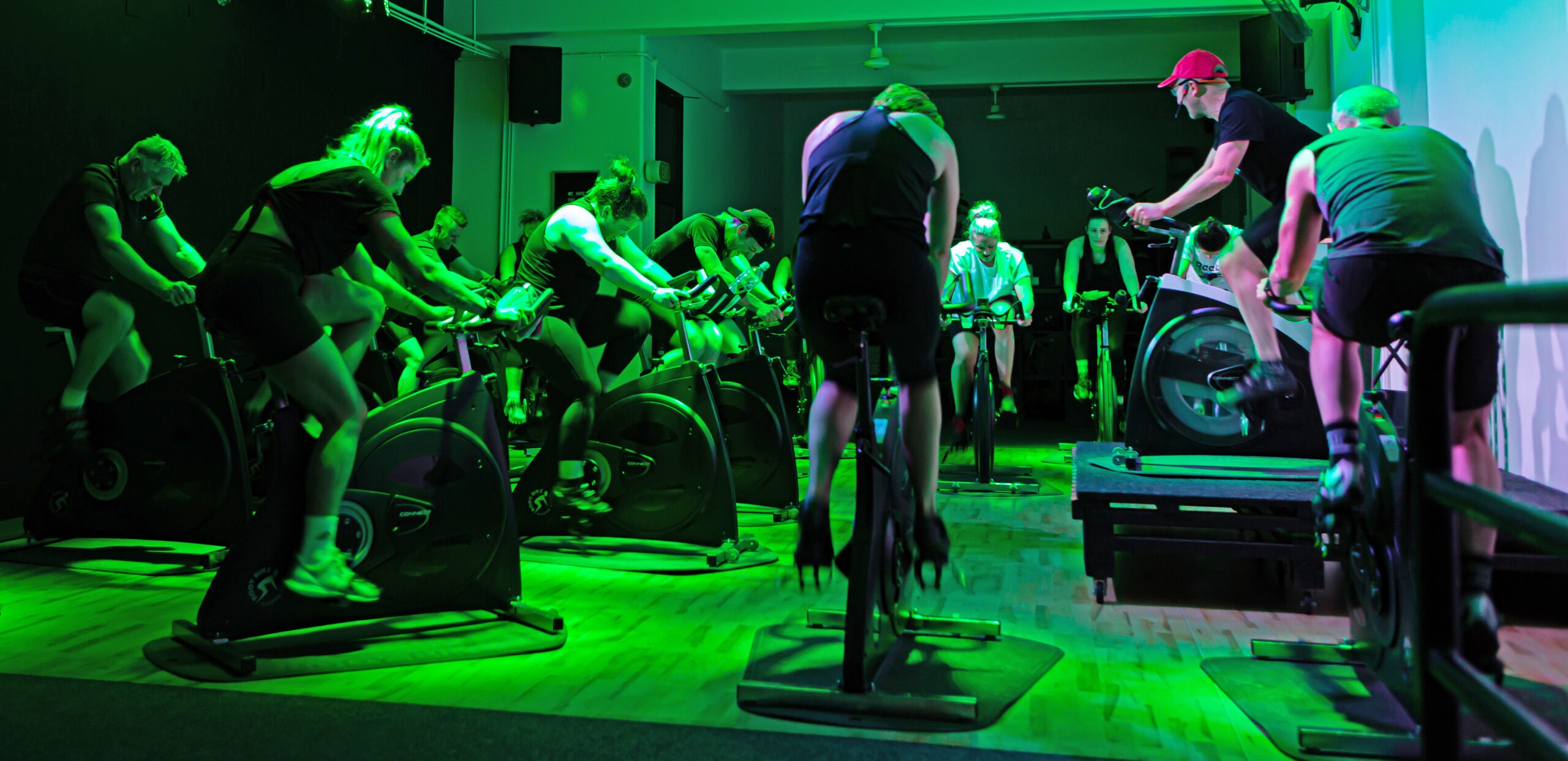
I deliberately pick songs with lots of interesting elements I can attach lighting to – drops, fade and explode, cool sound effects, strong snare drum and so on – so the lighting becomes almost as important as the music. It’s a really immersive experience.
Tell us more about your community.
We’re tiny. We have 150–200 members visiting our 200sq m studio in the basement of a building, with classes typically catering for 15–20 people. But our members are hugely loyal. The way I talk about them: if you think about watching the soccer, with the home fans going mad behind the goal, that’s our members!
Most sign up to an unlimited class package, which at A$40 a week places us in the mid-market. And they get really into it. Some people come a couple of times a week, some six or seven, but our average is around four weekly visits per member.
Ballarat is hugely competitive for fitness, so it’s hard to get new people in, but we fill lower performing classes using a pay as you go model. Many of these customers ultimately convert to membership.
If people are new to cycling, I’ll spend some time one-to-one with them, getting them to sit on the bike and pedal while they chat to me. We’ll then talk about riding to a rhythm, standing in the pedals and so on, and I’ll tell them when they’re ready for class. Ours isn’t a huge club, so I don’t spend too many hours a week doing this, but if you throw someone straight into a class and they have a bad experience, they’ll never come back. You have to look at the potential lifetime value of each member. You have to invest in their future membership.
In the process, I get to know all about them, their families, their dogs! It builds community and is a good model for a small club like ours.
And when we’re in class together, it really is a community. Old or young, we’re in it together. Actually, I think our older members enjoy the energy the younger ones bring.
And we have managed to get younger people in. This generation is so swayed by Instagram, they feel they have to look perfect. We focus on providing a ‘pressure off’ experience – we’re clear you don’t have to be superhuman at Integrity – and we’ve gained a few what I call ‘refugees’ escaping that pressure they felt at other clubs.
How have you fared during COVID?
We’ve had five lockdowns now: one big one and then a series of shorter ones. The fifth ended today [interview conducted 27 July 2021] so we’re back to class tomorrow.
So far, though, we’ve been OK financially. All our members have carried on paying throughout – they’ve wanted to do whatever they could to support us – and we’ve had some assistance too.
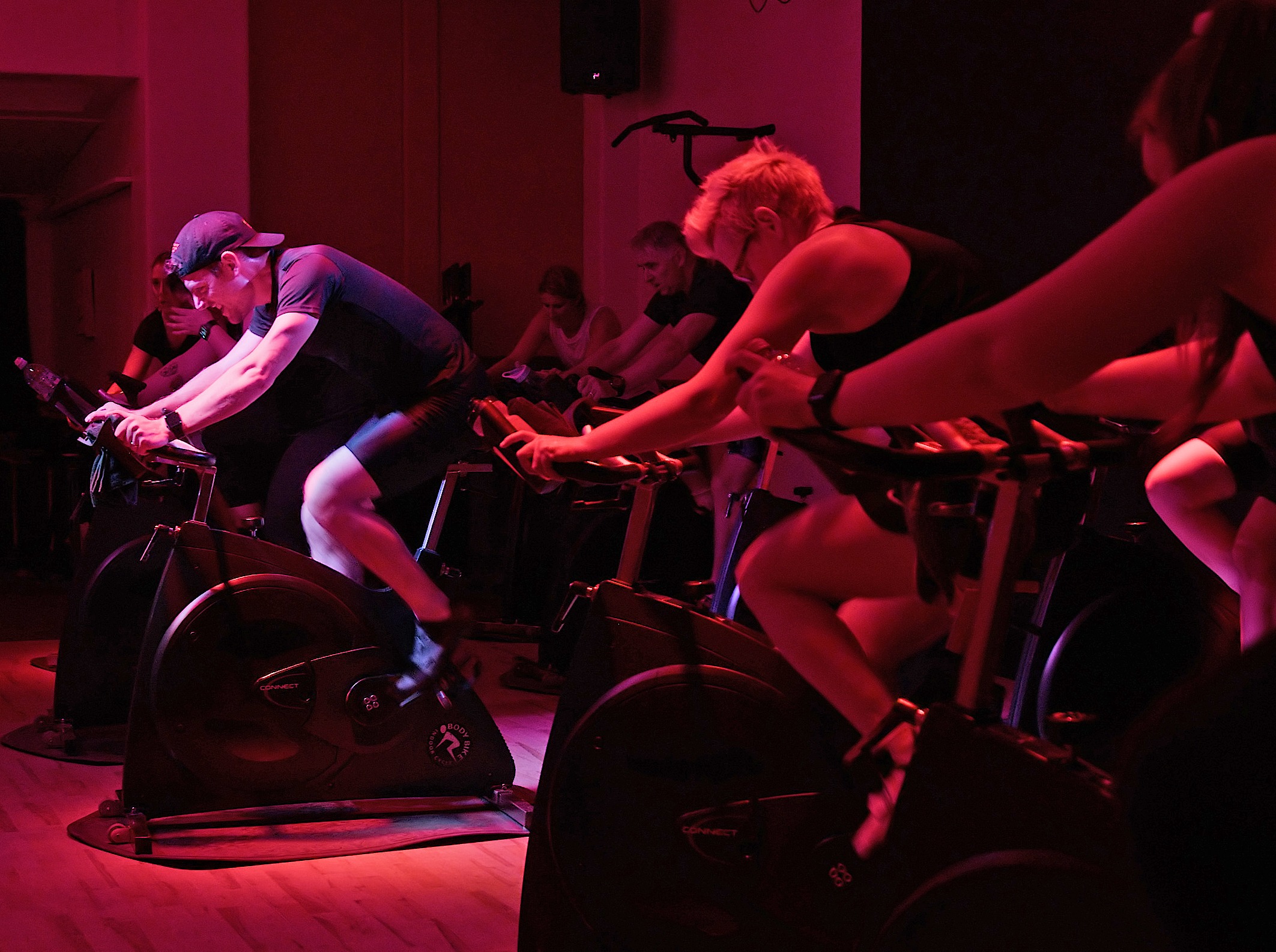
On day one, we sent equipment out to everyone who wanted it, from bikes to barbells. Others were happy doing yoga, so only needed mats. And some wanted to buy their own bikes; I got them a good deal with BODY BIKE and put the bikes together for them, delivering them to their houses.
Days two to four, we set ourselves up to live-stream using a platform called dacast.com, where you can live-stream to a schedule in a password-protected area behind your website. That allowed us to take advantage of a six-month music streaming licence from OneMusic Australia, so we didn’t fall foul of any music rights – one of the biggest headaches with online provision. We’ve live-streamed our way through every lockdown.
“We’re clear you don’t have to be superhuman at Integrity and we’ve gained a few what I call ‘refugees’ escaping that pressure they felt at other clubs”
Then each time we’ve re-opened, members have come straight back, even when all we could offer were classes in the car park. Honestly, I think they’d come back even if we were just doing runs up and down the street! And when we were able to move back indoors, we were pretty much back to normal: our classes have always been small, so our capacity has been unaffected by COVID restrictions.
What are your plans for Integrity moving forward?
Everything we do works, but it’s bootstrapped. I’d love to streamline our AV so the systems are easy for everyone to use, not just me.
I’m looking into video mapping, potentially putting 3D objects – big spheres and things – into the studio to project video onto.
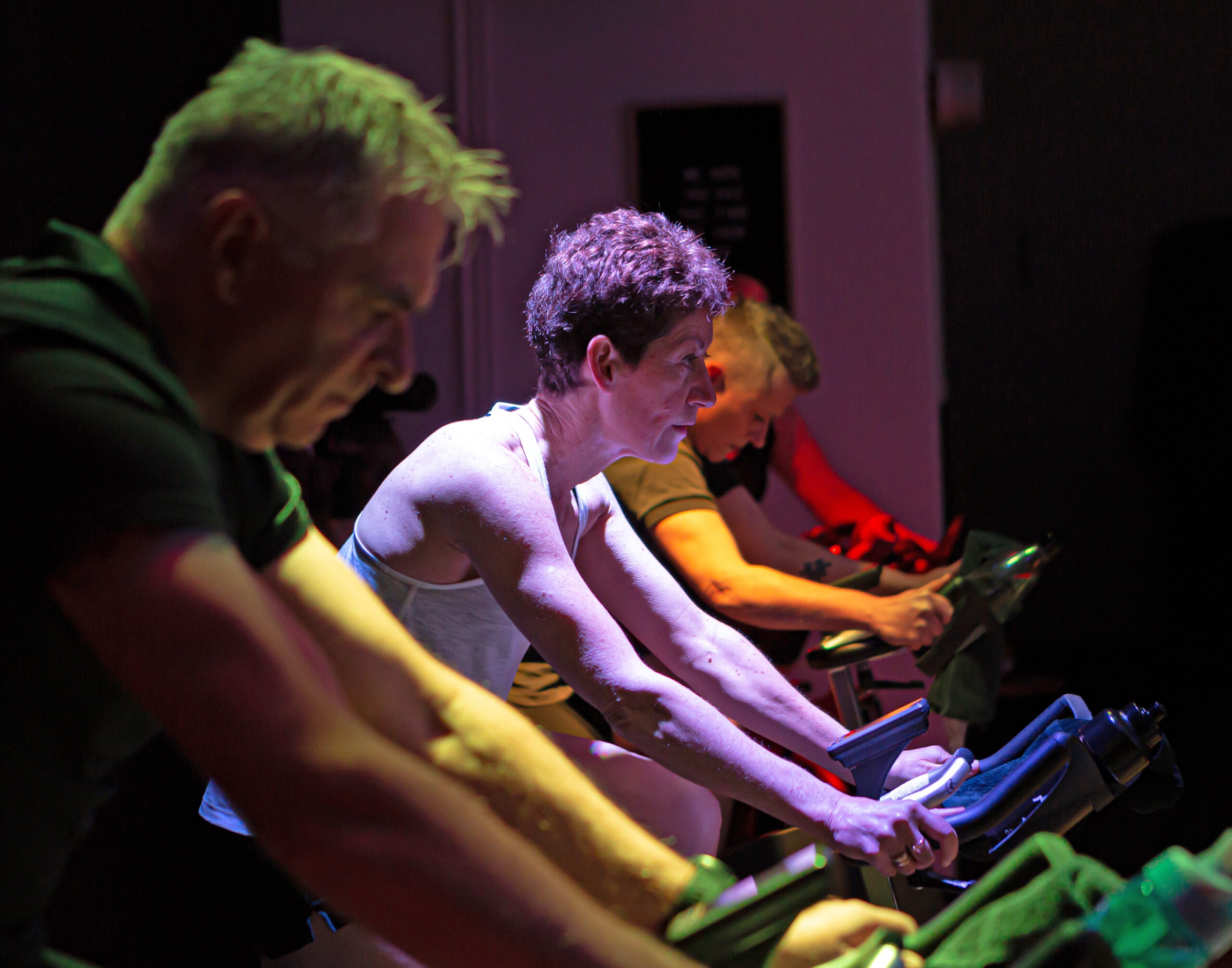
And I’d love to get a bigger, high definition screen. We have a 4m projection system at the moment – the projector we got for free from a local school that was closing down – but I’d love to upgrade that system to make it even more immersive.
I also want to see how far we can take the immersive side of things. Each bike has a spotlight above it, so what if we could link our lighting to individual cyclists’ wattage or cadence? If we can, it paves the way for games during class where performance data controls the lights in a fun, competitive way.
We could have red versus green teams in a sprint, for example, where you have to sprint when the light above you turns white; your turn ends when your wattage drops too low and your light turns back to red or green. Or we could do ‘tug of war’, where if you aren’t pedalling hard enough you’re lost to the other side and your light changes colour to bring you into their team.
There’s so much I want to explore. I just have to find the time! And I’d love to see the rest of the indoor cycling sector follow suit. Why should everything be controlled by a few big global organisations? Let’s get creative as a community, trying new things out and seeing what flowers.
A Common Purpose
As we put the finishing touches on this edition of RIDE HIGH, I find myself reflecting on the recent UEFA EURO 2020 football championships. What a competition it was!
After a prolonged period of on-off lockdown, the sheer presence of crowds in the stadia was enough to lift the spirits – a coming together of people and passion that was made even more special by the fact it had been so long coming. But being a Dane, this tournament was a particularly emotional one. I’m referring, of course, to the match against Finland, where our midfielder Christian Eriksen – aged just 29 – collapsed on the pitch having suffered a cardiac arrest. The story thankfully had a happy ending, but the event sent tremors across our nation. The impact on the team was perhaps even more marked. All of a sudden, they were playing for Eriksen. The supercharged team spirit was palpable, their performance a masterclass in the power of shared purpose. They may not have won the tournament, losing to England in the semi-final, but they won hearts and brought great pride to our country.
I see certain parallels in the world’s response to COVID. In the face of adversity, of lives and livelihoods lost, we – families, colleagues, organisations, entire nations – have pulled together to confront the challenges. In the feature Inspired by COVID, we share just a handful of the stories that have emerged from our own hard-hit sector – tales of innovation and shared purpose that have seen teams survive and even thrive in times of crisis. We hope you will find them as inspirational as we do.
As we now move towards that long-awaited light at the end of the tunnel, it feels like the perfect time to unveil a new look and feel for RIDE HIGH magazine. We hope you like it! Combined with BODY BIKE’s recent AAA creditworthiness rating and our exciting new BBCARGO venture, there’s an exhilarating spring in our step as we emerge from a tough 18 months. I don’t normally use this page to talk about our company, but when it gives such optimism for the future of our sector – a sector that since March last year has been united in a common, and quite honestly existential, ba.le – it feels right to share. Right now, I couldn’t be prouder: of the team, our company, my country. Of our sector for standing up to the challenges of the past 18 months and coming out stronger.
Uffe A. Olesen
CEO BODY BIKE International

